Read the story of someone like you.
Andy S.
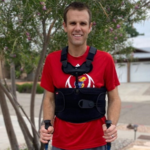
"It was a really hard time, but…I owe an incredible debt of gratitude."
View Story
About Andy
Andy played baseball at the University of Kansas and then taught the sport overseas before returning to his hometown to attend law school. But even after he traded his career in baseball for one in law, Andy kept moving with activities like running, biking, and hiking. In November of 2019, he noticed his legs feeling heavier on his runs. Over the next couple of months, he developed burning and pin-pricking sensations in his legs and eventually his abdomen and chest. After preliminary x-rays and a lumbar MRI offered no explanation for Andy’s symptoms, a thoracic MRI was ordered to rule out anything spine related. Instead, the MRI revealed a spinal hemangioma—a tumor made up of abnormal blood vessels. The tumor was putting pressure on his spinal cord at T7, and Dr. Uribe made it very clear that at some point it would be paralyzing. “The complexity of Andy’s surgery had significant risks, including worsening his ability to walk and even bleeding to death,” Dr. Uribe said. But monitoring the hemangioma over time was not an option either.
Path to treatment
Diagnostic imaging
Life now
Six months into recovery, Andy was cleared for full duty and he described that as “a wonderful day!” But getting to that point was not easy. The reality was genuine struggle through frustrating limitations. When he might normally have been out biking, hiking or playing with his children, instead Andy walked around his neighborhood with the support of a brace and trekking poles. He kept a grateful perspective, however, knowing that without surgical intervention his prospects would have been grim. “Not to sugarcoat it, but there’s another side to this,” Andy said. “Being on the recovery side, it’s just a wonderful place to be.”
Dave K.
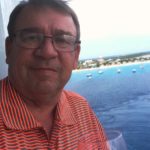
"The same day of surgery I went to move around and it was magical!"
View Story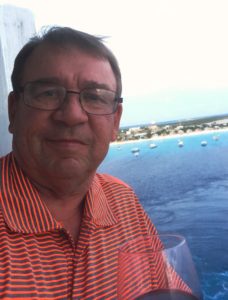
About Dave
Dave has been consistently athletic and outdoorsy throughout his life. Having no family history of back issues, he never expected to suffer from them. “We all hear about the high percentage of people having back trouble, but I completely wrote that off. I didn't have an incident that injured my back, so I never thought that could be me,” shared Dave. Pain in his hamstrings initially led Dave to take muscle relaxants, but they only provided relief for a time. As his discomfort grew, Dave tried other conservative treatments, but suspects he just prolonged his misery. All the while, Dave kept moving as much as possible. “This was six months of suffering! I would take the pain from my past knee replacements any day over the pain I experienced from my back,” he said. After another MRI revealed severe disc extrusion at L4-L5, it was apparent that surgery was finally appropriate. “I had a large disc extrusion at L4-L5…the jelly came out! I was ready to have that surgery yesterday,” said Dave emphatically.
Path to treatment
Medications, physical therapy, chiropractic care, epidurals
Life now
Dr. Martirosyan explained that they removed about 20% of the offending disc matter. Thankfully, the remaining disc height looked good, so no fusion was deemed necessary. Speaking about his recovery, Dave said, “The same day of surgery I went to move around and it was magical. I’m so thankful now to walk vertically. Every pain free step I take every day, I'm just counting my lucky stars.” Prior to surgery, Dave simply couldn’t stand unsupported. He hobbled along the counter in his kitchen, leaned heavily on the shopping cart, and used his cane and four-wheeled walker when other props weren’t nearby. “Out of habit, I reached for my cane at home after surgery, then realized I didn’t even need it,” said Dave, adding gratefully, “I feel very fortunate.” He continues to walk at least 1.5 miles a day, and has added a core strengthening routine with his physical therapist. “My back continues to be just fine, but I am more conscious of what I am doing when my back is involved,” Dave stated.
Lee C.

“When my sciatic pain started, it was very humbling. I realized I wasn't ten feet tall and bullet proof.”
View Story
About Lee: Long before Lee knew he had back problems, he was painfully affected by sciatica in his right leg. As things progressed, he reached a point where he could barely stand for any length of time. He couldn’t even manage the walk from his office to his car without arriving almost in tears. When Lee and his family relocated to Georgia for a new job which would require a lot of walking, he knew he needed to get help. At the first consult with Dr. Ayer, Lee remembers the surgeon illustrating with a spine model exactly what was going on in his body. “It’s like a lightbulb finally came on for me. He spoke with me in normal people’s terms, and made sense out of what I was feeling,” Lee shared. That conversation helped him get mentally and physically ready for the surgery he was facing.
Diagnosis: Stenosis, spondylolisthesis
Path to treatment: Medications, physical therapy
Procedure overview: ALIF L5-S1
Life now: “Recovery was a pain in the back,” Lee said laughingly. He had to wear a brace for a while, and sitting was definitely uncomfortable at first. Staying cognizant of the possibility of chemical dependence, Lee only took strong pain medications for the first five days. After that he managed with ibuprofen and rest. These days, Lee is happily back to golfing and working out every day, and has earned the nickname “bionic man” from his family. Lee summed up his journey simply, “the pain before was life altering for me, but now I have zero issues.”
Chris M.

“I don’t plan on stopping! I just bought a new truck and I plan on using it!”
View Story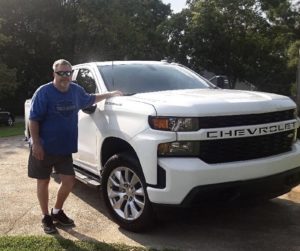
About Chris: By all appearances, Chris was an active, healthy adult. He was an avid hunter and had just landed his dream job doing set work for movies. When he started having trouble walking and lifting his leg into his truck, he rationalized that he’d simply strained his back. About a month later, Chris fell at home without warning. Unable to get up, he called his parents who helped him to the ER. Doctors explained to Chris that a tumor was wrapped around his L4-L5 vertebra, and as a result, that spinal level had become soft and unstable. They were surprised he wasn’t already bedridden, and cautioned that if he fell again his back bone would likely sever his spinal cord. In Chris’s own words, “that was the day everything came to a grinding halt.” One thing led to the next as Chris discovered the root of his issue was actually stage four lung cancer, of which he had been completely unaware. The cancer had already spread from his lungs to his hip, leg, and now spine. Nothing about what unfolded next was simple or easy. Vascular complications and severe blood clots during recovery left Chris completely unable to walk. Weeks later, “an ambulance brought me home on a gurney,” said Chris.
Diagnosis: Spinal tumor
Path to treatment: None
Procedure overview: XLIF corpectomy L4-L5
Life now: Chris recounts that this has been an emotional journey, but he kept a positive outlook even when his closest friends feared the worst. Extensive physical therapy helped Chris go from being completely unable to get out of bed, to walking with a cane for an hour or two without resting! Now he manages his exercises on his own, as well as almost all of his self-care. “It’s up to me to get better,” expressed Chris. Standing up from the sofa without assistance, driving himself to a medical appointment, and taking a road trip with his girlfriend are all “wins” that keep Chris focused on progress and hope. “I don’t plan on stopping! I just bought a new truck and I plan on using it,” Chris shared determinedly.
Henry O.
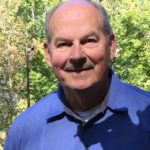
“Now I get to feel young again, to some extent.”
View Story
About Henry: Henry’s lower back problems began roughly two years before he had surgery. During that time, he faithfully completed a host of conservative treatments. His symptoms persisted, however, and Henry felt progressively worse. It became a real struggle to get up in the morning and do life and work as expected. Henry resisted seeing a surgeon because he had heard mostly horror stories about back surgery, but eventually he felt it was the only next step. Juggling several surgical opinions, Henry decided he liked Dr. Raore’s realistic, no-nonsense approach the best. Dr. Raore calmly explained the problem, and while he didn’t promise a total cure, he expressed confidence that the surgery could offer Henry significant relief. Reflecting back on that conversation, Henry said, “I thought it was over for me, so that sounded like hope.”
Diagnosis: Degenerative disc disease (DDD)
Path to treatment: Physical therapy, acupuncture, medications, cold laser treatment, radio-frequency ablation, cortisone injections
Procedure overview: XLIF L4-L5
Life now: After surgery, Henry told himself he would never do that again, whether it worked or not. “When I woke up from surgery, I thought I’d made a big mistake. But the next day, it went away for the most part. I got off the pain meds a couple of weeks later,” he shared. Now he’s feeling “very happy with the whole thing!” Henry eased back into life slowly, with a healthy dose of caution in the first six months. Completing a post-op physical therapy regimen helped him regain confidence that everything was okay in his back. Now he’s back to doing yard work, mulching, pushing the wheelbarrow and all kinds of work around the house. But it’s not all work for Henry! He was elated to share that recently he went out and hit some golf balls, swinging his club like he used to before back pain. He looks forward to playing plenty more golf when the weather cools, so he commits to regular gym time to stay strong and flexible. “Dr. Raore is a very special person. He’s my doctor,” Henry said gratefully. “Now I get to feel young again, to some extent.”
Cyndi B.

“When I woke up from surgery, I could tell he had fixed my back! That aggravating pain I'd had for years was gone!”
View Story
About Cyndi: In 2007, Cyndi was thrown from a horse and broke her right scapula. No one can say for sure, but she feels that the accident may have been an entry point for her back issues. When she sought medical advice for her condition in 2012, she was told that she was overweight and she needed to “get over it.” Determined to help herself, Cyndi reached a healthier weight and tried every conservative treatment option she could. Still her pain defeated her, until it became physically impossible for her to stand up straight anymore. In fact, she remembers humorously that in her first meeting with Dr. Ayer she was awkwardly bent over the exam table when he entered the room, because it was the only way she could get relief. Gently but firmly, Dr. Ayer explained that she had exhausted all her options, and encouraged her to let him know when she was ready for surgery. A self-proclaimed stubborn patient, Cyndi still delayed scheduling her surgery. “I waited so long because I didn’t want to be stopped! I didn’t want to be laid up,” she shared candidly. She was more afraid of hitting pause than the surgery itself. Then one day, sobbing at home in pain, she knew it was time to do the deed.
Diagnosis: Degenerative disc disease (DDD), scoliosis
Path to treatment: Physical therapy, medications, chiropractic care, injections, nerve ablation
Procedure overview: XLIF, PSF L3-L5
Life now: “When I woke up from surgery, I could tell he had fixed my back! That aggravating pain I'd had for years was gone,” Cyndi exclaimed. She was walking within hours of her surgery, and was climbing steps the next day, but that first week was still categorized as “rough.” Barely two months post-op, Cyndi and her husband, Bill, celebrated their wedding anniversary with a trip to the beach. They went sailing, had a grand time, and Cyndi reports that she had no pain at all. She even proudly sported her bikini, unashamed of her new scars. These days, Cyndi is back to being unstoppable. She has made some lifestyle modifications – like no jet-skiing – but is back to walking her dogs, taking camping trips, and best of all, feeling normal.
Barry W.

“Things turned out so good! I’m surprised it did, with all the metal in my neck!”
View Story
About Barry: No stranger to chronic pain, Barry has dealt with rheumatoid arthritis for many years. But his lifelong career as a ceramic and marble installer finally caught up with him in the summer of 2019. After consulting with his RA physician and visiting an Urgent Care, Barry broke down and admitted himself to the local Emergency Room. The unbearable pain made it difficult for him to remember exactly how things unfolded, but Barry recalls it being an easy decision for the hospital to keep him once the initial x-rays were taken. “Something was really wrong, and they could see it,” said Barry. He added gratefully, “That’s when Dr. Seecharan came along and fixed me up!”
Diagnosis: Stenosis, fracture
Path to treatment: No conservative treatments required
Procedure overview: ACDF C3–C4, corpectomy C6, PCF C3-C6
Life now: After a lengthy, complex surgery, Barry remembers waking up “not in a good mood.” Now he can laugh about that initial discomfort, but admits that it was no laughing matter for those first few weeks post-op. Barry jokes that he “cried like a little girl” when he realized he was in a neck brace, worried that it was a permanent situation. Much to his relief, he was up and walking that first day, and began multiple therapies almost immediately. It was a couple of months before Barry was back to driving, but now he has resumed all his usual coming and going. Barry doesn’t notice much loss of mobility in his neck, and what little flexibility he did sacrifice to the fusion he describes as “totally worth it.”
Timothy B.

“Dr. Raore is a magician. He made me a complete person again.”
View Story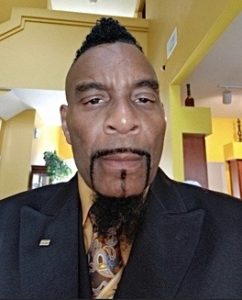
About Timothy: When Timothy first saw a doctor for his pain in 1998, it was news to him to learn that he had pervasive stenosis throughout his spinal column. This began a series of treatments and surgeries that continued through the next 20+ years. By 2017, Timothy was struggling significantly, and the physical work to which he was accustomed became too much of a strain on his back. A strategic career shift helped for a while, but the acute pain persisted and eventually forced him to discontinue his work. One day sitting at home, Timothy couldn’t get relief from an intense pain in his right thigh. His doctor advised he go immediately to the Emergency Room, but before he could make it there, he collapsed at home. Once in hospital, Dr. Raore concluded that Timothy needed emergency spinal surgery. In the following weeks and months, Timothy went through three more surgeries with Dr. Raore to repair the condition of his spine. Timothy bravely endured recovery after recovery, and patiently re-learned to walk with the help of rehabilitation specialists.
Diagnosis: Scoliosis, spinal deformity, stenosis
Path to treatment: Medications, topical ointments, physical therapy
Procedure overview: ALIF, XLIF, PSF T12-S1
Life now: Since 1998, Timothy has had a total of seven spinal operations. When he looked at his final x-ray, his impression was “it looked like a road map!” Timothy’s body certainly bears the evidence of his difficult spinal journey, but he doesn’t focus on that. He celebrates the ability to go out again, to drive, and to walk without a cane. Once more it’s his daily joy to be walked by his two dog companions. Timothy has adjusted well to his new normal, and expressed his healthy attitude about it this way, “If we climbed the stairs together, you’d probably beat me, but I’d absolutely meet you at the top!” He added, “Dr. Raore is a magician. He made me a complete person again.”
Tara K.

“Before this surgery, I was always one head-turn away from a debilitating flare-up!”
View Story
“Before this surgery, I was always one head-turn away from a debilitating flare-up!”
About Tara: Ever since her early 30’s, Tara had periodic incidents of extreme pain in her neck, arms, and upper back, often triggered by the most insignificant movements of ordinary life. Physical therapy and maintaining a healthy lifestyle allowed her to control the situation for many years, but she always felt that she was “one head-turn away from a debilitating flare-up.” Toward the end of 2019, things took a turn for the worse, and Tara’s pain became intolerable. Over the course of the next seven weeks, Tara underwent intensive physical therapy, but to no avail. After consulting again with Dr. Bagheri, both Tara and her surgeon agreed that surgery should be the next step.
Diagnosis: Stenosis
Path to Treatment: Physical therapy
Procedure Overview: ACDF C6–C7
Life Now: Tara reports that she felt fully recovered at about six weeks into her recovery! The first week was the hardest, with a little trouble swallowing, but by the tenth day the only pain she felt was the incision itself. Now, Tara says she’s “doing amazing” and she can’t imagine how different the trajectory of her life would have been if she hadn’t gotten the surgery. Grateful that she can finally do life without the old fear of setbacks from her neck pain, Tara shares her story of hope for the benefit of other patients like herself.
Martha H.

“I’ve had remarkable results!...I’m dancing again!”
View Story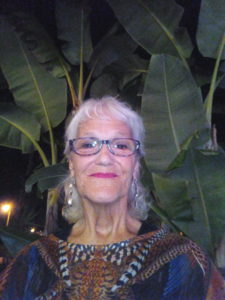
“I’ve had remarkable results! All my pain went away and my urinary incontinence is gone. I’m dancing again!”
About Martha: In 2017, Martha began experiencing numbness and tingling all the way down the left side of her body, from head to toe. She consulted with a surgeon at the time, but felt that she was never told the full gravity of her situation. “I wasn’t given enough information about my condition back then. In hindsight, I should have had the surgery sooner, I just didn't realize it,” shared Martha. In spite of everything, she kept doing life and dancing, little knowing that she was one fall away from possible paralysis. Fear from all the horrible stories she had heard about spine surgery kept her from seeking treatment until her situation began worsening at a rapid pace. When Martha consulted with Dr. Bagheri, her symptoms had escalated to include severe myelopathy and urinary incontinence. For the first time, she had a surgeon who fully explained her condition and the potential risk of permanent damage to her spinal cord. “I’m very lucky that I found Dr. Bagheri,” said Martha. She added, “I am tough. I want to be tough. I don’t want to give in to things.” She expressed how much her surgeon’s candor helped her realize that the time for “toughing it out” was over, and surgery was the next sensible step. “When Dr. Bagheri presented my case to his fellows the morning of my surgery, they all asked, ‘How is this woman even walking?’ My story is a miracle all the way around and I owe it all to Dr. Bagheri,” Martha said sincerely.
Diagnosis: Stenosis, myelopathy
Path to Treatment: Active, healthy lifestyle
Procedure Overview: ACDF C4-C5 and posterior laminoplasty C3-C6
Life Now: Martha says her improvement was quick after surgery. “I've had remarkable results! All my pain went away and my urinary incontinence is gone. I'm dancing again!” After wearing her cervical collar for several months, she has already regained significant range of movement. Martha describes her surgery experience as being “kind of scary, but exciting too.” She feels like she’s been given a new lease on life, and is now back to volunteering in her community and dancing in the park.
Lisa L.

“Dr. Bagheri gave me two new discs and I feel like a super hero!
View Story
“Dr. Bagheri gave me two new discs and I feel like a super hero! Plus, I got an inch back in height!”
About Lisa: Fourteen years ago, Lisa had a microdiscectomy at L5-S1. She felt moderate relief from that, but as time went on she experienced continued degeneration. Lisa fought fiercely to stave off a follow-up surgery by committing to physical therapy as often as necessary. Eventually, her periods of down-time stretched out longer and longer, and the pain worked its way all the way down her leg and into her foot. By the time she sought help from Dr. Bagheri, her drop-foot was causing her to fall a lot. “For years I coped and managed. I knew what was wrong with me, but no one told me the nerve damage could become permanent,” reflected Lisa. When she spoke with Dr. Bagheri, he presented her case frankly and kindly, and she realized she was facing a fusion to correct the nerve compression at two spinal levels. An avid mountain biker, Lisa’s next question for her surgeon was, “How long will I be off my mountain bike?”
Diagnosis: Stenosis, Spondylolisthesis
Path to Treatment: Physical therapy
Procedure Overview: ALIF with posterior fixation L4–S1
Life Now: “Dr. Bagheri gave me two new discs and I feel like a super hero! Plus, I got an inch back in height,” celebrates Lisa. She describes the early difficulties of her recovery as painful, but temporary. After about a week, she was able to start cooking for her husband and sons, and at two weeks she was walking about a mile. By the third week, she was still using all her precautionary measures like a walking partner and a cane, but she was happy to be tracking up to two miles a day. Lisa attributes much of her unusually quick recovery timeline to staying strong prior to surgery. “I would love for other patients to know that they need to take an active role in their pre-hab and recovery,” she shared. Much to Lisa’s relief, she’s already back on her bike, and steadily working back up to trail riding.
Ana C.
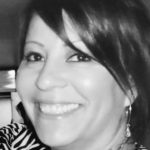
“Medicine is so much better nowadays! I feel amazing!”
View Story
“Medicine is so much better nowadays! I feel amazing!”
About Ana: Ana experienced pain from the condition in her neck for many years. When attempting to do ordinary chores like folding clothes or reaching out to pick something up, her arms often felt weak and shaky because her spinal cord was being compressed. She suffered a constant headache – mild, but relentless. One day, Ana lifted her granddaughter onto her shoulders to carry her, but after a couple of minutes her arms went numb and she felt tingling in her toes. Ana recognized that her symptoms were worsening, and decided to see a spine specialist. In their very first meeting, Dr. Bagheri explained to Ana what was going on in her body and outlined a step by step surgical solution. “I told him to go right ahead,” Ana said. She wasn’t scared, because she’s had her share of joint replacements and orthopedic reconstructions. “My journey has been like eating an elephant in pieces. I’m a transformer! When I pass away, they should put me in a toolbox instead of a coffin,” joked Ana.
Diagnosis: Central canal stenosis
Path to Treatment: Physical therapy
Procedure Overview: ACDF C4–C7
Life Now: “Medicine is so much better nowadays! I feel amazing,” exclaimed Ana! She’s relieved to not feel the old pains and limitations that she put up with for so long. In spite of the doubts her friends and family expressed about her having this surgery, Ana is thrilled that she decided to stay positive and trust in her capable care team.
Natalie Ann R.

“I thought I would never put on my tap shoes again...now I feel amazing!”
View Story
“Before my surgery, I had this vision of my life being over after back surgery. I thought I would never put on my tap shoes again. Thanks to Dr. Bagheri, now I know what life without constant pain is like, and I feel amazing!”
About Natalie Ann: Natalie Ann is a semi-pro tap dancer and full-time dance teacher. Like many active professionals, she experienced occasional back problems which would only resolve after an intensive regimen of self-care and anti-inflammatories. However, as the degenerative condition in her spine worsened, the yearly flare-ups turned into much more regular events, eventually escalating to bi-weekly episodes. Despite her debilitating reality, Natalie Ann’s pain was repeatedly dismissed by her primary doctor, and even the local Urgent Care staff. In September of 2019, things took a drastic change for the worse. Her left hip and leg went numb, and she suffered complete foot-drop. “I was a dancer who couldn’t articulate my feet. I couldn’t even pop up my toes,” Natalie Ann remembered sadly. Upon first hearing her diagnosis of advanced degenerative disc disease, she didn’t understand it, and thought there could be a one-time fix. “Once I researched it, I realized it was forever. I had a really hard time during those first few months before surgery. I was a hot mess! I cried every day.” It wasn’t until Natalie Ann met Dr. Bagheri that she realized there was hope.
Diagnosis: Degenerative disc disease (DDD)
Path to Treatment: Yoga, chiropractic care, massage, OTC medications
Procedure Overview: Microdiscectomy, laminotomy and foraminotomy L4–S1
Life Now: “When I woke up from my surgery, I already had relief. Before my surgery, I had this vision of my life being over after back surgery. I thought I would never put on my tap shoes again. Thanks to Dr. Bagheri, now I know what life without constant pain is like, and I feel amazing,” said Natalie Ann. She is already back to teaching dance, and living her full-time success story.
Tina A.

“I definitely plan to get back to riding dune buggies, but figure I’ll be more careful from now on!”
View Story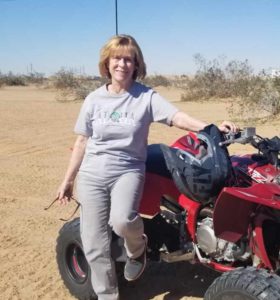
About Tina: Tina attributes her need for back surgery to a life-time of wear and tear from living an incredibly active, fun life. She grew up enjoying the outdoors through water skiing and camping, but also engaged in activities like ballet, acrobatics and tap dancing. After a recent knee injury while snow skiing, Tina faced the reality that her body is getting older, and she might need to start being more cautious. Her back had given her trouble for some time, but it took Tina a while to seek treatment. “I kept hoping it would go away,” she said. “It probably didn’t help things when I did a double-somersault on a four-wheeler last year, either,” she laughingly confessed. Tina added, “My four-wheeler is fast, and I get on it and just go crazy!” It’s also been a long-standing tradition in Tina’s family to ride dune buggies together in the desert, so she was reluctant to get a surgery that might threaten her ability to get back to that. Consulting with Dr. Bagheri made the decision to get surgery much easier for Tina. “I liked him, and I believed in what this good doctor was saying,” she explained.
Diagnosis: Herniated disc, Sciatica, Stenosis, DDD
Path to Treatment: By the time Tina consulted with Dr. Bagheri, her condition was advanced enough that no conservative treatments were recommended.
Procedure Overview: L4-L5 Microdiscectomy
Life Now: Tina was amazed that her surgery was an out-patient procedure. “It was lickety-split,” she said happily. However, Tina described those first few days post-op as “pretty rough.” It was difficult to need help initially – relying on help from others to get in and out of bed and perform other tasks of self-care was a new concept for Tina. All the extra help made it easy for her to follow the doctor’s orders, though, and she was very careful not to twist, pick up heavy things, or bend much at all as she healed. Thankfully, she improved quickly, and didn’t need her pain medications past the second week. Tina has gone back to pulling weeds and doing the household chores she used to do, and she’s already making plans to participate in their next family dune buggy adventure. She is so grateful to be back to living her life with vitality, and thanks her care team and Dr. Bagheri for helping that become a reality. “Dr. Bagheri is so awesome! I love him to pieces! I can't say enough good about him. His patience, his kindness...his smile! I just count my blessings, and he's one of them.”
Kip I.

“Within two weeks, I could walk three miles without pain!”
View Story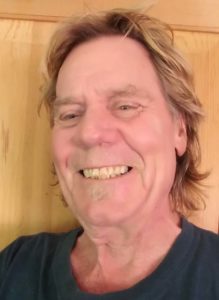
About Kip: After narrowly surviving stage-four colon cancer, Kip emerged severely weakened by the physical battle and chemotherapy treatments. One day he was walking in his kitchen when, without warning, his left leg was riddled with intense pain. Imaging later revealed that his disc had herniated suddenly in that moment because of his chemo-weakened state. When reviewing his MRI with Dr. Bagheri, Kip asked, “is it fixable?” To which the surgeon replied with assurance, “yes, it is.” Kip describes those next four months leading up to his spinal procedure as quite miserable. “I felt pretty worthless and had to rely heavily on my family. I could only walk five to ten minutes at most, and I couldn’t even sleep in my own bed.” Despite all of that, Kip kept a positive outlook and took a proactive approach to pre-hab and recovery.
Diagnosis: Herniated disc
Path to treatment: Medications, natural supplements
Procedure overview: L4-L5 Hemilaminotomy, foraminotomy, discectomy
Life now: When Kip awoke the morning after his out-patient surgery, he half expected his body to dictate the routine like old times: go to the bathroom, make a coffee, then be forced to lay down again because of excruciating pain. Kip had been concerned about taking opioids for pain management because of the high risk of addiction that accompanies their use. Much to his surprise, he had zero pain after surgery and happily tore up his oxycodone prescription. Within two weeks, he was walking three miles a day without pain. Kip considers himself very fortunate to live in a city with such quality doctors to get him through his cancer and spine ordeals. “Dr. Bagheri is gifted,” said Kip simply. Still healing and strengthening his body after the cancer, complete colectomy and spinal surgery, Kip remains vital and optimistic, with his sense of humor still intact. At the end of the day, “humor is always the best medicine,” reminds Kip.
Josh M.

“The best way I can thank Dr. Bagheri is by going out and living an active lifestyle full of energy and gratitude."
View Story
About Josh: Josh loves fitness and an active lifestyle, but a back injury hit pause on his life for 19 months. “I got a herniated disc because I was lifting and moving improperly,” shared Josh. In spite of knowing that, he spent a long time and a lot of money trying to find a passive solution without putting in any of the necessary work himself. Eventually he realized that he would need to adjust his habits and address the underlying cause of his injury. Slowly, he began to do just that. “I pursued conservative treatments and did everything in my power to heal my body through consistent physical therapy, proper sleep, good nutrition, and a strong mindset.” Living in constant pain those 19 months, Josh slept on the floor many nights and could only sit for five minutes at a time. Still he managed to keep a positive perspective and chose to remember that he was not broken, he was resilient and had much for which to be grateful. It finally became apparent that he would also need the help of a skilled surgeon in order for him to take that next step of healing. By the time Josh got to this point, he felt he had put in the work physically, and was ready to trust Dr. Bagheri to perform the microdiscectomy. “I can be stubborn, particularly when it comes to surgery,” said Josh, “so it took a special type of surgeon to make me feel comfortable and confident in a scary situation. Dr. Bagheri epitomizes the sentiment of a caring healthcare professional who has the best interest of the patient in mind.”
Diagnosis: Herniated disc, Stenosis, DDD, Spondylosis, Sciatica
Path to treatment: Chiropractic treatment, physical therapy, massage, acupuncture
Procedure overview: L4-L5 Microdiscectomy
Life now: Just one month post-op, Josh commented how unbelievably his life had changed for the better. He no longer had to sleep on the floor, and he could already walk for 30 minutes at a time. Finally able to sit with only minimal pain, Josh made plans to complete physical therapy, then begin an online program, MoveU, to further prevent any recurring injury. Josh says it would be impossible to overstate how thankful he is to Dr. Bagheri. “I will be grateful for his steady hands until the day I die,” expressed Josh. He plans to make the most out of his second chance, and he proudly shares his story to help other patients like himself.
Julia D.

“I would tell anybody on the fence about what to do, just do it! Advances in medical science are simply phenomenal!”
View Story
About Julia: Julia dealt with back pain off and on for about 10 years, but in the last year her situation deteriorated significantly and began to cause symptoms in her hips and legs. “It can be very frustrating when you can’t get up to take care of your crying baby,” said Julia. Fully devoted to her growing family and successful career, she remembers thinking to herself, “I don’t have time to deal with this!” After trying all the recommended conservative treatments, Julia was more than ready for surgery. Dr. Bagheri told her that she was the ideal candidate for this type of procedure, and talking with him about her options made a hard decision much easier. “When you sit and talk with Dr. Bagheri, it feels like you’re talking to a family member. He makes it easy,” shared Julia with gratitude.
Diagnosis: Stenosis, Radiculopathy
Path to Treatment: Medications, injections, physical therapy
Procedure Overview: L4-L5 Bi-lateral hemilaminotomy, foraminotomy and discectomy
Life Now: Like most people, Julia was nervous on surgery day, but she mostly felt excited to see how she would feel when she woke up. Much to her delight, she felt immediate relief from the pre-op misery she had been experiencing, and only had pain at her surgical site. For the next two weeks, Julia worried that it was all too good to be true and the pain would return. “Even after two months, it just never came back,” she said happily. Describing her life now, Julia says, “My life is completely changed! I was upset all the time. This was a real problem. I feel wonderful now!” Julia believes that things have advanced significantly enough in the last 20 years that the fear of back surgery shouldn’t be what it was then. She now shares her perspective with other patients as a way to “help people beat their fears.”
Gloria C.

“This surgery was the best thing in the world!”
View Story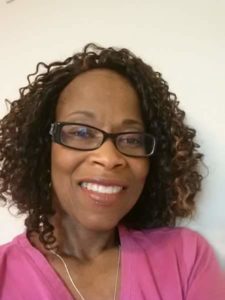
About Gloria: Gloria worked in the medical field as a cardiac stress technician for 35 years. Her 12-hour shifts were spent in front of a heart monitor, sitting in a sub-par office chair that was literally held together with sticky tape. A new chair was never in the hospital budget, so Gloria toughed it out. Most days her legs became so numb that she could barely walk to her car to drive home. An x-ray of Gloria’s spine determined that her back was the culprit, and the first surgeon she met with confirmed she needed surgery. Per the advice of her son, Gloria decided to seek a second-opinion from Dr. Ali Bagheri. “He treated me like I was a family member,” Gloria explained. “I like to feel in charge of my health, and Dr. Bagheri gave me that by talking me through why I needed surgery, and what that would involve,” she added.
Diagnosis: Spondylolisthesis, Stenosis, Radiculopathy
Path to Treatment: Physical therapy, medications, acupuncture, chiropractic treatment
Procedure Overview: ALIF with posterior fixation L4-S1
Life Now: “The first week out of surgery, I was questioning whether I did the right thing, because it was so incredibly painful,” shared Gloria. She had been living very independently prior to surgery, so she was surprised how much assistance she needed post-operatively. Spending the first week in a skilled nursing facility was a big help, and once Gloria returned home she got a dog to help her keep walking. “This surgery was the best thing in the world,” Gloria exclaimed. She is anxious to go back to work and to do it in such a way that accommodates good spine health.
Rose S.

“This kind of pain takes a toll. It’s a big deal to not feel broken anymore!”
View Story
About Rose: Rose spent most of her life doing extremely heavy labor as a steel worker in the auto industry. She believes that “doing a man’s work to get a man’s pay” is what happened to her back. It was crushing, but as a single mom raising two children, there was nothing she wouldn’t do to provide for them. When Rose finally left her job, she felt broken beyond repair. Coming under the care of Dr. Ali Bagheri, Rose discovered that she needed two spine surgeries: an ACDF procedure in her neck from C3-C5, as well as a fusion in her lower back. She opted to take care of the neck first, since she was desperate to get relief from the migraines that plagued her. A year later, Rose was fully recovered and ready to tackle the next surgery. Rose felt confident continuing with Dr. Bagheri as her surgeon. “My family and I love Dr. Bagheri. He is a good man, and he listens,” she explained.
Diagnosis: DDD, Stenosis
Path to Treatment: Physical therapy, traction, acupuncture, bracing, TENS unit, natural remedies, injections, medications
Procedure Overview: ACDF C3-C5 & ALIF with posterior fixation L4-S1
Life Now: Taking it easy doesn’t exist in Rose’s vocabulary. Early in her recovery, she had a set-back and realized she was attempting too much, too soon. Undeterred, Rose set new expectations, learned to pace herself, and adjusted to the temporary limitations of recovery. “Hope is a frame of mind,” shared Rose, adding, “I promised to work hard and not be the victim in this. I’m doing it!” At her most recent check-up, Rose impressed her surgeon with how limber she is, and earned a spontaneous hug from him when she shared that she is less and less dependent on her cane. Estimating that she is probably 80% recovered already, Rose is back to doing some of the things that give her joy, like painting and upcycling old treasures. She is also passionate about sharing her story to help other patients like herself. “Dr. Bagheri and The Better Way Back were there for me, so I want to be there for somebody else.”
Joanie F.

“I have so much energy! Who am I? I am like my own super-hero!”
View Story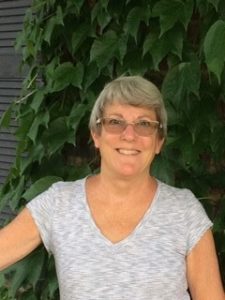
About Joanie: As a teenager, Joanie was told that she had scoliosis and her physicians began monitoring it at regular intervals. In her 20’s, she was advised to go ahead and get a corrective surgery, but Joanie wanted to stay active and have children, so she politely declined. In 1988 at 32-years-old, Joanie revisited her surgeon because her spine was starting to twist her ribs, putting pressure on her lungs and causing horrible headaches. At this visit, she was given some hard truth: if allowed to progress, eventually the twisting spine would continue compromising her internal organs and her heart would become enlarged to the point of exploding internally. The surgeon said, “You’ll be dead by 40.” Joanie accepted that the time had come, so she underwent the necessary T4-L2 fusion. On her 40th birthday, Joanie celebrated living to that milestone by enjoying a PB&J sandwich and Frito Lays chips on the beach. Twenty years later, Joanie’s car was hit from behind while she was stopped at a red light. She knew she was in trouble when she audibly heard her neck crunch, but still opted to try a variety of conservative treatments before entertaining the idea of another spine surgery. When the pain in her arms, jaw and face became too much to bear, Joanie visited Dr. Ali Bagheri and told him she was ready to move forward with the ACDF surgery he had recommended.
Diagnosis: Stenosis
Path to Treatment: Physical therapy, chiropractic care, acupuncture
Procedure Overview: ACDF C4-C7
Life Now: Describing the first few hours after her neck surgery, Joanie said, “I said my hail Mary’s and got through the night!” A few days in, she strapped on her Fitbit and began mindfully walking and tracking her progress. Her first outing consisted of simply walking around her cul-de-sac, followed by a nap. Joanie kept a positive mindset and kept moving, eventually adding gentle yoga to her routine. These days, Joanie is energized in a way she says she’s never quite felt before. She and her husband recently returned from a three-week trip through Europe, one week of which was spent e-biking through the Pyrenees mountains from France into Spain. Joanie is elated and grateful to be vibrantly living her life once again.
Judy T.

“I feel like I was reborn! I go carefully, but I go, go, go!”
View Story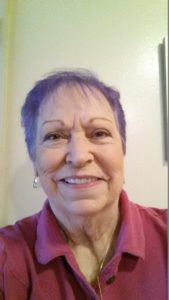
About Judy: Judy knew all her life that she had scoliosis, but she says, “back in the day, nobody did anything for it.” In 1986 she had a preliminary lumbar fusion and understood even then that she was facing a larger reconstruction down the road. For the next ten years, she put it off, until eventually her condition became much worse. “I became a hermit in my house. It was horrible,” shared Judy. When Judy began seeking advice about a follow-up surgery, she was told by her primary care provider, “You’re just getting old, Judy. Accept it.” Boldly, Judy decided she wouldn’t accept it. After consulting one surgeon who said her case was too complex, she was referred to Stanford and Dr. Veeravagu. They decided it would be a two-day surgery, fusing spinal levels T10-S1.
Diagnosis: Scoliosis
Path to Treatment: Physical therapy, medications
Procedure Overview: XLIF with posterior fixation - T10-S1
Life Now: In the early days of her recovery, Judy subconsciously expected her leg to go numb or the prior excruciating pain to come back, but to her surprise, it never did! Just four months out from surgery, Judy was thoroughly enjoying her newfound ability to get out of the house. She expressed her freedom this way: “I'm doing so well you can't catch me at home anymore! I feel like I was reborn! I go carefully, but I go, go, go!” In addition to being on the go, she has continued a regimen of physical therapy, and attributes much of her success to the dedication of her care team. At about the six-month mark, Judy said she’s feeling “on top of the world!” For the first time in a while, Judy is excitedly making plans for her future, because her life isn’t too painful to face. Reflecting back to that difficult conversation with her primary care provider, Judy says, “I’m so glad I didn’t concede to ‘just getting old’. Mmm hmmm, look at me now!”
Jay T.

“I’m a success story!”
View Story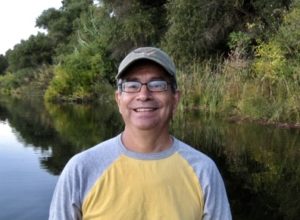
About Jay: Nearly twenty years ago, Jay fell off a roof and seemed to escape any ill effects from the event. It’s hard to say for sure, but he guesses that accident may be what triggered some of the degeneration which started giving him painful symptoms within the last two years. Jay tried to manage by seeing a chiropractor and completing physical therapy, yet his condition progressively worsened. By the time Jay consulted with Dr. Ali Bagheri and was recommended for an XLIF procedure, his pain had become constant and debilitating. Jay remembers back surgery being “super taboo back in the day,” but from his first meeting with Dr. Bagheri and his staff, Jay felt like it would be a safe decision because he was in good hands. He recalls a funny story about the time clinic staff began to educate him about the limitations on bending, lifting and twisting he would need to respect immediately after surgery. They asked, “Are you familiar with the B.L.T.’s?” To which he replied, “Oh yes, that’s one of my favorite sandwiches!” Jay’s sense of humor and positive attitude served him well as he navigated the surgery and recovery process.
Diagnosis: Spondylolisthesis and stenosis
Path to Treatment: Physical therapy and chiropractic treatment
Procedure Overview: XLIF L4-L5
Life Now: Four months post-op, Jay jokingly describes himself as “a walking bionic man” and celebrates that he is almost completely recovered. Now he’s able to be on the go all day, but wisely chooses to rest periodically since he is still rebuilding his stamina. Recently, Jay and his wife celebrated their wedding anniversary by going out for a special dinner and to see a theatrical production. They also enjoyed something that was impossible before Jay’s surgery: window shopping together. “I used to have to wait in the car,” shared Jay, “but now it feels so good just to walk with her!”
Gordon M.
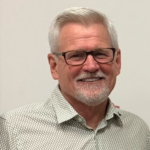
"At first, I was regretful...but ultimately I regretted not having it done sooner!"
View Story
About Gordon: “I didn't want to lead a life of constant pain and opioid use. My personality was changing and awful because of the pain. I've never been that kind of person. I was disassociating myself from friends and family because of what I was going through.” This was Gordon’s situation – in his own words – prior to surgery. Having had a C3-C4 fusion about twenty years before, Gordon revisited that surgeon when he started seeking help for his lumbar scoliosis. The curvature of his spine had deteriorated to forty-one degrees, and his lowest rib was almost sitting on his hip. Gordon was told “there is no surgeon who would do this surgery on your back at your age.” Realizing that he couldn’t take such a message of hopelessness, he found a new surgeon. After consulting with Dr. Greg Mundis, Gordon found out there was hope for his situation, though the surgery wouldn’t be easy.
Diagnosis: Scoliosis
Path to Treatment: Medications, physical therapy
Procedure Overview: XLIF, ALIF with posterior fixation L1-S1
Life Now: “I'm feeling fine! I don't think about my back much anymore. The first four months, it was really in my face, then somewhere around six months it faded. The new differences become okay,” shared Gordon. The recovery – as promised – was not without challenges. Gordon is holding onto the hope that one day he may surf again, but for now, he’s celebrating a new life without the old pains.
Mike H.
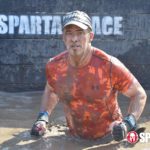
“You don’t have to be a Spartan…just be better than you are now.”
View Story
About Mike: An integral part of his local community, Mike owns a thriving Italian restaurant in town. Both Mike and his wife carve out time in their busy schedules to stay active by training for and competing in Spartan races – intense race-courses riddled with challenging obstacles. On his eleventh and final race of 2018, Mike was out-pacing even his twenty-two-year-old son until he took a serious fall on the edge of a dangerously slick mud pit. Gritty with determination, Mike championed through the remainder of the race. A later MRI showed a herniated disc at C5-C6, caused by the impact of his fall. While Mike wasn’t experiencing much pain related to his neck injury, he did begin to suffer functional deficits in his left arm. The most alarming occurrence was when he attempted a warm-up bench press at the gym about a week after his fall. The weight was one he could easily lift, but Mike’s left arm suddenly went limp, and the bar dropped onto his chest. “That’s when I talked to Dr. Matt Miller,” says Mike. Concerned, Dr. Miller made his recommendation for a fusion after allowing time to see if the injury would heal on its own.
Diagnosis: Herniated disc
Path to Treatment: Chiropractic care, physical therapy
Procedure Overview: ACDF C5-C6
Life Now: Four months into his recovery, Mike has already run several more Spartan races, and continually stretches his limits. Mike is grateful to have his grip strength back and is striving to return to his former fitness level. He describes recovery as a process through which you need to keep pushing ahead, while listening to your body’s signals. “Some days you own the mountain, and other days the mountain owns you. Either way, refuse to quit.” Mike keeps aiming higher for his own benefit, but also to inspire others. “You don’t have to be a Spartan,” he reassures, “just be better than you are now.”
Jean M.

“People are telling me, ‘Slow down, you just had spine surgery.’ I say...I’m going dancing!’”
View Story
About Jean: Jean suffered from daily sciatica for a long time before she decided to have the conversation about a possible surgical fix. “I waited because I was so afraid of losing my independence,” explained Jean. After running the gamut of pain management and steroid injections, she requested to see an orthopedic surgeon. When Dr. Ali Bagheri told Jean that a surgery might help, she was ready for it. The pain was severely limiting her ability to walk and perform even the most basic household chores.
Diagnosis: Spondylolisthesis
Path to Treatment: Pain management and steroid injections
Procedure Overview: XLIF L4-L5 with posterior fixation
Life Now: During the early stages of recovery, Jean described feeling somewhat fragile and fatigued in her back, but with very little pain. In fact, her care team couldn’t believe that she didn’t want any pain medication during her time at the rehab facility. Once she returned home, Jean wanted to go and do everything. She had to be intentionally mindful of the fact that her body was still healing, even though she didn’t have pain. Less than three months after surgery, Jean had already gone ballroom dancing with friends!
Alisa J.

“I would say, ‘I'm like a new person,’ but the better thing is that I have my old self back!”
View Story
About Alisa: Alisa had always been an active woman and assumed she always would be. She never had a reason to slow down! One of her favorite things to do was walk - miles and miles at a time. However, in April of 2015, back and leg pain began dictating what she could and couldn't do. Alisa’s ability to walk became so limited that she could barely walk a few city blocks before her pain forced her to return home. “Chronic pain changes everything,” shared Alisa. She awoke every morning to face the burden of the constant pain in her back and legs, while rallying her determination to try and lead a “normal” life. After ongoing sessions of physical therapy, chiropractic treatment and cortisone injections did little to improve her quality of life, Alisa decided to consult with Dr. Ronjon Paul. After that visit, she understood that her back wasn’t going to get better on its own and two choices emerged: live with the pain or go ahead with the recommended decompression procedure. After weighing the benefits versus risks, Alisa says she couldn’t think of a good reason to not have the surgery. For years, the pain dictated Alisa’s next move. Finally, she decided that she would call the shots. In her own words, “I wanted my life back!”
Diagnosis: Spinal canal stenosis, DDD
Path to Treatment: NSAIDS, physical therapy, chiropractic treatment, cortisone injections
Procedure Overview: L3-L5 Laminectomy
Life Now: Aside from the acute surgical pain Alisa felt immediately after her procedure, she was overjoyed to realize that all the nerve pain she had previously was completely gone! Elaborating on that time, she said, “Surgical recovery is never fun, but in just a few weeks I was back to distance walking.” Roughly three months post-op, Alisa and her family took a sight-seeing trip to Colorado, walking and exploring all over. At one point, her husband stopped and turned to her in astonishment, reminding Alisa that only a short time ago she couldn't walk a neighborhood block without excruciating pain. Now that Alisa is back to her former self, she has a new perspective on back surgery: “I was afraid of surgery, but now my only regret is that I didn’t do it years ago!”
Olivia F.

“My incision is so fine…it's beautiful! Is this art?”
View Story
About Olivia: Olivia is a licensed dietitian and nutritionist providing expert end-of-life care to her patients. Eventually, the degeneration in her spine caused Olivia to become a patient herself. The condition of her spine was causing a host of issues, like bladder control and balance problems, as well as nerve pain in her right leg and numbness in one arm. Despite all of this, one physician suggested that Olivia’s pain might be strictly psychological. It became clear that it would be critical to blend Olivia’s first-hand knowledge of her own body, with the specialist’s knowledge of anatomy and treatment in order to arrive at a successful care plan. Struggling, Olivia explained that she was “…falling apart. I was like a tower, falling to pieces!” She became so hoarse that she could barely speak. After finally getting an MRI, Olivia consulted with Dr. Ali Bagheri, who told her it was serious, and she could soon lose all function in her arm. Within a month and a half, she had a surgery date. Understandably fearful, Olivia got cold feet and canceled the surgery, waiting another four months before returning to Dr. Bagheri. He showed her how much her condition had worsened, and she channeled the inner courage to re-schedule. Reflecting back to that time, Olivia states, “I was moody and emotional, and almost called the scheduler to cancel a second time!”
Diagnosis: Stenosis
Path to Treatment: OTC medications
Procedure Overview: ACDF C5-C7
Life Now: At barely six weeks out from surgery, Olivia was bored out of her mind and excited to go back to work the following week. When describing how amazing she feels now, Olivia said, “All my symptoms are reversed!” Her balance is excellent, the bladder issues are gone, along with the pain in her leg. She has full functionality in her arm, and about two days after surgery her voice was totally clear again. “This surgery helped me so much! It's amazing how much better I feel. I believe Dr. Bagheri was a God-send.” Olivia shares her story now as a way to help other patients like herself who may be paralyzed by fear.
Diane R.

“When my surgeon asked me my pain level at a post-op visit, I said, “I couldn't even tell you it’s a level one!!”
View Story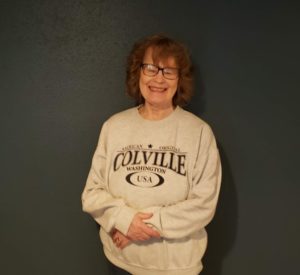
About Diane: Diane starts the re-telling of her back pain story much like so many others: “On a scale of one to ten, it was pretty close to ten.” Nerves were severely pinched, and her lumbar spine was collapsing. Diane was fearfully facing a revision and extension of a prior fusion at L5-S1 done in 2003. She expressed her feelings leading up to surgery as, “I was afraid to have this done. I really was. I remember what it was like to have my previous fusion. It was awful.” Doing everything she could to stave off another operation, Diane went to the pain clinic for treatment for several years and tried conservative measures like radio frequency ablation and epidurals. She also committed to going to the gym for a full year prior to surgery to build up her strength. As her condition worsened, Diane and Dr. Leveque made the collective decision to move ahead to surgery.
Diagnosis: Stenosis, spondylolisthesis
Path to Treatment: Injections, radio frequency ablation, physical therapy, personal fitness regimen
Procedure Overview: XLIF, PSF L2-S1
Life Now: Just six months out from her latest surgery, Diane says she doesn’t have the pain she had before, and a lot of bone growth is already visible on her x-rays. “Dr. Leveque did his job well, now I’m doing mine!” Diane is pushing herself during recovery, but carefully. “I never bend, always squat. I stay active and try to keep limber,” shares Diane. Although she used a cane as post-op stability for a little while, Diane happily reports that she has now bid the cane farewell! Diane now says the words every chronic back pain sufferer longs to say with vitality: “I’m doing great!”
Andy F.

“This surgery has completely changed my life.”
View Story
About Andy: Andy lives a very active lifestyle. Most of his career he has spent seated at a desk, so he takes every opportunity he can to get out and enjoy the outdoors. Andy has dealt with episodes of back pain periodically for much of his life, but they would eventually resolve without becoming too serious. Towards his mid-thirties he started to suffer from chronic back and hip pain accompanied by debilitating muscle spasms. Sometimes the pain from the spasms would literally knock him off his feet and make it nearly impossible to walk for several weeks. As the symptoms worsened over the course of the next four years, Andy knew he needed to get help. He pursued a variety of conservative treatments, but those only left him frustrated and feeling like a “human pin-cushion.” After finally discovering from an MRI that the pain stemmed from a herniated disc that was placing severe pressure on his nerves, Andy was properly diagnosed, treated, and has since made a full recovery.
Diagnosis: Herniated disc, severe stenosis, sciatica
Path to Treatment: Massage, acupuncture, yoga, diet & exercise, physical therapy, medications, cortisone injections, epidurals
Procedure Overview: L4-L5 Bi-lateral laminectomy with microdiscectomy
Life Now: Andy describes his life now as “wonderful!” He has more energy than ever before and is in the best shape of his life. He enjoys boxing, hiking, swimming, cycling, and snowboarding, and takes full advantage of all the things he thought he may never get the opportunity to do again. Andy is also devoted to supporting other back patients who are suffering, by sharing his perspective and experience.
Sue P.

“It doesn’t matter how familiar you are with medical issues…when it’s happening to you, it’s a whole new ballgame.”
View Story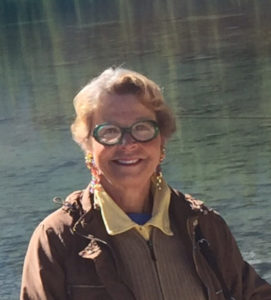
About Sue: Sue battled terrible nerve pain that radiated from her back and down into both of her legs for months. She tried epidurals and physical therapy, reserving surgery as a last resort. At one point, she had a back surgery scheduled, then cancelled it because of her fearfulness to take that step. Then one day it dawned on her that, “No one else is living with this back.” She realized that she needed to do this for herself.
Diagnosis: Spondylolisthesis
Path to Treatment: Epidurals, physical therapy
Procedure Overview: MAS TLIF L5-S1
Life Now: Sue admits that she did have a lot of soreness post-operatively, but the excruciating nerve pain was gone immediately. Two weeks after surgery, Sue was back at the gym in a limited way. She says walking wasn't difficult at all, though bending is something she still must do carefully. One of the hardest parts of recovery for Sue was hitting pause on her life, without the ability to do all the running around that she used to enjoy. “The days are long when you’re sitting.” Surgery didn’t stop her for long, however. She didn’t waste any time getting back into her volunteer role transporting patients at the local hospital. Sue shared a deep gratitude for Dr. Prasher and her extended care team, especially her husband. “It’s been a wonderful experience,” Sue said. Now retired from her career in ophthalmology, she has opened her own antique shop and is back to living a full, happy life.
Maria B.

“The second I woke up from surgery, the pain was gone!”
View Story
About Maria: Maria dealt with fairly manageable low-back pain for several years, but one day it triggered an extreme muscle spasm that landed her in the hospital. Several of her lumbar discs were so compressed that it surprised her care team that she was even able to stand upright. Maria was aware of the malalignment in her spine, but it took a trip to the E.R. for her to realize how bad things had gotten. Prior to getting the corrective spinal fusion advised by Dr. Zavarella, Maria made every effort to stay active and eat healthy. She even hired a personal trainer in advance of surgery to get a leg-up on her recovery.
Diagnosis: Spondylolisthesis, hyperlordosis, stenosis
Path to Treatment: Chiropractic care, injections, acupuncture, OTC medications
Procedure Overview: XLIF, PSF L3-L5
Life Now: Maria says recovery didn't feel easy when she first got home from the hospital, but it got better. She got active as quickly as possible and completed physical therapy, also. Maria reported back to work six and a half weeks after surgery, making full use of her sit/stand desk. She enjoys the fact that she’s back to running & biking and is grateful for Dr. Zavarella’s skillful hands in surgery.
Lane H.

"I used to be in so much pain, I couldn't even sit!"
View Story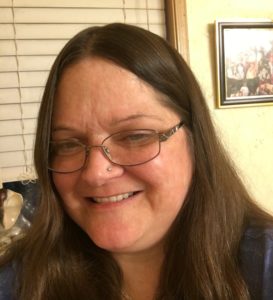
About Lane: Lane has dealt with spinal irregularities and injuries for much of her life. She grew up working hard, tending to horses and doing a lot of heavy horse-back riding from the time she was quite young. Lane remembers an initial injury to her back when one day she was knocked off balance, falling backward, and hitting a tree stump. Multiple surgeries later, Lane was still suffering from terrible pain. In fact, when she finally consulted with Dr. Radwan, she was far from being in a good place. Lane told Dr. Radwan, “Do the surgery, or I’m done.”
Diagnosis: Degenerative disc disease, flattened back syndrome
Path to Treatment: Medications
Procedure Overview: ALIF, XLIF, PSIF
Life Now: Lane surprised her care team by how quickly she bounced back from her operation. By the third day post-op, she was walking confidently. “If you push through the pain, it does go away,” Lane shared, proving that even when things were tough, she could be tougher. Her recovery has certainly involved many adjustments to her everyday life and routines, but she is very grateful to have her pain resolved. Lane maintains her spine health by staying active and integrating vital exercise routines into her life.
Jerry P.

“I’m back to walking with no pain!”
View Story
About Jerry: One fateful day in 1991, Jerry was driving a semi-trailer along a mountainous route. An oncoming car flashed its lights in warning, but the fog made for low visibility, so Jerry didn’t see the rockslide until it was too late. It took rescuers several hours to free Jerry from the devastation caused by the twelve-ton boulder that hit his truck. Since that day, Jerry has had twenty-four surgeries, including several spinal procedures. Jerry says that all his back operations have “worked out great,” and is grateful to Dr. Christopher Bilbao who performed his most recent XLIF. At one point, his surgeon mentioned that this lateral surgery would likely be easier than his previous posterior procedure. With a chuckle, Jerry shared, “Then the assistant leaned in and whispered, ‘Have you ever been kicked in the gut by a horse? That’s what it’s going to feel like.’”
Diagnosis: Degenerative disc disease
Path to Treatment: Physical therapy, chiropractic care
Procedure Overview: XLIF L2-L3
Life Now: “Naturally, it takes a while to recuperate, and there are adjustments to be made,” says Jerry, but he is pleased with the result. “I feel great now!” Jerry gives tribute to his wife, sharing that she has been a solid support to him through this whole process. Remarkably, Jerry doesn’t have any limitations to speak of, and has taken everything in stride. He is back to tending their “monster garden,” and celebrates walking with no pain.
Peter T.
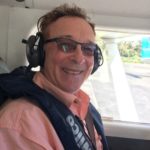
“I was ecstatic to walk a few hours after surgery!”
View Story
About Peter: Peter’s spinal issues manifested as pain in his legs for the better part of eight years. He was diagnosed with herniated discs in 2009, but initially opted for a conservative treatment route. In the following years, Peter spent many hours researching back surgery before making the decision that a spinal fusion was his best option. “Back surgery is a delicate balance between risk and reward. Arm yourself with knowledge,” Peter advises. A consultation with Dr. Justin Bundy gave Peter even greater confidence that the XLIF procedure was the right choice for him. Peter approached his surgery and recovery with the principles he practices as an aviator: planning is key, preparation minimizes surprises, and safety is always a priority.
Diagnosis: Stenosis, herniated discs
Path to Treatment: Physical therapy, chiropractic care, injections
Procedure Overview: XLIF L2-L5 with posterior fixation
Life Now: When comparing his life to a journey, Peter describes his back pain as an unavoidable “bump in the road.” He is grateful that since his surgery, the road has been exceptionally smooth. It came as a welcome surprise to Peter that his surgeon prescribed a healthy amount of walking for his rehabilitation. He has walked over seven-hundred miles in the twelve months since surgery! Peter tracked his post-operative pain every day, and observed that he reached a pain level of zero around the seventh month of recovery. Now Peter volunteers as a patient ambassador, sharing what he’s learned on his journey with others who may be experiencing similar “bumps in the road” of life.
Marilee W.

"Party on!"
View Story
About Marilee: The stenosis in Marilee’s spine first became apparent in her left calf muscle, which began to atrophy and shrink considerably. Gradually she was threatened with loss of function in that leg and started having similar symptoms in her right leg. Marilee was left with little choice but to have a fusion surgery and stop the nerve damage that was occurring. Dr. Ramin Bagheri recommended the XLIF procedure to get her back on her feet.
Diagnosis: Stenosis
Path to Treatment: Active, healthy lifestyle
Procedure Overview: XLIF L3-L5
Life Now: Post-operatively, the sciatica and numbness in Marilee’s legs gradually dissipated. She describes her recovery as “not the easiest time in the world,” and recognizes the powerful impact her support group of family and friends played in her comeback. Less than a year after her surgery, it is not uncommon to find Marilee back on the tennis court, in spin class, or hiking the local mountain trails. She has also joined the ranks of other recovered spine patients who are willing to “pay it forward” and share their experiences with people who are fearful or just need support.
Lilit M.

“This was the best decision of my life!”
View Story
About Lilit: Lilit’s earliest memories include being troubled by her severe scoliosis. In the beginning it wasn’t painful, but made her very self-conscious. The emotional and mental struggle of dealing with her cosmetic deformity was ever-present. Devastatingly, in her late 30’s Lilit began to feel pinching and stabbing pain in her back. She recalls a few times she narrowly avoided a crash while driving because it felt like she was being attacked with a knife. All of Lilit’s specialists agreed that her condition would only get worse with age, and her progressing curvature would eventually cause paralysis. After extensively researching qualified surgeons, she consulted with Dr. Nomoto, who carefully explained everything about the operation. Lilit knew the surgery would be drastic, and fearful family members tried to talk her out of it. “I just prayed to God and put my faith in the doctor's hands,” she says.
Diagnosis: Scoliosis
Path to Treatment: Lilit tried physical therapy, massage, electrical stimulation, herbal remedies, and even some experimental treatments as a child in Armenia.
Procedure Overview: Posterior spinal fusion T4-L2
Life Now: Lilit admits quite frankly that “the surgery wasn't the easiest thing to go through.” She recalls how brutally hard it was to get up and walk the day after her nine-hour procedure, but knows it was the best thing for her. She tolerated the recovery pain quite well and says she expected it to be much worse. Forty-five days after her operation, Lilit took an international trip home to Armenia. She feels like the trip was great therapy for her, because it provided a distraction from her post-op limitations. When Lilit returned to work she didn't have any trouble or discomfort resuming her long days at a desk. Roughly ten or eleven months into her recovery, Lilit realized she was 100% pain free. She recounts joyfully, “That's when I ‘forgot’ there were rods in my back.”
Kevan W.

"...facing the possibility of not living that [active] lifestyle brought out my stubbornness to overcome.”
View Story
“I have always lived my life with the power to be explosive and super athletic, so facing the possibility of not living that lifestyle brought out my stubbornness to overcome.”
About Kevan: Kevan was an avid sportsman, with a special affinity for basketball. He dealt with some recurring back problems from time to time, but was always able to push through. He kept playing basketball, and trained twice a day at the gym. One day, he took a particularly hard fall on the court that set him back considerably. A short time later he was moving some heavy equipment and felt his back pain escalate “past the point of no return.” Kevan struggled to find relief, but he couldn’t move his body into even one comfortable position. Unable to sit or sleep, Kevan consulted with Dr. Nomoto, who advised that there could be considerable risk if Kevan waited to get treatment. He proposed a microdiscectomy to correct the shooting pain, numbness, and foot drop that Kevan was experiencing.
Diagnosis: Spondylolisthesis and herniated disc
Path to Treatment: Epidurals
Procedure Overview: Microdiscectomy L3-L4
Life Now: Kevan reports that he is stronger now than he has ever been. He does frequent weight training and boxing, but says that he is smarter about his training now. Kevan reflected back on that difficult time before surgery and shared, “As a young person, it was a paralyzing thought to wonder if I would ever be active again.” Now he is living his life to the fullest! Kevan expressed what a huge debt of gratitude he owes Dr. Nomoto for giving him the chance to thrive again.
Marcus G.

“I felt like my life had been on hold for years because of my spine problems, and now I am free to enjoy life again!”
View Story
About Marcus: Over the course of the last eight years, Marcus has undergone four surgical spine procedures on both the cervical and lumbar regions of his spine. About a year after his last lumbar laminectomy, many painful symptoms returned with additional numbness and weakness in his left leg. He was unable to stand for more than sixty seconds, and couldn’t walk more than a hundred yards. He consulted with several experienced surgeons and was told that he was facing an invasive fusion with a lengthy hospital stay. When a friend recommended that Marcus get another opinion, he was surprised and relieved to hear that he was a candidate for a much less invasive solution: the XLIF procedure. It would be a shorter surgery, and only require three small incisions on his side and back. This was welcome news to Marcus, who’s previous operations had left him with lengthy scars on the front and back of his neck, as well as down his lumbar spine.
Diagnosis: Stenosis, herniated disc, osteoarthritis
Path to Treatment: Physical therapy, epidurals
Procedure Overview: XLIF L3-L4
Life Now: Marcus is now four months post-op, and he is back in the gym doing weight lifting, as well as enjoying five-mile walks on the beach. While he wouldn’t have lasted three minutes on his feet before surgery, Marcus is elated that he can now stand and walk for hours. He has also been surprised to discover that his mobility has not been noticeably diminished by the fusion. Marcus is eagerly looking forward to this autumn when he plans to camp and hike extensively in the backcountry.
Jennifer P.

“Now I get to be the best version of myself for my family!”
View Story
About Jennifer: Jennifer suffered for three years from agonizing leg pain as a symptom of the severe scoliosis in her collapsing lumbar spine. She experienced a great deal of social anxiety about going out in public because she could only walk a short distance without needing a wheelchair. Jennifer describes frequent, humiliating occasions when she would have to sit on the floor of a public venue until the pain subsided enough for her to continue. Her pain took an immense toll on her body, her psyche, and her family. Despite the severity of Jennifer’s case, Dr. Nomoto felt confident recommending a limited, one-level fusion. Since a host of conservative treatments had failed to help, Jennifer decided to go ahead with the surgery. Even still, her fear of surgery was so intense that she just wanted to hug her children and cry.
Diagnosis: Scoliosis
Path to Treatment: Chiropractic care, physical therapy, acupuncture, epidurals, injections, medications
Procedure Overview: XLIF L4-L5 with percutaneous fixation
Life Now: Jennifer is ecstatic to be standing and walking without pain! She describes the healing pain during recovery as “totally worth it.” She also says she would recommend Dr. Nomoto to anyone looking for a spine surgeon. “I liked how honest he was with me, and how frank he was about my treatment options.” Now Jennifer is back to being her former social self. She enjoys family hikes and having friends over, and never takes it for granted that she can walk her son to and from school. “I’m so grateful to God and Dr. Nomoto!” Jennifer is eager to share her reassuring perspective with others facing surgery.
Mary Beth P.

“I’m back to playing volleyball and standup paddle boarding!”
View Story
About Mary Beth: Mary Beth first thought she had strained a muscle, because she noticed some occasional, nagging back pain for a five-month period. She stayed active with her hobbies and job, thinking her back would heal itself with a little TLC. One day she lifted a flower pot and felt a “whoa moment” of excruciating pain. She made an appointment with Dr. Jason Cohen shortly thereafter, and he communicated that she would need surgery to treat the severe herniation. Mary Beth felt a few minutes of fear when she heard she would need surgery, but then just decided to trust her surgeon and not worry.
Diagnosis: Herniated disc
Path to Treatment: Active, healthy lifestyle
Procedure Overview: Microdiscectomy L4-L5
Life Now: Mary Beth says she feels great these days! After working with a physical therapist to correct some neural tension she experienced postoperatively, she was released with no restrictions. Mary Beth has determined to not live in fear of future injury, and she is back to playing volleyball, paddle boarding, and nursing. She has also become a member of The Better Way Back® spine community to share her story with others who have questions.
Jerry G.

“I can’t believe I had spine surgery on my side…and it worked!”
View Story
About Jerry: Jerry worked out frequently at his local recreation center, but one day while using a gym apparatus he “blew out” his back. He felt sudden, shooting pain all the way down his right leg and foot. Jerry describes his life with pain by saying he operated at barely “50% functionality”. He could hardly walk or sleep. Even after he developed drop-foot, Jerry was adamantly against surgery. He was still recovering from a hip surgery earlier that year, and at one of his post-op visits, they sent him straight to the hospital for an MRI of his spine. After discovering complete degeneration of the disc at L4-L5, Dr. Hills recommended the XLIF procedure.
Diagnosis: Degenerative Disc Disease, Arthritis
Path to Treatment: Chiropractic care, acupuncture
Procedure Overview: XLIF L4-L5
Life Now: On Jerry’s first night at home after surgery, he had an adverse reaction to his pain medications, so he never took anything stronger than Tylenol after that point. It took him two weeks to get back to his activities of daily living, and he lauds his wife for all her support both before and after his operation. “She really pulled the load for both of us!” Now, Jerry is back to lumberjacking – cutting down trees and chopping them into firewood. He still gets a little sore when he overdoes it, so he’s careful not to do too much at one time. Like most people, Jerry had heard all the “horror stories” about failed back surgeries, and he was afraid that would become his reality. He is eager to tell his celebratory story of recovery, and help other people who are facing similar situations.
Abba S.

“You can live a normal life, for sure, even after a surgery like this..."
View Story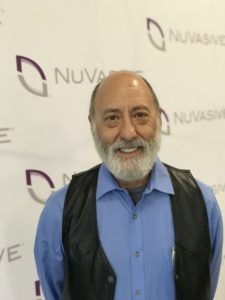
About Abba: Abba began experiencing pain in his upper back, arms, and neck in 2007. Over time he lost 25% of his muscle mass. Many people in his life labeled him a hypochondriac because there seemed to be no reason for his symptoms. Roughly five years later, after a series of expensive tests, the origin of his symptoms was finally identified. Dr. Tayyab explained that if Abba delayed treatment any longer, he was at risk for becoming permanently crippled. After an ACDF procedure, Abba was sporting eight screws and sixteen plates along the front of his neck. In 2016, some new difficulties arose and an MRI revealed a broken screw and subsequently loosened plate. Abba’s most recent surgery was a posterior revision and extension of the first fusion.
Diagnosis: Stenosis
Path to Treatment: Exercise, numerous appointments with specialists
Procedure Overview: Posterior Cervical Fusion C4-T2
Life Now: Abba’s approach to recovery has been extremely practical. “Sometimes you feel like a prisoner during recovery because you can’t do any of the usual things you want to do. You have to keep the perspective that you will recover,” he shared. Even though he has been told he has fantastic range of motion for his case, he still has to find new ways to do certain activities. He shared, “You can live a normal life, for sure, even after a surgery like this, but you may make some changes that are just common-sense eliminations (like roller coasters, bungee jumping, and sky diving)!” He has added extra mirrors to his little sportscar to compensate for some loss of flexibility in his neck. He is eager to share his experience and keen perspectives with anyone who may also be suffering like he did. “There was nobody for me to talk to who had been there,” Abba said. That has motivated him to be a Patient Ambassador with The Better Way Back® and make a difference in our spine community.
Jon M.

“I’m back to taking beach walks!”
View Story
About Jon: As a young man in his twenties, Jon’s back was injured during his career as a professional water skier. During a training exercise, he got kicked in the back by a buddy as a joke, and couldn’t walk for six weeks. He consulted with the back specialist who worked with the Miami Dolphins at the time, and was given a set of exercises that kept his pain at bay for several years. Jon’s pain was relatively well-managed, but all it took was one wrong move for him to be incapacitated for weeks. Jon describes the chronic nature of his back pain as often depressing, and even maddening at times. Dr. Prasher came highly recommended to Jon by some acquaintances, and assessed that Jon would benefit from the XLIF procedure.
Diagnosis: Stenosis
Path to Treatment: Medications, epidurals, TENS unit, hot tub, and physical therapy
Procedure Overview: XLIF L3-L4
Life Now: Jon describes a very real fear of surgery prior to his procedure, but now says that patients should not be overly afraid of doing this with today's medical advances. “Prasher is a brilliant surgeon,” Jon says gratefully. Less than three months post-op, Jon estimates that he is ninety-five percent recovered. His one-inch incision has healed very nicely. Jon’s pain formerly robbed him of the ability to do things he loved, like gardening and beach walks, but today Jon is enjoying those favorite activities again!
Deann G.

“I can dance again! I can run if I want to – without fear of falling – and I can walk without a cane.”
View Story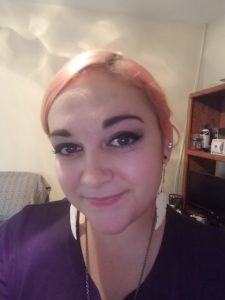
About Deann: Deann describes herself as someone who is easy to please and who delights in the simple joys of life. She was proud of her career as an EMT, and appreciated the opportunity it afforded her to help people in need. Then one day a motorcycle swerved into her lane, totaling her car. The motorcyclist walked away from the collision with road rash, and Deann needed back surgery. She tried to function through the pain for quite a while, trying every conservative treatment she could find, but her life was severely limited. Unwilling to accept this as her new reality, Deann made the tough decision to go ahead with the microdiscectomy suggested by Dr. Ali Bagheri.
Diagnosis: Herniated discs
Path to Treatment: Physical therapy, chiropractics, yoga, acupuncture, medications and supplements, massage
Procedure Overview: Microdiscectomy L4-S1
Life Now: One month after surgery, Deann was cleared to get back to work and resume life as she knew it. In the best interest of her back, she has decided to leave behind the heavy lifting involved with being an EMT, and is pursuing training in psychology counseling. This has been an emotional journey for Deann; she has cried many happy tears. “I cried the first time I put on socks after surgery…I expected pain, but there was none.” Deann is beyond grateful to her surgeon and his team, and she has joined The Better Way Back to support others who may be facing similar pain and fear.
Jared L.

“I split fifteen cords of firewood in the last two weeks!”
View Story
About Jared: Jared is the first to admit that he hasn’t exactly lived a “soft life.” He points to a number of contributors to his back problems: serving in the U.S. Army, working many years as a welder for the Union Pacific Railroad, waterskiing injuries as a teenager, along with some “bad genetics.” One night, he and his wife decided to stay in and watch a movie. As Jared got up to put a DVD into the player, he suddenly dropped to the ground in pain. After that initial trip to the emergency room, Jared spent the next three years coping with his back pain through conservative treatments like epidurals. When Dr. Hills suggested a surgical plan to treat Jared’s degenerating condition, they decided to pursue it.
Diagnosis: Herniated disc, bulging disc, stenosis, degenerative disc disease
Path to Treatment: Injections
Procedure Overview: XLIF and ALIF with posterior instrumentation L4-S1
Life Now: Though Jared was up walking the day after surgery, he felt like he’d been hit by a train during those first two weeks of recovery. This was exactly what Dr. Hills had prepared Jared to expect. Even a simple sneeze was agonizing. Now, Jared has resumed his old hobbies and is building a new house! He’s even back to splitting firewood. Because of the congenital issues with his spine, Jared fully expects this to be a life-long journey for him, and he plans to take it one step at a time. As an ambassador for The Better Way Back, Jared offers to share his own valuable insights into the surgery and recovery experience with others who are suffering.
Julie M.

“If I can help even one person feel like they're not crazy, then it will be a satisfaction.”
View Story
About Julie: Julie’s back pain started when she was involved in a car accident. As a passenger in the vehicle, she experienced intense whiplash, but didn’t immediately know that anything was seriously wrong. The night of the accident, she awoke with symptoms of hypersensitivity in her left arm. This prompted her to go to the emergency room. The ER physician recommended she consult with her primary care doctor about the possibility of a pinched nerve. She was then recommended to see neurosurgeon, Dr. Michael Dorsi, and two months after her accident she was able to have an ACDF procedure.
Diagnosis: Stenosis
Path to Treatment: Julie tried steroid medications to help with inflammation prior to surgery.
Procedure Overview: ACDF C5-C6
Life Now: Immediately after her procedure, Julie felt relief in her neck, but still had nerve sensitivity in her left arm. She was very happy with Dr. Dorsi’s skill and is continuing to recover by using a spinal cord stimulator. Thinking back on all the appointments and hoops she jumped through to get to this point, Julie says, “I would do it all again in a New York minute. It was definitely worth it.” She describes her decision to have surgery as a lonely and emotional process. As a Patient Ambassador, she is looking forward to giving others the power of being heard.
Joseph M.

“By keeping a positive attitude and setting short-term goals with an eye on what I want to achieve, I will get there!”
View Story
About Joseph: An ever-active lifestyle started to catch up with Joseph in his early sixties. In the workplace, Joseph was on his feet constantly while carrying heavy loads, and in his free time he enjoyed surfing, biking, swimming, and hiking. Eventually, his lower back pain forced him to cut back and miss out on the activities he loved. After trying some unsuccessful conservative care options, it was Joseph’s general physician who leveled with him and said, “Joe, it’s time to take the rock out of your shoe.” He recommended Dr. Salvatore Zavarella. Joseph knew right away that Dr. Zavarella was the right choice for getting him back in the active game of life.
Diagnosis: Stenosis, bulging and herniated discs, arthritis
Path to Treatment: Chiropractic care, physical therapy, injections
Procedure Overview: XLIF L3-L5 with percutaneous fixation
Life Now: Joseph used a walker on day one of his recovery, but he was on his own after that. Four months later, he is walking four to five miles per day and swimming a solid mile three times a week. He projects that he’ll be back to surfing soon! Joseph has always had a happy, positive outlook on life, and that can-do attitude is helping him reach his recovery goals.
Irene L.

“I’m back to gardening and choir directing!”
View Story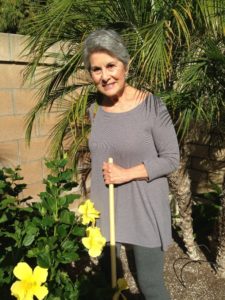
About Irene: Irene describes herself as short in stature (not quite five feet tall), so she has gone through life looking up. Nothing was ever at her ideal level, so she compensated physically. She thinks that this prolonged, irregular use of her neck contributed to her pain. Gradually as she aged, Irene began to notice that ordinary activities of her life were now filled with pain. Driving, for instance, became harder because swiveling her head caused a lot of pain and triggered headaches. Irene was an avid gardener and enjoyed doing projects around the house, including painting the interior of her home. One night, Irene was unable to sleep due to the severity of her pain. That episode caused her to look seriously for treatment options. After a diagnostic MRI, Dr. Dorsi and his team recommended a decompression and posterior cervical fusion for Irene.
Diagnosis: Cervical stenosis of C4-C7
Path to Treatment: Irene stayed active and healthy in an attempt to manage her neck pain.
Procedure Overview: Decompression and posterior cervical fusion at C4-C7
Life Now: Irene is very glad she had her procedure. Initially it was a tough recovery, but it wasn’t long before she did not need to take any more pain medication. Physical therapy was helpful as she regained her strength, and she remained very cautious about her activities for about a year after her procedure. Irene is so grateful that now she can get a good night’s sleep! She no longer has to suffer while she gardens and paints. She has also resumed her musical hobbies and choir directing! Irene is happy to tell her story of life after back surgery.
Barbara W.

“It’s a powerful thing to hear that you can have back surgery and survive!”
View Story
About Barbara: For many years, Barbara attributed her back pain to the high stress and workload of her job, but sadly, retirement was not the cure. On vacation in 2014, while touring the streets of Dublin, Ireland, Barbara experienced burning pain on her right side that forced her to find a place to sit down every 15 minutes. By the time she could find a resting place, she was trembling from the pain. Barbara put off seeking treatment for her condition for several more years, doing extensive research on her possible options. She suffered considerably during that time, and her routine chores became impossible. Her neurologist warned that if she didn’t pursue treatment she would likely be wheelchair-bound in under two years. When Dr. Renaldo recommended the TLIF procedure for Barbara, she was impressed that he was so caring and took the time needed to explain everything to her.
Diagnosis: Spinal stenosis
Path to Treatment: Injections and physical therapy
Procedure Overview: TLIF L3-L5
Life Now: Barbara depicts those first couple of months at home as “not pretty.” Recovery was rough - even taking a deep breath hurt. Her husband has been an essential part of her recovery process, and she is so grateful for all his help. Barbara said that having a solid support system in place has been just as critical for her as finding a gifted surgeon. She is now actively engaging in physical therapy, and is building up her stamina for longer walks. For the time being, she ventures out on short walks within her neighborhood. Commenting on her ongoing recovery, Barbara says, “There's a lot that I celebrate! I see small improvements every week.” She is eager to share her incredible success story to help alleviate anxiety that other patients may be experiencing.
Risa D.

“I feel 100% normal with no pain!”
View Story
About Risa: Risa was diagnosed with degenerative disc disease three years prior to her decision to go forward with surgery. She tried many conservative measures to manage her pain, and was grateful that her surgeon didn’t rush to suggest a surgical procedure. In fact, she had heard so many stories of negative outcomes that she rejected the idea of surgery completely. Eventually, Risa became terribly sleep deprived because nothing would give her relief. When she couldn’t even walk down the aisle of the grocery store, she knew it was time to consider surgery. Risa appreciates Dr. Prasher taking the time to talk through all the details of the procedure to satisfy her questions and concerns.
Diagnosis: Degenerative disc disease
Path to Treatment: Physical therapy, epidurals, medication
Procedure Overview: XLIF L4-L5
Life Now: Risa describes her recovery as “quick,” and she was surprised at how quickly she felt normal again. The thing she looks forward to the most is walking on the beach again. She used to walk for miles, but hasn’t been able to do that in three years. Now that she is back to working full-time, Risa is focused on getting back into the groove and re-energizing her exercise plan to reflect her new lease on life. She also deeply empathizes with the fears and concerns patients can experience before surgery, so she has made herself available to share her inspiring story of hope with others.
Pat G.

“I’m back to going to the gym, walking, and traveling!”
View Story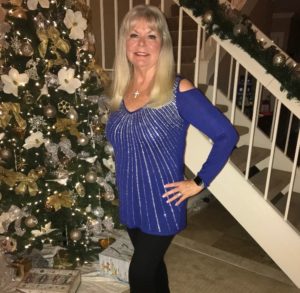
About Pat: Always an athlete, Pat played tennis in a competitive league until her knees wore out. She remembers episodes when she would feel her back give out, and it took roughly two weeks to calm down her pain. Pat grew frustrated when repeated attempts to treat her pain through conservative methods were unsuccessful. Shortly before she was scheduled to go on a cruise in 2015, Pat strained her back again. She barely got it to calm down before the trip, and it was then that she realized she needed to advance her treatment. At first, she was firmly against surgery, but eventually, she couldn't even get up from a chair. When Dr. Burdi told Pat she was a good candidate for the XLIF procedure, she was all in.
Diagnosis: Degenerative disc disease (DDD)
Path to Treatment: Pat tried medications, injections, steroids, and physical therapy, but these only gave limited relief
Procedure Overview: XLIF L2-L3
Life Now: Pat surprised her physical therapist when she opted not to use her walker just three days after surgery. Pat describes her life now as freedom! She can go to a restaurant and get up and down from her seat without trying to hide her pain from people. Not only is she now pain free, but her recovery has been every bit as easy as Dr. Burdi described. Only a month and a half into her recovery, Pat said, “I am moving with such ease it is hard to believe I had major back surgery just six weeks ago.” Her scars are very small and almost imperceptible. Pat is now an active Ambassador with The Better Way Back and eager to tell her story of hope.
Rene L.

“I have better mobility than before!”
View Story
About René: Suffering from numbness and tingling in her arms and hands for over fifteen years, René had to make a very difficult decision to finally have neck surgery. She had reached a point where she could no longer do basic things, like use a computer mouse. Following an auto collision in 2016, she was diagnosed with a broken bone in her neck. Surprisingly, it didn’t give her much pain, but her balance was affected greatly, causing her to fall a lot. Sometime later, she consulted with Dr. Hills, and he assessed that her risk of spinal cord compromise had become urgent. He recommended an ACDF procedure for René.
Diagnosis: Degenerative disc disease
Path to Treatment: Medications
Procedure Overview: ACDF C4-C6
Life Now: The surgery restored René’s cervical alignment which helped her regain the balance she had lost. She’s even back to hiking and walking on snow and ice safely! René celebrates even seemingly small achievements now, like having the ability to look to the right without pain while driving. Prior to surgery she had some worries about loss of movement from the fusion, but now she says, “I have better mobility than before!” René spoke with a TBWB Patient Ambassador before her surgery, and shared that he helped her a lot. “Everything he said was spot on!” Now, René volunteers her time to speak with patients to share her own story of life after back surgery.
Kensleigh O.

“I can’t imagine my life without gymnastics. It’s not just something I love…it’s my life. I’m back to competing!”
View Story
About Kensleigh: During her freshman year of high school, Kensleigh stress-fractured her back in a gymnastics routine. She took a season off to try and heal her injury, but on her first day back to school she re-fractured her vertebra as she executed a jump on the balance beam. Very frustrated, she went back to wearing the brace. With an immense amount of effort to get back on the mat, Kensleigh pushed through a lot of pain in order to earn a full-ride scholarship to the University of Pittsburgh. During that first semester, she recounts that the numbness and tingling in her legs grew much worse. She consulted with the university physician, who said she needed surgery and her career as a gymnast was over. Suddenly, Kensleigh was faced with the death of a dream – one she had worked towards since she was two years old. A relative recommended she consult with Dr. Kwon in her home state. Dr. Kwon recommended the XLIF procedure to remedy the situation, and told Kensleigh that he was confident she could one day return to gymnastics. When Kensleigh told her coaches about her decision to have the surgery, they informed her that she would likely forfeit her scholarship, adding, “It’s time you realize you’re not a gymnast anymore.” Undaunted, Kensleigh flew to North Carolina at 5am on surgery day, after taking a college exam the night before.
Diagnosis: Stress fracture and grade 4 spondylolisthesis
Path to Treatment: Hard-shell back brace and rehabilitation
Procedure Overview: XLIF L3-L4
Life Now: A week after surgery, Kensleigh says she was completely pain free. She was amazed at how good it felt to stand up without pain. Kensleigh took her recovery very seriously. She spent the entire summer rehabilitating her body. "Anything I put my mind to, I'm going to conquer, no matter how big the hurdles are,” Kensleigh said. To the amazement of her coaches and peers, she made it through the new year boot camp and began competing with the team again! Reflecting back on that that toughest of times, Kensleigh said, “I had to remember how strong I am as a woman, and how powerful I can be.” Kensleigh is now an ambassador with The Better Way Back®, sharing her story of resilience and hope with others facing similar challenges.
Stephen B.
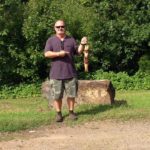
“After a point – when it feels like an icepick in your back – you just decide it’s time.”
View Story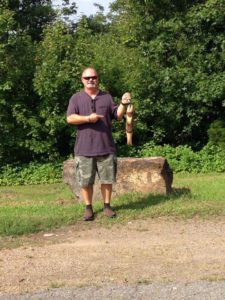
About Steve: Nine years after his first fusion at C5-C7, Steve found himself struggling with painful symptoms from an adjacent spinal level: C7-T1. The pain had grown progressively worse, but things suddenly escalated on a trip to New York for a wedding. At the wedding reception, Steve dropped a plate…then he dropped three more. He grew even more alarmed when his arm, face, and ear started to go numb. Upon his return home, he immediately went to the E.R. The nurse attempted to contact multiple orthopedic surgeons with no success. After finally Dr. Prasher came on the scene, Steve was immediately scheduled for surgery the very next morning.
Diagnosis: Arthritis, bone spurs
Path to Treatment: Symptoms progressed so rapidly that Steve didn’t try any other conservative treatments prior to surgery.
Procedure Overview: ACDF C7-T1
Life Now: When asked how he’s doing now, Steve says, “I’m fabulous!” He admits that all of this has slowed him down for the time being. He’s had to press pause on bodybuilding and martial arts, but is feeling ready to get back to his work as an aircraft mechanic. Always an active guy, Steve is already trying to safely push his limits as he recovers. Steve makes no bones about his feelings towards his surgeon, “Prasher is the man! I love that guy!” Grateful to be on the go once again, Steve has decided to give back to other spine patients by sharing his story of hope.
Carla W.

“I’m delighted that spine surgery has come out of the closet and advanced to the point that it has now!”
View Story
About Carla: As someone who is always on the go, Carla struggled when she broke her foot and had to hobble around with a boot for six weeks. Her uneven gait during that time exacerbated a pre-existing condition in her back, and she began to experience a great deal of pain. Every morning was an immense effort to work through her discomfort to simply get moving for the day. She spent a year and a half trying conservative treatments, but her symptoms grew worse as time passed. Finally, Carla decided she couldn’t continue living with the poor quality of life she had been tolerating. After consulting with Dr. Hills, she decided to move forward with his suggestion of a surgical procedure.
Diagnosis: Stenosis
Path to Treatment: Physical therapy, medications, epidurals
Procedure Overview: XLIF L4-L5
Life Now: Carla recovered so easily that she worried her story might be “too good to tell.” She understands that some people do have difficult recoveries, but is grateful that it wasn’t the case for her. She did experience some post-op discomfort, but within ten days she was able to drive again. “I was walking a half mile before I knew it,” she explained, and now she can walk three to six miles without any pain! Carla feels like she quickly regained the ability to perform her daily routines like personal hygiene, cooking, running errands, and socializing. She’s eager for spring to come so she can get back to riding her bike and working in her flower beds. More importantly, she is glad to be able to play with her young granddaughter again. Carla lets her story speak for itself as she sings Dr. Hills’ praises and tries to dispel misconceptions people may have about spine surgery.
Annette W.

“I feel completely normal now! I have zero pain!”
View Story
About Annette: On December 4, 2016, Annette fell off a ladder while hanging Christmas lights. She landed on a concrete surface, flat on her back. “This set off the dominos,” said Annette. The fall, combined with some pre-existing congenital problems in her back caused a portion of her spinal column to collapse, crushing nerves to her legs. “The pain in my legs made me feel like a human voodoo doll. It was stabbing, shocking, and on fire,” Annette shared. She describes the pain as so severe that she was literally screaming at night, muffling her outcries with a pillow so the neighbors wouldn’t worry. It took Annette several months to find a good surgeon, get a diagnosis, and finally get approved for surgery. Dr. Hadden recommended a combination of procedures to approach her spinal conditions, and the surgery took almost nine hours.
Diagnosis: Spondylolisthesis and kyphoscoliosis
Path to Treatment: Physical therapy and injections
Procedure Overview: XLIF® & ALIF with posterior spinal fusion L3-S1
Life Now: Annette came home after a six-day hospital stay, and by the second week post op her pain was 75% gone. By the third week she started teaching classes at the university again! Her colleagues noticed her progress by leaps and bounds, commenting on her improvement each time she was on campus. The same spunk that gave her the ability to endure prior to surgery, served Annette well during her recovery. “I committed to be the model patient, obey the doctor’s orders, and do all of my exercises,” she recounts. Ever grateful to Dr. Hadden, Annette is now living her life to the fullest!
Judith C.
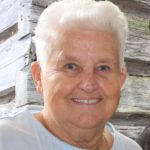
“I can walk and get around, and I’m in pretty darn good shape!”
View Story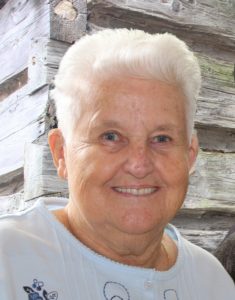
About Judith: Judith dealt with lower back pain for quite some time, trying conservative treatments like acupuncture and injections. Then in February of 2017, she took a hard fall, breaking a shoulder and exacerbating her back pain. Some of the physicians she consulted with wanted her to try more spinal injections, but she felt she needed a long-term solution. However, she was somewhat leery of trying surgery, since none of the other treatments had proven effective. Then she met Dr. Prasher. “He got the message that I was really hurting, and he was very compassionate,” she says. Judith trusted Dr. Prasher to perform a decompression and fusion procedure to help with the symptoms she was experiencing.
Diagnosis: Degenerative disc disease
Path to Treatment: Acupuncture, injections
Procedure Overview: MAS TLIF L4-L5
Life Now: Judith describes her recovery as “fine!” She was so miserable beforehand that her post op pain seemed nominal by comparison. Judith is able to get around without pain, and she’s already back to doing her housework. She says she does get tired now and then, but chuckles as she admits that it may have something to do with her age. Her surgery was a complete success, and Judith gives the whole experience a bold “thumbs up!”
Milan G.

“I’m back to give back and live life to its fullest!”
View Story
About Milan: Walking into the Chicago airport, Milan slipped and fell hard, severely injuring his back and legs. Ten leg surgeries later (including a complete knee replacement), Milan was finally in a position to receive treatment for his back. Due to his compromised spine, he had lost most of the feeling in his feet, was in excruciating pain, and taking high doses of pain medications. Dr. Tayyab advised a fusion of L5-S1 and a synovial cyst removal to help Milan’s symptoms. After the operation, Milan experienced total freedom from his pain, but sixteen months later he suffered adjacent level failure. Once again in tremendous pain, he consulted Dr. Tayyab, who recommended an extension of his previous fusion.
Diagnosis: Stenosis
Path to Treatment: Medications, healthy lifestyle
Procedure Overview: ALIF & XLIF L4-S1 & synovial cyst removal
Life Now: Milan knows that keeping a healthy diet and lifestyle have been vital to his recovery from both surgeries. He continues to actively engage in physical therapy and other restorative treatments in an effort to heal 100% - both mentally and physically. Milan celebrates his ability to walk again and is very passionate about sharing his experiences for the benefit of others.
Ann T.

“Even after three days of hard hiking I didn’t have any back pain!”
View Story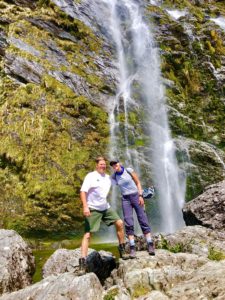
About Ann: Throughout Ann’s life, she enjoyed a long history of athletics, including competitive swimming and long-distance running. However, two years before making the decision to have surgery, Ann had to give up running completely. She tried to stave off surgery with physical therapy, Pilates, and spinal injections, but the pain became too much to bear. Realizing it was time to move ahead with Dr. Brown’s recommendation for the ALIF procedure, Ann set her sights on recovering in time for a trekking adventure in New Zealand just five months after her scheduled operation.
Diagnosis: Stenosis
Path to Treatment: Physical therapy, Pilates, injections
Procedure Overview: ALIF L4-L5
Life Now: Three months into her recovery, Ann described that she was pain-free about 95% of the time. “I feel great, and I’m really happy I had it done,” she said. Ann gradually increased her core exercises and worked up to walking four to six miles a day. The New Zealand trip became a reality, and Ann was amazed after three days of solid hiking that she didn’t have any back pain! Now Ann has a new goal: return to full strength. She has already gone back to nursing part-time, but recognizes that more time is required to heal and restore her body back to her former strength. Ann is fully committed to going the distance, and she’s eager to help others by sharing her story along the way.
Mary Ellen M.
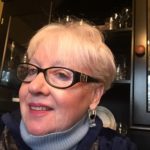
“It’s amazing how good it feels just to breathe again!”
View Story
About Mary Ellen: Shortly before the Christmas of 2016, Mary Ellen fell at work shattering her L2 vertebra. She was so incapacitated that her husband took a leave of absence from work to help her with her personal care and chores around the house. Mary Ellen said she almost felt like her life was over at that point. Dr. Renaldo confidently suggested a kyphoplasty procedure, and it was a great success. However, because her balance is somewhat unsteady, Mary Ellen fell again a few months later. After another kyphoplasty by Dr. Renaldo, Mary Ellen was back on her feet. Then in December, she fell down the stairs with a cup of coffee, fracturing three thoracic vertebrae. She was in such immense pain that she couldn’t take a deep breath and sneezing was too painful to bear. Since she had recovered so well from her previous procedures, Dr. Renaldo performed another kyphoplasty procedure on all three fractured levels.
Diagnosis: Osteopenia
Path to Treatment: Physical therapy
Procedure Overview: Kyphoplasty T5, T8, T9
Life Now: Mary Ellen is taking every precaution to prevent falls from now on. She says her recoveries haven’t been too difficult, and now she is wandering around her house and doing her own laundry! She loves to travel and is planning a trip to Ireland in March. “I don’t want anything to stop me from traveling!” Now Mary Ellen is a positive voice of hope for The Better Way Back®.
John S.

“My goal was simple: I wanted to be able to walk again.”
View Story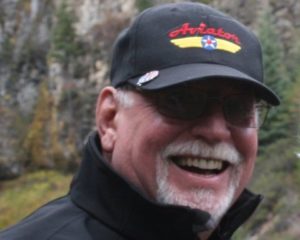
About John: John’s journey with spine pain began at least twenty years ago. His legs are unequal in length, and this pathology undoubtedly contributed to the worsening of his scoliosis over time. After having both hips and one knee replaced, John decided it was finally time to get help for his spine too. He consulted with several surgeons, but struggled to find one who was willing to do the operation. John met with Dr. Hadden at the suggestion of a friend, and he found Dr. Hadden to be very forward-thinking and sensible in his approach to treatment. Even though he was told to expect a year for recovery, John knew the fusion was the right move for him.
Diagnosis: Scoliosis, multiple compressed discs
Path to Treatment: Prior discectomies and fusion of L3-5, injections, radio-frequency ablations, physical therapy and spinal cord stimulator
Procedure Overview: ALIF L5-S1, XLIF L1-L4, and posterior fusion of T8-S1
Life Now: “Chronic pain is no picnic. I didn’t want a Band-Aid!” John knew what he was getting into with this extensive operation. Even still, after twenty hours of surgery it’s understandable that the recovery challenged him both physically and emotionally. He realizes that healing just takes time, and he’s aiming to be able to hit a golf ball one of these days. Another thing John is eager to get back to is fly-fishing. He is doing his exercises, and keeping his eye on the goal. As a Patient Ambassador for The Better Way Back, John’s candor about his journey with pain, treatment and recovery is extremely valuable.
Debbee H.

"I'm back to dancing and acrobatics!"
View Story
About Debbee: For about three years, Debbee felt ongoing pain in her back. Her pain was getting worse over time so she received a few rounds of epidural injections. Injections did provide her relief for a few months. Imaging revealed that two spinal discs were degenerating and compressing her sciatic nerve. Debbee found herself unable to do anything without severe pain. A friend recommended Debbee consult with Dr. Eric Elowitz. After her exam and seeing her images he knew a surgical plan was her best option. Dr. Elowitz made room in his schedule and four days later she had the XLIF procedure.
Diagnosis: Degenerative disc disease (DDD)
Path to Treatment: Epidural injections, physical therapy, and other conservative treatment options
Procedure Overview: XLIF® L4-L5
Life Now: The same day as her procedure, Debbee was up and walking. The following day she was discharged and able to walk out of the hospital. For a few days, she had some pain at the incision site, but that quickly subsided. Within two weeks, Debbee was back at the gym doing light stretching. After six months, she was back to acrobatics and tap dancing! “Dr. Elowitz gave me my life back. Without this surgery I don’t know how long I could have gone on.” She feels like this procedure made a dramatic difference and she is extremely grateful to have her life back. Debbee is eager to speak with patients and help support them through their recovery.
Robert G.

"I'm back to living without back pain!"
View Story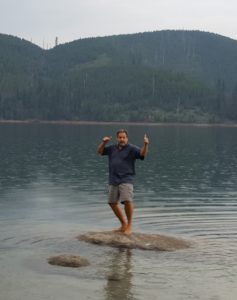
About Robert: Robert coped with his back pain for twenty years, holding out hope for surgical technology to improve. He feels that the physical demands of his job and staying on his feet for ten to twelve hours at a time definitely contributed to the wear and tear on his back. One night, Robert tweaked his back during a sneezing fit and could barely move for a week. When he got to the point where he couldn’t stand for more than ten minutes at a time, he decided something needed to be done. He consulted with Dr. Tyler Smith, who recommended the XLIF procedure.
Diagnosis: Degenerative disc disease and osteophytes
Path to Treatment: Robert tried chiropractic care, physical therapy, epidurals, and cortisone shots, but they failed to give long-term relief.
Procedure Overview: XLIF L3-L5
Life Now: Robert woke from surgery very relieved to find that his pain was gone! He had some initial soreness from the incision site and described the first month as the hardest. His physical therapy routine helped during recovery, and he has been fully invested in the long process of regaining his stamina. Robert expressed that the post-operative fatigue has been one of the toughest parts of recovery. Today, Robert says he feels like a new man! His only regret is not doing the procedure sooner, and he says, “Dr. Smith has been a life-saver!” Robert is now a vibrant member of the Patient Ambassador community of The Better Way Back®.
Diane R.

"I climbed Mt. Kilimanjaro a year after surgery!"
View Story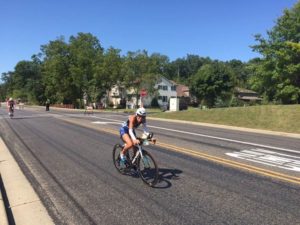
About Diane: Diane is a retired nurse who has always lived an extremely active lifestyle. When the narrowing of her spinal canal started creating symptoms that limited her activities, it was increasingly painful and frustrating. Even after hearing from Dr. Zlomoslic that a surgical procedure was inevitable, Diane tried to hold out long enough to compete in her next triathlon event, but to no avail. Gradually, she was unable to stand up straight, and could only walk her dog a quarter of a city-block. The dropfoot became uncontrollable, and she completely gave up running and swimming. Diane couldn’t get relief from lying down. She found that the only comfortable stance she could assume was the tri-bar position on her bike!
Diagnosis: Degenerative disc disease, stenosis, spondylolisthesis
Path to Treatment: Physical therapy and injections
Procedure Overview: XLIF and Laminectomy L4-5
Life Now: Diane was told that she would need to take it easy for a while after surgery, and she describes that as the hardest part. “I was bored to death!” Needless to say, Diane got active as quickly as possible postoperatively. On the one year anniversary of her spinal procedure, Diane was climbing Mt. Kilimanjaro – the world’s highest free-standing mountain! Since her surgery, she has also completed four half-Ironmans and a full Ironman. Diane appreciates that she can now fulfill her obligations as a volunteer at the local wildlife center without limitations, as well. When she’s not out adventuring, Diane makes herself available to encourage others who are suffering, by sharing her incredible recovery story.
Mark O.

"I feel like I have ten years of my life back!"
View Story
About Mark: Mark has been suffering from back pain for over ten years. He went to the ER several times and they kept attributing his pain to his kidneys. He went to a specialist who put him on medication that was supposed to make the pain go away, but he still found no relief. He decided it was time to consult an orthopedic specialist and found Dr. Leckie. Dr. Leckie ordered an MRI that showed Mark had severe stenosis with multiple levels of herniated discs. He was confident in his diagnosis and Dr. Leckie’s care plan for a decompression procedure so Mark had surgery two weeks after his initial consultation.
Diagnosis: Stenosis and disc herniation at L1-L5
Path to Treatment: Mark tried a variety of pain medications and conservative treatments
Procedure Overview: Decompression
Life Now: Today, Mark is doing fantastic. Before surgery, he was almost denied the procedure because he had not done physical therapy, but he was unable to find a physical therapist to work with him as they felt his stenosis was too severe. Now Mark is pain free and is back to working and his day-to-day life! He is appreciative of Dr. Leckie and is looking forward to speaking with other patients and giving back as a patient ambassador.
Lucio D.

"I'm back to doing push-ups!"
View Story
About Lucio: Lucio’s back problems were the direct result of an auto accident. His car was hit so hard from behind, that his body suffered the equivalent thrust of seven G-forces. Among other serious injuries, his disc between C5-C6 was completely crushed, and subsequently misaligned. Lucio describes the feeling as if he were in a constant headlock, choking him all the time. He lost feeling in his left hand, and had numbness in half of his face. When Dr. Bagheri told Lucio that he would need surgery, he thought of his daughter who loves to dive and play in the ocean, and he decided he would do whatever it took to play beside her again. Lucio appreciated Dr. Bagheri’s clarity and confidence, and trusted him to perform the ACDF procedure.
Diagnosis: Stenosis and radiculopathy
Path to Treatment: Physical therapy, stretching, inversion tables, and healthy lifestyle choices.
Procedure Overview: ACDF C5-C6
Life Now: Lucio is ready to go out and live his life again. At his one month follow-up appointment, he was doing push-ups for Dr. Bagheri! Lucio advocates staying calm, eating well, having faith in your surgeon, doing your own research, and keeping a fighting spirit as you recover. Lucio is now a vibrant ambassador for The Better Way Back.
Bill N.
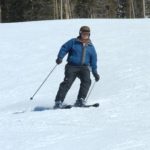
"I'm back to skiing!"
View Story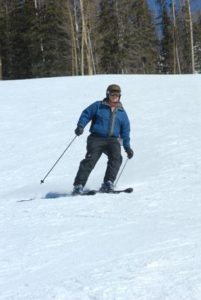
About Bill: As a rancher and farmer, Bill was no stranger to heavy lifting and an active lifestyle. The pain in Bill’s spine got so bad it reached the point where he decided to have a cervical fusion in 2002 and a lumbar laminectomy in 2010. The surgeries, however, did not give him the pain relief he was looking for. Prior to surgery, Bill also tried conservative methods of pain management including injections and pain medications, but they did not help. He went to see Dr. Jim Youssef to discuss long-term solutions. Practically bedridden due to intense pain, when Bill met Dr. Youssef he was told he was a candidate to have the XLIF procedure. Bill was very confident in Dr. Youssef and was ready to have his life back. He scheduled his surgery to be done two weeks after their consultation.
Diagnosis: Degenerative disc disease (DDD)
Path to Treatment: Bill tried pain medication and steroid injections before his surgeries.
Procedure Overview: XLIF L4-L5
Life Now: Bill left the hospital after four days, but stayed near the doctor’s office for two months while he began his recovery. Bill began physical therapy after returning home. At Dr. Youssef's suggestion and to his own benefit, Bill began changing his lifestyle and has lost over 40 pounds. Bill went from not being able to sit or walk, to skiing the same winter of his operation. Bill is still feeling excellent and has been able to increase his farming and ranching business tremendously. He has also been able to help his wife through her recovery from a recent spinal procedure with Dr. Youssef.
Donna C.

"Dr. Hunter has given me back my old life where I can go out again pain-free."
View Story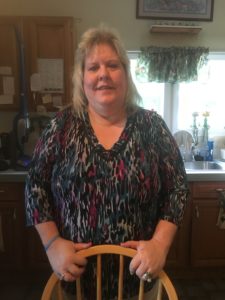
About Donna: Donna spent her career working as a certified medical assistant across multiple disciplines that included family practice, pediatrics, and plastic surgery. The mother of two adult children in their early to mid-twenties, Donna now lives on a lake with her husband after taking care of her parents for a number of years. She gently jokes that she used to have some bad habits, but that she is taking better care of herself in the wake of two spine surgeries: one for her lower back, and the most recent surgery for her neck.
Diagnosis: C5-C7 herniated discs and stenosis
Path to Treatment: Donna received injections for her neck pain and she also tried chiropractic treatments prior to returning to Dr. Hunter for a surgical solution.
Procedure Overview: ACDF
Life Now: Donna followed her postoperative instructions very carefully. She was up and walking the day of surgery and wore her neck brace throughout recovery "even while sleeping," she said. Donna is now back to taking care of her house without pain in her neck. She feels more energy and enthusiasm to spend time with her family, as her activity was fairly limited before her procedure. Now off pain medications, Donna describes Dr. Hunter's bedside manner as absolutely wonderful. "The morning of surgery he came to my room and spoke, reassuring me. Everything he said came true. I am so glad I went to him. He is the only neurosurgeon I would go to," Donna said. "Life and the aging process has improved because of his gentle hand."
Brenda B.

"Watch out...I'm on my way!"
View Story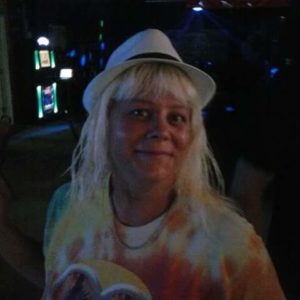
About Brenda: Brenda is a native of New York who moved to North Carolina in 2013. Part of her motivation for moving was to find a warmer climate with less snow, but Brenda was ready for change too, eager to begin anew. She had injured her neck and back following an automobile accident the year she graduated from high school. By the time Brenda addressed her injuries in 2003, she discovered she suffered from severe osteoporosis that, in her words, "made her bones mushy." Her NY surgeon addressed her neck issues, fusing her from C2 to T1. She wanted to wait to address her lower back, though, until her move to the South. Brenda married her husband shortly after her move, but marital bliss was tempered when her back flared up again. With her back pain and related issues too progressed for conservative treatments, Brenda turned to Dr. Hunter for help.
Diagnosis: L4-L5 Spondylolisthesis with stenosis
Path to Treatment: Brenda considered physical therapy and other conservative treatments, but her previous surgeries kept her from participating.
Procedure Overview: XLIF L4-L5
Life Now: Brenda was walking the day of surgery and able to leave the hospital the next day. She initially encountered some issues in her hip, but has fully recovered with pain management. Brenda is enjoying her life being married to her long-time sweetheart now and is establishing her own reupholstering business. "Anything that can be reupholstered, I can do it!" she shares proudly. After being unable to work for a few years, Brenda is passionate to rediscover something she loves.
Christopher K.

"I'm back to camping in the back woods and mowing the acreage on my property!"
View Story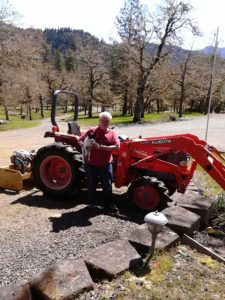
About Christopher: Christopher has always been a very active person; from his career in the Army to working over fifty years in construction. His construction career required him to do a lot of heavy lifting, hanging sheet rock and heavy beams. In his free time Christopher enjoyed playing softball. He has been tough on his body over the years and can’t actively remember a time when he didn’t experience some level of back pain.
Diagnosis: Spinal stenosis, spondylolisthesis, bursal cyst
Path to Treatment: Christopher tried physical therapy and consulted with a variety of physicians before seeing Dr. Peterson.
Procedure Overview: XLIF with posterior instrumentation at L3- L5
Life Now: Christopher was able to walk with the help of a walker the day of surgery and was sent home the next day! His recovery was going so well that at three weeks post-op Chris was able to stop taking all of his pain medications. Chris feels he was under the best care with Dr. Peterson and his staff. He states, “I always felt respected and that my time was as important as theirs. You can tell he and his staff are happy to be there and want to help you.” Chris is extremely happy to be back tending to his twelve acres of land with his wife and feeling that he has a normal day to day life again!
Dan N.
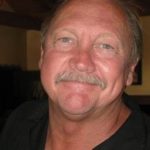
I'm back to being myself, and not walking around with a look of pain on my face!"
View Story
About Dan: Dan will be the first to tell you that he has been hard on his body over the years. He was an avid motorcycle rider and golfer with a high pain tolerance. Dan had his first spine surgery in 2004, but found that the procedure didn’t cure his back and leg pain, as he was still living with chronic pain. He adjusted his lifestyle to help his symptoms, but knew eventually he would likely have a second surgery.
Diagnosis: Degenerative Disc Disease (DDD), Stenosis, and Arthritis
Path to Treatment: Dan tried chiropractic, physical therapy, acupuncture and injections. He consulted multiple specialists including pain management; still nothing helped with his chronic pain.
Procedure Overview: XLIF and ALIF with posterior instrumentation and hardware removal
Life Now: When Dan consulted with Dr. Melamed, he could tell that he genuinely cares about his patients, was thorough in his explanations, and was the right surgeon for him. He is now over 6 months post-op and is feeling the best he has in years! He is back to working out almost every day and feels like he is back to being himself. Dan has a new perspective on life waking up without chronic pain!
Martha G.

"I'm back to having my sense of humor!"
View Story
About Martha: On December 6, 2016 Martha tripped on some clothes while in a dressing room. She thought she escaped relatively unscathed. Two weeks later when she returned to working out, she was suddenly in a great deal of pain. Her general practitioner first suspected strained muscles, but her chiropractor recognized there was a disc problem. After conservative treatments like acupuncture that were too painful, Martha met with Dr. Smith who recommended a microdiscectomy procedure.
Diagnosis: Stenosis, bulging disc
Path to Treatment: Chiropractic care, medication, and acupuncture.
Procedure Overview: Microdiscectomy L4-L5, posterior fixation
Life Now: Martha is now able to walk two miles a day and sleep comfortably at night. She is working with a physical therapist and is also participating in a full body core strengthening class at a gym. She is still working on regaining all of her strength, but she is back to baking and playing with her grandson. Martha is working real estate part time now, and is looking forward to sharing her experiences with other patients.
Marlene B.

"I'm back to living pain free, and enjoying my daily life!"
View Story
About Marlene: Marlene's back pain began when she twisted wrong while lifting the steps to her hot tub. She had three back surgeries prior to the XLIF procedure which failed to alleviate her pain and didn't address her offset vertebrae. Shortly after moving to central Oregon she woke up in excruciating pain. Marlene consulted with Dr. Hadden who recommended the XLIF procedure. He told her this approach should eliminate her pain and get her back into alignment. Marlene felt somewhat skeptical but knew with the pain she was in she had no choice.
Diagnosis: Stenosis at L3-L5
Path to Treatment: Physical therapy and injections
Procedure Overview: L3-L5 XLIF with percutaneous fixation
Life Now: Within three weeks of surgery Marlene was able to move to mild pain medications. She could move, walk and handle daily activities without terrible pain. She started physical therapy after six weeks. Following physical therapy Marlene was back to running, which she hadn't done since her broken hip. She expected to be limited in her motion (bending, twisting) which hasn't been the case. Marlene feels like she has a new back and can return to any previous activities, other than snow skiing, as tolerated. Marlene claims she has her life back, is better than she has been in years and is relatively pain free. She's hoping to share her story with other patients of Dr. Hadden's as a patient ambassador!
Janice T.

“I’m back to running my at-home business!”
View Story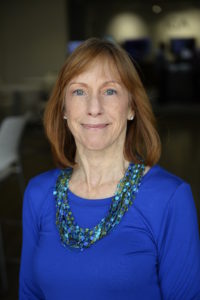
About Jan: When Jan’s pain started to interfere with her life, she first rationalized that she could just figure out how to work around it. However, her symptoms continued to escalate, and she would often wake up with severe pain during the night. After a particularly hard physical therapy session which left her completely unable to walk, Jan decided to go with Dr. Bruffey’s recommendation for surgery. Thinking back to that time, Jan says, “I thought I could work it out on my own terms, but I couldn’t stand to be in that amount of pain anymore.”
Diagnosis: Stenosis, degenerative disc disease
Path to Treatment: Physical therapy
Procedure Overview: XLIF L4-L5 with posterior laminectomy
Life Now: Jan describes her recovery process as “flawless.” She felt amazing emotionally and physically, and hasn’t looked back. As she eased back into her normal life, Jan slowly ramped up the length of her walks, and engaged in aqua therapy. She set realistic, achievable goals during her recovery – goals for her emotional health, as well as her physical strength. Less than three months after her procedure, Jan reported, “I have no discomfort or achiness. I am feeling 999% better!” She is back to running her dog-sitting business, and is busier than ever.
Robin T.

“I’m optimistic about life, and excited to make a difference in other patients like my Ambassador did for me!”
View Story
About Robin: Robin says she’s been “dealt a bad back”, because it’s been riddled with painful arthritis and bone spurs her whole life. Robin soldiered through, but the chronic pain took the joy out of her life. One day, Robin had a wake-up call when she realized she couldn’t walk and hold her grandbaby at the same time. She leveled with herself, asking, “Why am I waiting for this to get worse than it already is?” She began trying a whole range of conservative treatments for the referred pain in her hip and leg and finally consulted with Dr. Silcox. He originally thought a seven-level fusion would be needed, but the plan changed in Robin’s favor on surgery day, requiring a four-level TLIF instead.
Diagnosis: Scoliosis, stenosis, bulging disc, arthritis, and bone spurs
Path to Treatment: Robin tried injections, physical therapy, acupuncture, chiropractic care, and traction
Procedure Overview: TLIF L2-S1 with scoliosis correction
Life Now: Robin’s recovery was long and hard, but she says it would have been much harder without her Patient Ambassador’s support. In the first year after her TLIF, Robin also had a cervical laminectomy and rotator cuff surgery. She has remained tough and resilient and feels optimistic about life once again. Robin is back to trail hiking and biking, as well as lifting weights in the gym 6 days a week! She also swims and kayaks on Lake Lanier and enjoys gardening in her backyard. Robin has an amazing story of hope and recovery, and she is proud to share it as a Patient Ambassador.
Paul G.
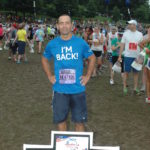
“What Dr. Uribe did was perform a miracle, and I feel like the luckiest guy in the world!”
View Story
About Paul: A successful Florida businessman, Paul developed back issues in his twenties, and suffered from chronic pain for the next decade. By age thirty-nine, the once avid surfer and triathlon runner was forced to use a wheelchair for mobility. When a discectomy failed to relieve his symptoms, Paul became wary of other surgical options. He finally sought out Dr. Juan Uribe for a consultation and decided to proceed with his advised treatment plan. Dr. Uribe performed the XLIF procedure at L3-L4 on March 9, 2010 and it was truly transformative. Paul felt almost immediate relief from his pain, and within the first four months he was walking five miles a day! He resumed running and working out at the gym, along with living his normal life. Seven years later, Paul experienced what is called “adjacent level failure” when the spinal level below his fusion deteriorated to the point that he was again in significant pain. This time, Paul knew exactly where to turn for help. Dr. Uribe performed another XLIF on Paul’s spine, this time at L4-L5. Shortly after that procedure, Paul experienced some symptoms that necessitated Dr. Uribe add some additional plating to the fusion site.
Diagnosis: Degenerative disc disease, stenosis, recurrent disc herniation, adjacent level failure
Path to Treatment: Chiropractic care, acupuncture, physical therapy, injections, medications
Procedure Overview: XLIF L3-L4 / XLIF L4-L5 / XLIF revision L4-L5
Life Now: Four weeks out from his most recent procedure, Paul is undaunted, and eager to get back to surfing, wakeboarding, and the gym. He’s already planning his next great adventure: running up a magnificent mountain in Mexico! Paul has faced his fear of surgery and now lends a listening ear and hopeful perspective to others like him who are still suffering.
Christopher S.
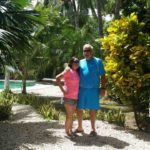
"I'm back to doing more today than I could yesterday!"
View Story
About Chris: One day on a job site, Chris accidentally fell into a three by twenty-five foot hole. That accident necessitated a fusion of his L4-L5 vertebrae in 2013, and then a car accident in 2015 caused one of the screws in his fusion to break. Already suffering from adult-onset scoliosis, Chris started to get numbness in both legs, and realized he was facing another operation. Dr. Leveque recommended a fusion of T10-S1 to realign Chris’s spine, and correct the broken screw. Chris was very motivated to have the surgery to get his life back. "I had the will that I was not going to die, even though there's always that risk." Chris was determined not to give up the things he loves about life in Alaska: spending time with his wife, riding his four-wheeler, and going fishing for halibut and salmon. He and his wife gave Dr. Leveque the go-ahead to perform the fusion.
Diagnosis: Bulging disc, scoliosis Path to Treatment: Chiropractic care
Procedure Overview: Fusion T10-S1, XLIF L2-L4, TLIF L5-S1, removal and re-instrumentation at L4-L5
Life Now: While Chris is still healing and getting stronger, he tries to abide by his limits. “My wife does my heavy lifting now. She's my rock." The first couple months of recovery were certainly the hardest. Chris still plans to get back on his four-wheeler and continue enjoying all that Alaska has to offer. Chris is also happy to share his story of life after back surgery with others who are suffering.
Roxanne O.

"I'm back to going all the time!"
View Story
About Roxanne: Ten years ago, Roxanne was helping move a
table and pulled a muscle in her back. When she went to the
doctor, she discovered that she also had scoliosis. She stayed
active and tried different treatments to ease her pain, but
nothing really helped. By the time she was recommended for
surgery she was two inches shorter and was slouched over
with a hump. She was taking Motrin daily and developed an
ulcer as a result. Her doctor in Bakersfield said she was too
complex of a case for him and referred her to three other
doctors. She consulted with Dr. Mundis and felt very
comfortable with him and his proposed care plan for her.
Diagnosis: Scoliosis
Path to Treatment: Roxanne tried exercising, pain
medication, and other conservative treatments
Procedure Overview: XLIF and posterior fixation L1-S1
Life Now: Roxanne was in the hospital for a week after her
XLIF procedure and went to the Scripps rehab center for a
week. She said the team at the rehab center was amazing,
and she felt they really supported her during her recovery.
She did have some complications two months post-op when
she fractured two vertebrae below her fusion, leading to a
second procedure. Now Roxanne is two years post-op and
she is doing fantastic! She is on the go all the time and is
looking forward to supporting other patients.
Christopher K.

"I'm back to camping in the back woods and mowing the acreage on my property!"
View Story
About Christopher:
Christopher has always been a very active person; from his career in the Army to working over fifty years in construction. HIs construction career required him to do a lot of heavy lifting, hanging sheet rock, and heavy beams. In his free time Christopher enjoyed playing softball. He has been tough on his body over the years and can't actively remember a time when he didn't experience some level of back pain.
Diagnosis:
Spinal stenosis, spondylolisthesis, bursal cyst
Path to Treatment:
Christopher tried physical therapy and consulted with a variety of physicians before seeing Dr. Peterson
Procedure Overview:
XLIF with posterior instrumentation at L3-L5
Life Now:
Christopher was able to walk with the help of a walker the day of surgery and was sent home the next day! His recovery was going so well that at three weeks post-op Chris was able to stop taking all of his pain medications. Chris feels he was under the best care with Dr. Peterson and his staff. He states "I always felt respected and that my time was as important as theirs, you can tell he and his staff are happy to be there and want to help you." Chris is extremely happy to be back tending to his twelve acres of land with his wife and feeling that he has a normal day to day life again!
Tanya L.

"I'm back to living life!"
View Story
About Tanya:
Tanya's back pain started in the summer of 2016 after an intense workout. She saw a chiropractor for three months but was finding no relief. Her pain got so bad that she couldn't even bend over to put her socks on. Tanya also started to notice she had moments she couldn't feel her right leg. After four months of enduring pain, Tanya consulted with Dr. Radwan.
Diagnosis:
Grade 4 Spondylolisthesis with congenital spina bifida occulta and pass defect
Path to Treatment:
Tanya tried chiropractic care and pain medication before deciding surgery was her best option.
Procedure Overview:
ALIF & PLIF, L4-S1 Decompression
Life Now:
The first few weeks after surgery, Tanya says, were worst in terms of pain she had experienced but she started feeling a little better every day. Six weeks after her procedure, Tanya felt great and was cleared to return to work on light duty. Tanya is an operating room nurse and was looking forward to getting back to helping other patients. Before surgery, back pain forced Tanya to give up a few of her favorite hobbies including running and weight lifting. She hasn't yet been able to return to intense workouts, but she is able to work out with light weights at the gym and is careful not to overextend herself. Tanya is looking forward to sharing her experiences with other preoperative patients.
Kylie S.

"I'm back to being active with my friends and enjoying life"
View Story
About Kylie:
At the age of eleven, Kylie started experiencing pain in her back and right leg. She consulted a sports doctor who said she wasn't stretching properly and referred her to physical therapy. The physical therapist was concerned there was more going on so he referred her to get an X-ray where they discovered she had a herniated disc. Kylie continued with conservative treatment but found that it wasn't working. At the age of twelve she and her parents decided she would try a discetomy procedure, unfortunately her pain cam back. Kylie had another discectomy at the age of fifteen. Though she found minor relief she still suffered from severe nerve pain that radiated down her leg. At eighteen she was recommended for a MAS PLIF with Dr. Khanna.
Diagnosis:
Recurrent herniated discs
Path to Treatment:
Traction, injections, physical therapy, and stretching
Procedure Overview:
MAS PLIF
Life Now:
In spite of having two previous microdisc surgeries, Kylie spent only one night in the hospital following her procedure. The rehab after her MAS PLIF helped her recovery tremendously, as this procedure was a little more extensive than her previous microdiscectomy. Kylie is thankful to Dr. Khanna and his team for the care she received. Today, she's back to working out and playing volleyball with her friends. She feels like she can do anything, within reason, and is happy to have her life back!
Gerard J.

"I'm back to playing corn hole, chipping, and putting the golf ball, all pain free!"
View Story
About Gerard:
Gerard spent most of his thirties in great shape but in retrospect he feels he pushed his active lifestyle too much which contributed to his back pain later in life. It was in his early fifties that his back pain became severe. His first attempt to fix his pain was intradiscal electro thermal therapy, which brought him temporary relief, but his back pain soon returned. When he started to re-examine the root cause of his back pain, he discovered that his L1 and L2 vertebrae had complete disc degeneration and were bone on bone. Gerard had never had a major spinal procedure but knew it was time to consult a specialist. Dr. Leckie recommended the XLIF procedure. Gerard felt comfortable with his approach to his care plan and decided surgery was the next step towards his getting his life back.
Diagnosis:
Degenerative Disc Disease L1-L2
Path to Treatment:
Gerard tried physical therapy, pain medication, and IDET
Procedure Overview:
XLIF
Life Now:
When Gerard returned home, his wife and son helped him through the recovery process. He started physical therapy four months later and now continues to practice the exercise at home. He had lost twenty pounds leading up to his procedure and lost another fifteen post-surgery. Today, Gerard is completely pain free! Dr. Leckie has cleared him to chipping and putting, but not driving the golf ball. Gerard continues to do work around his home and plans on strengthening his core until he can be back on the fairway.
Martha G.

"I'm back to having my sense of humor!"
View Story
About Martha:
On December 6, 2016 Martha tripped on some clothes while in a dressing room. She thought she escaped relatively unscathed. Two weeks later when she returned to working out, she was suddenly in a great deal of pain. Her general practitioner first suspected strained muscles, but her chiropractor recognized there was a disc problem. After conservative treatments like acupuncture that were too painful, Martha met with Dr. Smith who recommended a Microdiscectomy procedure.
Diagnosis:
Stenosis with a bulging disc
Path to Treatment:
Chiropractic care, medication, and acupuncture
Procedure Overview:
Microdiscectomy L3-L5, posterior fixation
Life Now:
Martha is now able to walk two miles a day and sleep comfortably at night. She is working with a physical therapist and is also participating in a full body core strengthening class at a gym. She is still working on regaining all of her strength, but she is back to baking and playing with her grandson. Martha is working real-estate part time now, and is looking forward to sharing her experiences with other patients.
Stephanie B.

"I'm back to living an active lifestyle and being pain free!"
View Story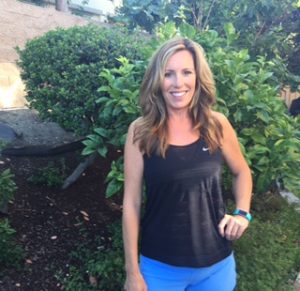
About Stephanie:
Stephanie had suffered with back pain for over 7 years that became increasingly more painful as time went on. Believing the pain could somehow be controlled by her own activities, she began experimenting with an extensive amount of treatment options and various doctors for relief, but to no avail. She met with Dr. Taghva in January 2017. After discussing her symptoms Dr. Taghva immediately ordered an MRI and an X-ray which had never previously been done. The results indicated that she had complete disc degeneration between L2-L3 and a twenty percent curvature in her spine. She was concerned about the procedure but grateful to finally understand the reason for her pain. Dr. Taghva recommended an XLIF procedure.
Diagnosis:
Degenerative disc disease L2-L3 with degenerative scoliosis
Path to Treatment:
Stephanie tried chiropractic care, prolotherapy, injections, massage, yoga, and pain medication
Procedure Overview:
XLIF and posterior fixation L2-L3, with scoliosis correction
Life Now:
Following surgery, Stephanie spent 6 days in the hospital. She was encouraged by Dr. Taghva and the rehab team to walk as part of her recovery program. Initially, she began walking short distances daily and has increased to five miles several days per week. She believes that the walking helped her recovery and has also allowed her to become stronger. Today she is pain free, full of energy and able to resume her active lifestyle. She will always be grateful to Dr. Taghva for his life changing recommendation. She is excited to be a part of The Better Way Back community and to be a patient ambassador.
Debbee May H.

"I'm back to dancing and acrobatics!"
View Story
About Debbee May:
For about three years, Debbee felt ongoing pain in her back. Her pain was getting worse over time so she received a few rounds of epidural injections. Injections did provide her relief for a few months. Imaging revealed that two spinal discs were degenerating and compressing her sciatic nerve. Debbee found herself unable to do anything without severe pain. A friend recommended Debbee consult with Dr. Eric Elowitz. After her exam and seeing her images he knew a surgical plan was her best next option. Dr. Elowitz made room in his schedule and four days later she had the XLIF procedure.
Diagnosis:
Degenerative Disc Disease (DDD)
Path to Treatment:
Epidural injections, physical therapy, and other conservative treatment options
Procedure Overview:
XLIF L4-L5
Life Now:
The same day as her procedure, Debbee was up and walking. The following day she discharged and able to walk out of the hospital. For a fdw days, she had some pain at the incision site, but that quickly subsided. Within two weeks, Debbee was back at the gym doing light stretching. After six months, she was back to acrobatics and tap dancing! "Dr. Elowitz gave me my life back. Without this surgery I don't know how long I could have gone on." She feels like this procedure made a dramatic difference and she is extremely grateful to have her life back. Debbee is eager to speak with patients and help support them through their recovery!
Marlene B.

"I'm back to living pain free, and enjoying my daily life!"
View Story
About Marlene:
Marlene's back pain began when she twisted wrong while lifting the steps to her hot tub. She had three back surgeries prior to the XLIF procedure which failed to alleviate her pain and didn't address her offset vertebrae. Shortly after moving to central Oregon she woke up in excruciating pain. Marlene consulted with Dr. Hadden who recommended the XLIF procedure. He told her this approach should eliminate her pain and get her back into alignment. Marlene felt somewhat skeptical but knew with the pain she was in she had no choice.
Diagnosis:
Stenosis at L3-L5
Path to Treatment:
Physical therapy and injections
Procedure Overview:
L3-L5 XLIF with percutaneous fixation
Life Now:
Within three weeks of surgery Marlene was able to move to mild pain medications. She could move, walk and handle daily activities without terrible pain. She started physical therapy after six weeks. Following physical therapy Marlene was back to running, which she hadn't done since her broken hip. She expected to be limited in her motion (bending, twisting) which hasn't been the case. Marlene feels like she has a new back and can return to any previous activities, other than snow skiing, as tolerated. Marlene claims she has her life back, is better then she has been in years and is relatively pain free. She's hoping to share her story with other patients of Dr. Hadden's as a patient ambassador!
Brenda B.

"Watch out...I'm on my way!"
View Story
About Brenda:
Brenda is a native of New York who moved to North Carolina in 2013. Part of her motivation for moving was to find a warmer climate with less snow, but Brenda was ready for change in general, eager to begin anew. She had injured her neck and back following an automobile accident the year she graduated from high school. By the time Brenda addressed her injuries in 2003, she discovered she suffered from severe osteoporosis that, in her words, "mad her bones mushy." Her NY surgeon addressed her neck issues, fusing her from C2 to T1. She wanted to wait to address her lower back, though, until her move to the South. Brenda married her husband shortly after her move, but marital bliss was tempered when her back flared up again. Wit her back pain and related issues too progressed for conservative treatments, Brenda turned to Dr. Hunter for help.
Diagnosis:
L4-L5 Spondylolisthesis with Stenosis
Path to Treatment:
Brenda considered PT and other conservative treatments, but her previous surgeries kept her from participating.
Procedure Overview:
eXtreme Lateral Interbody Fusion (XLIF)
Life Now:
Brenda was walking the day of surgery and able to leave the hospital the next day. She initially encountered some issues in her hip, but has fully recovered with pain management. Brenda is enjoying her life being married to her long-time sweetheart now and is establishing her own reupholstering business. "Anything that can be reupholstered, I can do it!" she shares proudly. After being unable to work for a few years, Brenda is passionate to rediscover something she loves.
Donna C.

"Dr. Hunter has given me back my old life where I can go out again pain-free."
View Story
About Donna:
Donna spent her career working as a certified medical assistant across multiple disciplines that included family practice, pediatrics, and plastic surgery. The mother of two adult children in their early to mid-twenties, Donna now lives on a lake with her husband after taking care of her parents for a number of years. She gently jokes that she used to have some bad habits, but that she is taking better care of herself in the wake of two spine surgeries: one for her lower back, and the most recent surgery for her neck.
Diagnosis:
C5-C7 cervical herniated disc and cervical stenosis
Path to Treatment:
Donna received injections for her neck pain and she also tried chiropractic treatments prior to returning to Dr. Hunter for a surgical solution.
Procedure Overview:
ACDF
Life Now:
Donna followed her postoperative instructions very carefully. She was up and walking the day of surgery and wore her neck brace throughout recovery "even while sleeping," she said. Donna is now back to taking care of her house without pain in her neck. She feels more energy and enthusiasm to spend time with her family as her activity was fairly limited before the procedure. Now off pain medications, Donna describes Dr. Hunter's bedside manner as absolutely wonderful. "the morning of surgery he came to my room and spoke, reassuring me. Everything he said came true. I am so glad I went to him. He is the only neurosurgeon I would go to," Donna said. "Life and the aging process has improved because of his gentle hand."
Sandy H.
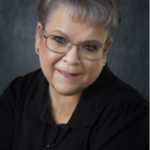
"I'm back to feeling 200%!"
View Story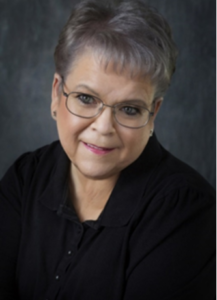
About Sandy:
Sandy had always led an active lifestyle. She struggled with back pain for about 30 years,during which she sought medical care and tried numerous conservative treatments. Although she was able to manage the pain, these treatments were only a short term fix. As her active lifestyle became increasingly inhibited in 2014, she consulted with her primary care physician and was recommended for an MRI. When her MRI results arrived, she was referred to Dr. Brett Braly and met with him in October 2014. When Dr. Braly recommended the XLIF procedure, Sandy was hesitant. She had heard too many horror stories regarding back surgeries.“I realized back surgery was in my future,” Sandy said, “but hadn’t found a doctor I could trust. Dr. Braly, however, made me feel safe and had a very calming voice. I felt like the time was right.”
Procedure Overview:
XLIF®
Life Now:
On October 28, 2014, Sandy underwent XLIF surgery.While in pre-op at the hospital, Dr. Braly came in. They talked about the surgery and Dr. Braly took her hand and asked if he could pray with her. This meant a lot to Sandy and made her feel safe going into the operating room.The surgery was a success and Sandy was walking immediately and able tore turn home after two days.Once she returned home, she continued to walk with the assistance of a walker for two weeks and then was able to walk unassisted. Sandy was positive about recovery and her family and friends were amazed at how she “bounced back”after surgery.As her recovery continued, Sandy participated in a physical therapy program for six weeks to increase flexibility and strength.Sandy’s chronic pain has now disappeared.“Unless you have had back pain for a long time like I have, it’s hard to imagine what it’s like to wake up one morning and be pain free,”said Sandy. Sandy is back to participating in the activities that she loves,which include spending time with her pets, yard work,taking care of her house, and passionately helping people and animals in need. She is passionate about becoming an Ambassador and inspiring other patients with her story. “I would like for back sufferers to know, if you have back pain, there are treatments out there for short term relief,” said Sandy. “But if you want a permanent solution, I would recommend an XLIF procedure.”
Sonja W.
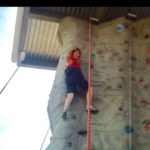
"Dr. Hunter has given me back my old life where I can go out again pain-free."
View Story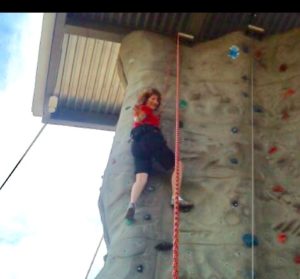
About Sonja:
Sonja has led an adventurous life, living in Costa Rica for 12 years as an assistant teacher while raising her grandson. The mother of two is also fascinated by electronics and loves the latest, greatest technology advancements available on the market. She loves softball, water skiing, and rock climbing too. Sonja is not a couch potato, so she was determined to find a solution when her back pain worsened causing her feet to go numb and making it difficult to walk.
Diagnosis:
L4-L5 spondylolisthesis and a pinched nerve on S1.
Path to Treatment:
Sonja primarily tried chiropractic care, but also tried acupuncture and injections for a while.
Procedure Overview:
TLIF
Life Now:
Sonja lived with pain for seven years before finding Dr. Hunter. Dr. Hunter came highly recommended by a neighbor who wouldn't trust anyone else to operate on her back. "I feel blessed to have found Dr. Hunter, someone I believed I could trust." Sonja connected instantly with Dr. Hunter. She was discharged after two days without back pain and continued with physical therapy to resolve the remaining sensation from her pinched nerve. With in-home therapy for two months, Sonja is now back to doing everything she loves including gardening, tending her hens, and doing approved exercises. "I'm the kind of person that just does things. Dr. Hunter and his staff have been great with me. He doesn't tell patients stuff he can't follow through on."
Simone C.

"Dr. Kelley gave me a new back, so I'm going to treasure it!"
View Story
About Simone:
Simone is an active mother of four children. She was a Certified Nursing Assistant for 19 years before transitioning into her current career as a Correctional Officer where she worked for the past five years. She enjoys activities with her children which she is thrilled to return to now that she is healed from back surgery.
Diagnosis:
L4-L5 herniated discs
Path to Treatment:
Simone tried physical therapy, steroid injections, myogram, pain pills, muscle relaxers and restless leg medication before considering surgery.
Procedure Overview:
XLIF®
Life Now:
Simone was up and walking within an hour of surgery. She even walked to the bathroom without assistance, surprising Physical Therapy when they came in for her first session. Six months post-op, Simone reports that life is great now. She is back to exercising which was something she couldn't do prior to surgery because of the pain in her back and legs. She is back to working 12-hour days without pain too. Before surgery, Simone was in so much discomfort she could barely walk. Today, Simone is grateful for Dr. Kelley who gave her a new back, one that she says will protect and treasure.
Michael D.
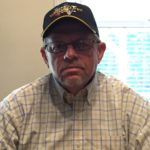
"I'm back to life 100% without any pain!"
View Story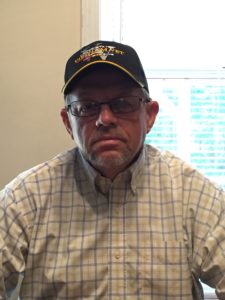
About Michael:
Michael is a 67-year old Vietnam veteran with a love for family and motorcycles. Michael says getting drafted at 18 was the best thing that ever happened to him because it provided him the discipline and structure to be successful later in life. Michael worked in construction upon his return to the States. Unfortunately, hard work and a lot of living caused two of Michael's discs to collapse over time, affecting his sciatica and leading to severe pain. After three years of pain he reached out to Dr. Kelley for advice.
Diagnosis:
L3-L5 degenerative disc disease with grade-one spondylolisthesis and stenosis
Path to Treatment:
Michael tried epidurals prior to making his decision to get spine surgery.
Procedure Overview:
XLIF®
Life Now:
Michael reports that his recovery is right on track. Nearly five months post-op, he is feeling great and living life without pain. He works smarter now, not harder, and he is careful not to lift too much. His surgery is a success in his opinion. He's now back to riding his motorcycle, fishing and pursuing carpentry work to stay busy. He enjoys working with wood. He received a shoulder replacement three years prior to his spine surgery. Knowing the key to recovery was rehabilitation, Michael made walking two times a day the cornerstone of his physical therapy plan. He ultimately walks two miles a day.
Michael B.
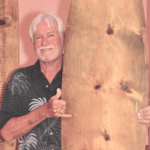
“I’m back to walking again without pain”
View Story
About Michael:
Michael started developing sciatic nerve pain three years ago. Mild scoliosis and arthritic deterioration of his L4-L5 were the culprits. His doctor recommended epidurals to manage his pain, but his discomfort came back within a month. Other conservative treatments like acupuncture also proved ineffective. With his active lifestyle and sleep patterns threatened, he decided to speak to a spine surgeon. He was lucky enough to consult with both an orthopedic surgeon and Dr. Morris Mitsunaga and Dr. Thomas Rogers a neurosurgeon. After reviewing films and discussion with Michael they decided he would be best served with an XLIF procedure.
Diagnosis:
Scoliosis and degenerative disc diseases at L4-L5
Path to Treatment:
Michael tried chiropractic care and epidurals.
Procedure Overview:
XLIF®
Life Now:
Although this has been a challenging process, Michael has taken a proactive approach to his recovery. After only six physical therapy sessions, he is back to walking over a half mile at a time and exercising in the pool. At first, Michael was skeptical of his need for professional physical therapy, but he has since seen the benefit from every session, and will continue to go until he is back to 100%. He is looking forward to being someone others can speak to about the XLIF procedure, and is eager to get back to his long beach walks.
Lauri E.
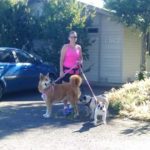
“This process has taught me a lot, including to slow down when needed”
View Story
About Lauri:
Lauri considers herself very active. Prior to surgery, she even ran two half-marathons and a full marathon in the same year. She was used to usual aches and pains, but after an incident with a snake while on a trail run, she started to feel serious back pain. She was busy with life and travel, so surgery didn’t even make it on her radar at this point. After two months of trying to manage her pain, she decided she couldn’t live like that anymore. After an appointment with Dr. Olsson on a Thursday, she was being admitted for surgery the following Monday.
Diagnosis:
Bulging disc L5-S1
Path to Treatment:
Lauri tried rest, physical therapy, pain medication, and epidural treatments
Procedure Overview:
Microdiscectomy
Life Now:
Lauri isn’t doing intense workouts anymore, but she still enjoys walking her big, fast-walking dog, cycling, yoga, hiking, and other low-impact activities. At four months post-op, she went back to Dr. Olsson to get cleared for work. She is glad she gave herself the time to properly recover and had the support of her husband who is a physical therapist. She’s happy to be back to her life, and is making sure she doesn’t experience an injury like this again.
Trina U.

“To be able to run up the bleachers holding one of my grandkids’ hands is the best feeling in the world”
View Story
About Trina:
Trina started having symptoms in May of 2016. She was losing strength in her hands and her ability to balance was declining. She spent months unable to play golf, walk upstairs, or live on her own. When Dr. Hills reviewed her MRI and her inability to walk down a hallway, he knew it was time for her to get an ACDF procedure.
Diagnosis:
Vertebrae pinching on her spinal cord
Path to Treatment:
Trina tried epidurals, stretching, and pain medications
Procedure Overview:
ACDF
Life Now:
Now ten months post-op, Trina is as close as ever to being 100%. She went through three rounds of physical therapy and did her best to walk every day. She was back to work in six weeks and was back to golfing and hiking at six months post-op. She feels like her quality of life is exponentially better than before her surgery and is planning on speaking with her first pre-op patient as a patient ambassador. She says her pain is gone and is looking forward to more hikes, more rounds of golf, and more evenings with her grandchildren.
Susan M.
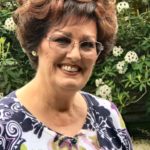
“I’m back to being pain free and volunteering at my church!”
View Story
About Susan:
Susan enjoys her life as homemaker and spends her free time volunteering at her church. She admits that she has a reputation for being overly helpful, often putting others in front of herself. She has always been very strong, both mentally and physically. These were positive character traits most of her life until she started suffering from severe back and leg pain and was ignoring her pain. The final straw for Susan was the pain she felt after spending four days at a convention. She soon decided it was time to see Dr. Olsson.
Diagnosis:
Spondyloisthesis, stenosis, and radiculopathy
Path to Treatment:
Susan tried physical therapy and one pain injection before she decided surgery was the best next for her.
Procedure Overview:
XLIF®
Life Now:
Susan is back to living life pain free! She has been doing physical therapy to help build her core strength and is working on healing her hip injury. She is now approximately six months post-op and has returned to doing pretty much anything she puts her mind to. Her husband has also been very helpful with housework which is a bonus! She felt that Dr. Olsson and his staff were very thorough with her. She was completely comfortable with him and her overall experience at the hospital. She can’t say enough good things about how she was treated at Southern Oregon Spine Care; the team was upbeat, encouraging, and empathetic! She is grateful to be back cooking and volunteering at her church!
Ted K.

“I can’t lift 200 lbs. bags of concrete anymore, but I’m feeling great”
View Story
About Ted:
Ted considers himself an avid outdoorsmen. He is also no stranger to surgeries, getting three major surgerieswithin one year! Twenty six years ago Ted fell while working construction and over the past few years he has been dealing with severe sciatic nerve pain. He attributes his pain to his lifestyle and prior injuries.
Diagnosis:
Multilevel spodylosis, degenerative scoliosis, stenosis with bilateral L5 radiculopathy.
Path to Treatment:
Ted tried acupuncture, physical therapy, and epidurals with little success to alleviate his pain.
Procedure Overview:
XLIF®
Life Now:
Ted is nine months post-op, and is feeling great! He set his mind to hitting daily milestones on his road to recovery like walking half a mile within 24 hours of his operation. Now Ted is biking 25 miles a day and is back to living his life. “Dr. Hills did a great job and took care of me”, he said, and he even recommended his brother-in-law who was also treated by Dr. Hills. Ted is looking forward to speaking with those who are dealing with back pain, assuring that he will be honest with them about his experience and path to recovery.
Ashley B.

"I'm back to being ME, a very happy me."
View Story
About Ashley:
Ashley leads a very full life, balancing responsibilities as a single mom for her 15-year old son and as an employee for Kroger. She enjoys traveling when time avails itself, but she admits life is busy between doing a lot with her church and supporting her son who plays football and participates in Boy Scouts. She started having back pain following an automobile accident in 2016.
Diagnosis:
Grade two isthmic spondylolisthesis at L5-S1 with stenosis.
Path to Treatment:
Ashley tried physical therapy for a few weeks but was not getting better.
Procedure Overview:
ALIF
Life Now:
Ashley was up and walking the day after her surgery. Circumstances unrelated to her back kept her in the hospital for five days total, but she is now living her life 100% pain-free sharing, "My outlook on life has changed" since getting surgery. "I can continue to work-out and play football with my son!"
Doug A.

“I’m back to being a grandparent and enjoying family time”
View Story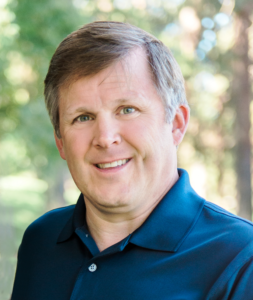
About Doug:
Doug works as a mortgage broker during the day and as a grandparent by night. He enjoys rock climbing, playing hockey, family time and most outdoor activities. Last September Doug set out for a morning of free climbing at Broken Top Mountain in Oregon. Unfortunately for Doug while climbing that afternoon he lost his grip and footing and fell about 300 feet. He tried to call 911, but because of his location he wasn’t accessible to responders. He then had to hike nine hours out through the wilderness to be picked up and later taken to the hospital emergency room by his wife.
Diagnosis:
Burst Fracture of T11
Path to Treatment:
Doug wore a back brace for six weeks before his surgery to see if his fracture would heal on its own, unfortunately it did not and his kyphosis was so extreme his next best option was surgery.
Procedure Overview:
XLIF Corpectomy with posterior instrumentation
Life Now:
Doug’s injury was complicated and after having the procedure it took a while for him to recover. He noticed his mood and personality changed during that time and that he was always on edge. He didn’t like the way he was feeling so he quickly got off all of his pain meds at three weeks post-op. He recently completed physical therapy and has returned to almost all his prior activities. Doug is not yet back to rock climbing or playing hockey, but is planning to be later this summer! Doug is grateful that Dr. Hadden was on call when he was taken to the ER that night. He feels like he received a great deal of educational information and was able to communicate with him throughout the entire process. Doug was also paired with another post-op patient leading up to surgery to help alleviate his fears and is looking forward to paying it forward by speaking with other patients through The Better Way Back®.
Tim M.
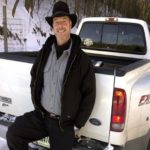
"Living pain-free life - that's the most important thing thanks to my surgeon."
View Story
About Tim:
Tim is a United States Air Force Veteran who made 1,396 jumps during his career and served with the Special Forces in Desert Storm. A self-described big outdoorsman, Tim is an avid hunter and fisher who ties his own flies. He also loves to ride motorcycles and participate in the household activities that come with being a father of six and a grandfather of one. All of this came to a halt, however, when Tim incurred an injury at work that ruptured discs in his lower back, causing stenosis and eventually leading to a loss of bladder control.
Diagnosis:
L4-S1 Ruptured Discs with Spinal Stenosis
Path to Treatment:
Tim tried injections, chiropractic care, and bed rest with pain killers.
Procedure Overview:
MAS PLIF
Life Now:
Tim is recovering nicely and coming back into his own. He went on his first motorcycle ride in over a half a year, just three months post-op, and will soon be back to fly-fishing. He describes the effort Dr. Middlebrooks, Casey, and Trayce (clinical support staff) made to help him throughout his experience and how it made all the difference in his recovery: "I can't say enough good stuff about them."
Anne T.
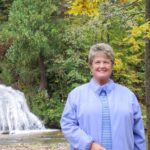
"I'm Back to looking forward to tomorrow!"
View Story
About Anne:
Now retired, Anne has enjoyed several careers from nursing to working in professional relations for a major dental insurance company and running her own business. Her lifelong loves include her husband of 45 years, her two daughters, their families and many dogs, cats, and horses. She also enjoyed traveling via RV throughout her entire married life, after retirement they traveled for nearly seven years. Travels eventually brought her to coastal North Carolina where she and her husband settled permanently. Her favorite activities of boating, walking on the beaches, and snapping coastal photographs became impossible as back pain compromised her quality of life.
Diagnosis:
Degenerative Disc Disease (DDD) and spondylolisthesis at L3-L4, with severe central canal stenosis and bilateral foramina stenosis.
Path to Treatment:
Anne tried physical therapy, steroid injections, chiropractic, and acupuncture with no real relief or improvement.
Procedure Overview:
XLIF with posterior instrumentation at L3-L4.
Life Now:
Anne’s back and leg pain have gradually disappeared, and she’s been able to resume many of the activities she loves. She is thankful for Dr. Thomas and his PA, Jack Bagley, “I’m very grateful to them for giving me hope and the confidence to say ‘YES’ to the surgery that made getting back to life possible!”
Joyce C.

"These surgeries gave me a new lease on life."
View Story
About Joyce:
Joyce spent her career as a District Supervisor for an insurance company in Alabama. Since her retirement in 1999, she has traveled with her husband, enjoying RV road trips around the country and cruises to Alaska and Hawaii. Joyce has always enjoyed an active lifestyle that includes gardening, travel, and reading. She has been a widow since 2014, but feels blessed to have three children, four grandchildren, and five great grandchildren who keep her active and feeling young!
Diagnosis:
Cervical stenosis with myelopathy and radiculopathy.
Path to Treatment:
Joyce did physical therapy, but was not seeing the improvement that would help her get back to the active lifestyle she loved.
Procedure Overview:
C3-7 ACDF and C3-T2 PCF
Life Now:
Joyce is thankful to be back doing all the things she enjoys and admits she even has a different outlook on mundane things, like housework and driving herself. She says she will be forever grateful to Dr. Bergeson! "These surgeries gave me a new lease on life, pain-free independence and joy in everyday life."
Jody P.

“I’m thrilled to be golfing again!”
View Story
Life Prior to Surgery:
Jody struggled with back and leg pain for several years. Initially, she had sciatica in her left leg and foot, which was treated by spine surgery. Although the procedure provided her with temporary relief, Jody’s pain returned with a vengeance. Her sciatica reached the point where she could barely walk. Jody tried numerous conservative treatments, such as acupuncture, physical therapy, and epidurals, but they all failed to provide long-term relief. Desperate to regain her active lifestyle, Jody consulted with multiple surgeons, who all
recommended traditional fusion procedures.
Eventually, Jody met with Dr. Gregory Mundis, who suggested the minimally disruptive XLIF procedure. Although Jody feared another spine procedure, she felt confident in Dr. Mundis and the possibility of regaining a high-quality life.
Situation Today:
Jody underwent XLIF surgery in September 2012. She walked the day after surgery and participated in physical therapy for several months to regain core muscle strength and flexibility. Now, Jody is back to her active lifestyle and enjoys golfing and spending time with her family. Although she still struggles with some residual numbness in her left foot, she plans to continue physical therapy to alleviate it. Jody is delighted with the results of her surgery and looks forward to traveling to visit her daughter in North Carolina!
Harvey W.

“I am back to optimal health!”
View Story
Life Prior to Surgery:
In 2010, I was involved in a car accident that left me with pain so severe, I couldn't walk. I had pre-existing stenosis coupled with the accident the combination of the two were truly horrific. The first thing I did was go to a chiropractor, I hoped I was just out of alignment. I was quickly recommended to consult an orthopedic specialist who suggested that I see someone for pain management. Over the course of 6 months I received 4 epidurals to ease the pain; however, this brought on additional issues, I had a terrible limp, but was still nervous about the possible complications with surgery that I dealt with it for another year. I actually had to stop working and was considered disabled.
Life After Surgery:
After waiting a year, with the suggestion of a close friend that had surgery, I made an appointment with Dr. Khurana. Perhaps my hesitation was based on a fear of surgery, but after meeting with Dr. Khurana and the amount of detail he provided on the procedure, I decided to proceed knowing that I would likely need multiple procedures.
The first surgery was a XLIF L2-L3, and an ALIF L4-L5 with posterior instrumentation for support. The trauma from the surgery made me feel like I had been hit by a bus. However I felt immediate relief in my legs, and the aching and pain were gone. I was up and walking the next day with minimal time in the hospital! This experience provided me with the confidence of having the second surgery, an XLIF L3-L4, that took less than 2 hours and I was out of the hospital in 2 days. I would suggest that anyone considering surgery prepare themselves prior, go to the gym, and work on your core. This is not a quick fix you have to be an active participant in your outcome.
I cannot tell you how important it was to have someone to speak to me about their surgery, and give me a recommendation for a surgeon! I learned that the technology from spine companies is not something to be feared but something to appreciate!
Elizabeth "Betty-Ray" W.
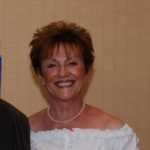
“I’m back to all of my favorite activities, pain-free!”
View Story
Life Prior to Surgery:
Betty-Ray struggled with back pain for about 10 years. She tried various conservative treatments to alleviate her pain; however, the time came when conservative interventions simply were not effective. Eventually, the pain started affecting multiple aspects of her life. "I worked really hard to not let pain interfere with either my professional or personal life. However, I did reduce the number of hours I worked each week, and I found myself less willing to entertain guests at home because it was just too difficult. When I was in a lot of pain, I would get unusually quiet because I didn't want to snap at people and make them suffer because I was suffering," she says.
"When I woke up on March 20, 2013,” Betty-Ray continues, “I had to crawl from my bed to the bathroom. I saw my primary care physician and he prescribed steroids and pain medication. Initially, once the meds were in my system, I felt better, but began feeling worse as the steroid dosage decreased. I went back to see my physician and he prescribed daily Prednisone, in addition to Tylenol with Codeine and Flexeril.”
Betty-Ray soon realized that she would need surgery. She consulted Dr. Robert Eastlack just as soon as she could get an appointment with him. He had operated on Betty-Ray’s thoracic spine in December 2010, so she knew he was the right surgeon for her. “Dr. Eastlack ordered an MRI, physical therapy, epidural steroid injection, etcetera, but I think we both knew I would require surgery. I never had any doubt that surgery was the right thing to do," she explains. Eventually, Dr. Eastlack recommended the minimally disruptive XLIF procedure.
Situation Today:
Betty-Ray underwent XLIF surgery in August 2013. She was able to walk the same day as her surgery. She experienced minimal postoperative pain and walked as therapy. She was able to return to her daily routine just four weeks post-op. She is currently pain-free and participating in all of her favorite activities!
"For me, getting up from a sitting position or getting in and out of a car was very difficult. Also, cleaning my home caused a lot of pain. I am now able to do such things with ease," Betty-Ray says. Betty-Ray tells people that she has “a brand new back.”
Kay C.
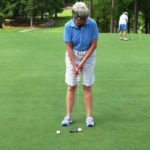
“I haven’t felt this good, or been able to do this much for the past 10 years!”
View Story
Life Prior to Surgery:
Kay experienced occasional pain in her right hip and leg for a few years, but assumed it was associated with mild osteoarthritis. She continued playing golf, swimming, and hiking with her dog.
One morning while stretching, Kay felt a pop and a searing pain down her right leg brought her to her knees. Assuming she had pulled a muscle, she took aspirin, but found it did not touch her pain. After weeks without relief, Kay started using a crutch to walk around her home. She saw her general practitioner, who took hip x-rays, said he could find nothing significantly wrong, and prescribed her muscle relaxers.
Still the pain would not subside and Kay found she could no longer do routine chores or partake in the activities she loved. Kay decided to seek additional medical attention and consulted with an orthopedist, who identified her leg pain and foot drop as an issue with her spine. He ordered an MRI and suggested she consult with a spine surgeon.
Kay was referred to Dr. Christopher Brown, who reviewed the MRI and recommended two spinal fusion procedures – the minimally disruptive XLIF procedure and a PSF procedure.
Situation Today:
Kay underwent XLIF and PSF procedures in April 2014. Within 12 hours of surgery, Kay could move her right foot and leg without pain. She was up walking within 24 hours of surgery and returned home to begin her postoperative recovery after only 48 hours in the hospital.
Four months following the procedure, Kay is hiking with her dog, doing core strengthening exercises, and swimming daily. She is even practicing putting and hopes to return to her beloved golf game when her fusion is completely secure.
“I haven’t felt this good, or been able to do this much for the past 10 years!” Kay says. “Dr. Brown’s surgery turned my life around. I am pain-free and feel great!”
Ana S.
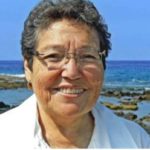
“Chronic back pain made it hard to maintain my ‘Aloha spirit.’ My surgeon helped me get it back.”
View Story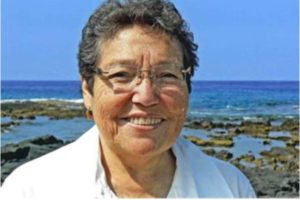
Life Prior to Surgery:
For 40 years, Ana loved being a registered nurse, but lifting and moving patients took a toll on her back over time. Ana tried a variety of conservative treatments, including muscle relaxants, physical therapy, and epidural injections. Unfortunately, relief was short-lived. The degree of pain grew worse and began to dominate her life. Eventually, she consulted with a surgeon who recommended the minimally disruptive XLIF procedure to address the bulging disc and annular tears he diagnosed.
Situation Today:
Ana underwent XLIF surgery in February 2011. Much to her relief, she could walk shortly after surgery. In just a few days, Ana was back in her home. She took her physical therapy seriously and worked hard to improve her core muscle strength, which is important for a healthy back. Every week, she went for longer and longer walks. After just a month, Ana could perform most of her normal daily activities.
Ana even started a new business: teaching medical terminology to people interested in health careers. “I’d much rather be a healthcare provider than a patient,” says Ana. “But I had such a wonderful surgeon—I now enjoy a better quality of life and I’m eager to share my experience with everyone. Don’t let fear prevent you from seeking expert help!”
Matt W.

“I’m back to taking part in historical reenactments!”
View Story
Life Prior to Surgery:
For 10 long years, Matt struggled with back pain, feeling like there wasn’t a light at the end of the tunnel.
“My personal health was going downhill,” he says. “I just didn’t feel able to do many of the activities I normally did before my back problems started.”
As the pain progressed, Matt started to miss out on the writing career he loved. Over-the-counter and prescription pain medications were some of the conservative treatments Matt tried; neither alleviated the pain permanently. While searching for an answer, he discovered Dr. Leo Clark, who suggested the minimally disruptive XLIF procedure. After consulting with Dr. Clark, Matt felt reassured.
“Dr. Clark made XLIF surgery sound so encouraging. I didn’t have much trouble deciding to have it done,” he explains.
Situation Today:
In August 2013, Matt underwent the XLIF procedure and walked the same day. His doctor’s recovery recommendations included walking, psychical therapy, and aqua therapy. Matt was able to get back to his daily activities within two weeks and back to work in eight weeks, with no restrictions.
“I was not doing anything physical before the surgery, but now I walk three to four miles a day and sometimes even jog,” Matt says. He hopes to complete another 5K race with his daughter soon and advises other patients to walk as much as they can. “Walking is how I lost weight, which really helped the strain on my back,” he adds.
Perhaps what Matt is most excited about is returning to work full time as a staff writer for Muzzleloader Magazine. Now—with his newly found pain-free life—he can also continue his favorite hobbies. One interest includes participating in historical reenactments; the photo above was taken at Schoenbrunn Village Historical Site in New Philadelphia, OH.
Reine B.

“After years of chronic pain, I’m finally back to walking my dogs. I’m so grateful to have a high-quality life once again!”
View Story
Life Prior to Surgery:
Reine’s struggle with chronic back pain started more than three years ago. As her pain got worse she sought an array of conservative treatments, including epidural injections and prescription pain medications. To her dismay, these treatments failed to provide long- term pain relief. Eventually, Reine’s pain became debilitating and, over time, she lost her ability to exercise and enjoy activities such as walking her dogs. Her inability to be active affected Reine emotionally and she became desperate for a long-term solution for her pain.
Reine sought a consultation with Dr. Gurvinder Deol of Wake Orthopaedics. Dr. Deol recommended the XLIF and MAS PLIF procedures.
“At first I was afraid and hesitant to pursue the treatment, since I had heard several horror stories about back surgery. Within a few days, however, I realized I wanted the pain behind me. I desperately needed my life back,” Reine says.
Situation Today:
In February 2013, Reine underwent the XLIF and MAS PLIF procedures. She was walking the day after her operation. When she left the hospital she was transferred to a rehabilitation facility for a few weeks. She was able to resume all her daily activities within six weeks. To regain muscle strength and flexibility, Reine participated in physical and aqua therapies. Today, she has no pain and has resumed all of her activities!
“I can finally walk our dogs again for two hours daily. It feels great to be active once again!”
Robert "Mike" T.

“This surgery was a resurrection in a way…I have my life back!”
View Story
Life Prior to Surgery:
Mike struggled with back pain since the 1980’s. Despite two previous back surgeries, Mike had very little stamina – he could barely walk a block without needing to stop and rest. After retiring in 2009, Mike became addicted to his pain medication, which caused him turmoil with his family.
“If you don’t have back pain, you don’t know what it can do to you – it’s very depressing,” Mike recalls.
Eventually, Mike sought a consultation with Dr. Francesca Tekula. She recommended the minimally disruptive XLIF procedure.
Situation Today:
Mike underwent XLIF surgery in December 2013. He stayed in the hospital for less than one week and then was transferred to a rehabilitation center. After two days in rehabilitation, Mike was doing so well that he did not need physical therapy anymore and was released.
Today, Mike is in “zero pain,” walking with ease, and drug-free! For postoperative treatment, he works out at his local YMCA. Since his surgery, Mike enjoys embarking on cross-country trips with his family, working on his truck, and spending time with his granddaughter.
“It was sort of a resurrection in a way – Dr. Tekula gave me my life back. I want to be able to help others through this,” Mike says.
Rachelle M.

“I'm excited about life again and the future is bright!"
View Story
Life Prior to Surgery:
Rachelle struggled with severe back pain. She was accustomed to living an active lifestyle, but the pain prevented her from standing for more than 30 minutes at a time.
Rachelle attempted to alleviate the pain with acupuncture, physical therapy, and prescription pain medications, but she was unable to manage it.
Rachelle’s occupation in sales requires her travel and drive frequently and she yearned for a permanent solution. Rachelle’s coworker introduced her to her husband, Doug Nichele, who works for NuVasive®, Inc. Doug encouraged Rachelle to go to Chicago to meet with Dr. Wesley Yapor. Rachelle flew to Chicago and consulted with Dr. Yapor who recommended the minimally disruptive XLIF procedure.
Situation Today:
Rachelle underwent XLIF surgery in October 2014. She spent three days in the hospital and was driving only 10 days after surgery. Only 11 days post operation, Rachelle was able to walk two miles. Rachelle is now working again and taking care of herself. She is temporarily wearing a back brace for extra support, but she is no longer in pain when she bends over!
Rachelle attributes her speedy recovery to her wonderful support team. Her Patient Ambassador, Suzanne, mentored her, encouraged her to have the surgery sooner than later, and texted her while she was in the hospital. Rachelle is also very grateful for Doug, as he provided her with the guidance and reassurance she needed and attended her surgery.
Now that Rachelle is living pain-free, she is taking on new projects that she was unable to do before surgery. She is upgrading the drapes in her home and has even been on a ladder. Rachelle is also back to creating personal “to-do” lists for her projects. This is something that she had not been doing for at least 8 months presurgery, but is finally feeling as though she’s able to accomplish all that she puts on there!
Rachelle is going through the process to become a Patient Ambassador. She recently received her packet and is excited about the opportunity to help others!
Marty G.
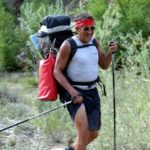
“I am able to walk my nine-hole golf course and drive long distances!”
View Story
Life Prior to Surgery:
Marty had always led an active lifestyle, which had unfortunately taken a toll on his back over the years. His back pain gradually intensified and became aggravated by his arthritis. The pain prevented him from participating in physical and social activities, and even got to the point where he could no longer stand for more than one hour. “It was difficult because I had to quit playing my favorite sport—pickleball,” Marty recalls. He tried continuing to play golf just to get out of the house, but had to take two doses of oxycodone just to get through one round. Marty’s social life also suffered. “I became grouchy and just wanted to be left alone,” he explains. He tried physical therapy, epidural injections, pain medications, steroid injections, and aqua therapy. Marty even had six nerves cauterized, and while the pain initially disappeared, it unfortunately returned a week later, in another area of his back. Things got worse when an ulcer developed over one of Marty’s incisions from a past radial keratotomy procedure on his eye. Then, he contracted an airborne eye infection. “Luckily, I had a good surgeon who saved my eye, and I’m back to seeing normally,” Marty says. Even after this ordeal, he continued to search for a surgical solution to his back problems. Eventually, Marty consulted with Dr. Kade Huntsman, who recommended the minimally disruptive XLIF procedure.
Situation Today:
Marty underwent XLIF surgery in September 2013. Due to Marty’s unique situation, Dr. Huntsman needed to place a chest tube in him. This extended Marty’s hospital stay a few days longer than usual. When initially released, Marty said he “didn’t feel great, but did feel better.” Through the recommendation of his home care nurse, he returned to the hospital when he developed a fever. There, doctors discovered pneumonia in his lower left lung. “They weren’t entirely sure what caused my pneumonia, but assumed the chest tube was most likely the culprit,” Marty says. After four days of recovery in the hospital, he was excited to finally return home again. Marty stayed with his daughter for four days in Salt Lake City and then returned with a friend who also lives in his hometown of St. George. The friend is also a patient of Dr. Huntsman and had also undergone the XLIF procedure. Following a comfortable sleep in his own bed, Marty walked nine holes of the golf course in his neighborhood. He later enjoyed a long drive to Mesquite, Nevada, which is 80 miles round trip. “While I was still sore around the incision point, I did get better and better every day,” he says. A month after the surgery, he increased his walking but was somewhat physically limited due to some weakness. Today, Marty no longer uses a cane or walker. He has also returned to daily chores and running errands. “I’m sure, in time, I will finally be able to get back to jeeping, hiking, biking, and pickleball!” he adds.
Janet D.
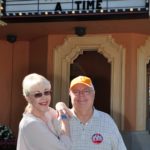
“I’m doing everything I want to do now, and the best thing is that I don’t hurt anymore! That is a miracle!”
View Story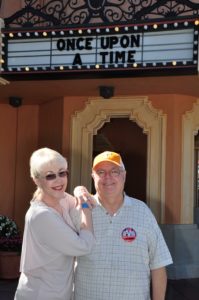
Life Prior to Surgery:
Janet struggled with back pain for the past five years. Hoping to find relief, she tried numerous conservative treatments, including physical therapy, steroid injections, traction, over-the-counter pain medications, and even prescription pain medications. Despite these efforts, nothing seemed to give her the long-term relief she wanted. Janet remembers how much the pain affected her life. “For quite a while, my husband had to actually pull me out of bed in the morning because I could not do it myself,” she says. “He had to act as my nurse through it all—I couldn’t go anywhere without having trouble. I was always resting on the leg that wasn’t hurting.”
When Janet went out with friends, she was constantly telling them she was hurting and needed to sit down. She used to enjoy singing in her church choir, but the pain made it too difficult to participate. “I could barely even walk to the car after a service because of my right leg,” Janet recalls. “The pain greatly impacted my spiritual life, which was hard because it is extremely important to me.”
Janet eventually got to the point where her right leg would “fall asleep” every morning, and this feeling would go on throughout the rest of the day. Janet came to terms with the pain and honestly felt like this was the way she was going to have to live the rest of her life. She described her days in pain as a “miserable existence.” After years of suffering, Janet finally pursued a permanent solution. Following a consultation with Dr. Justin Bundy, Janet was recommended for the minimally disruptive XLIF procedure. “I was ready to do something,” she says. “I knew what it was like to be where I was, but I had forgotten what it was like to feel normal or okay.”
Situation Today:
In May 2013, Janet underwent XLIF surgery and was able to walk within five days. For post-op treatments, she enjoyed walking and doing some light Zumba classes and dancing. It took Janet a little more than six weeks to get back to her normal activity level. She is now participating in her daily routines and activities without pain. “My goal before surgery was to be able to go to Disney World again, which I thought would never be possible,” Janet says. “Well, I met that goal—I went to Disney World and had a ball!” She has continued to keep up with regular exercising and dancing. Janet is finally doing everything she wants to do now. “The best thing is that I don’t hurt anymore. That is truly a miracle. It was awful to be in the body that I was in before, but it is fantastic to be in the body I'm in now!” she adds.
Bonnie B.
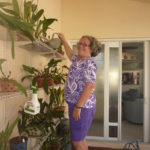
“I am back to caring for my orchids again—something I couldn’t do before my XLIF surgery!”
View Story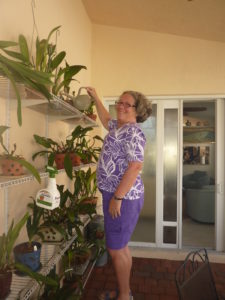
Life Prior to Surgery:
Bonnie began suffering from chronic back pain in 2001. She tried an array of conservative treatments, including epidural injections, physical therapy, and pain medications. None of these options provided her with long-term relief. Bonnie underwent one unsuccessful surgery and an additional fusion surgery that did fully relieve her pain, but only for 10 years. Eventually, Bonnie could not walk due to intense pain shooting down her legs.
Through a friend, Bonnie found her surgeon, who recommended the minimally disruptive XLIF procedure.
Situation Today:
Bonnie underwent XLIF surgery in January 2013. She was up and walking the day after surgery. Bonnie stayed in the hospital for about three days before she returned home to continue her recovery. For post-op treatment, she walked, getting up to one mile in no time, and wore her bone growth stimulator for a few hours each day. Although Bonnie’s recovery went smoothly, she did struggle with some tingling in her legs, but even that went away after a few weeks.
Within about six weeks following her surgery, Bonnie felt completely healed and was back to her daily activities and chores.
Gina B.

“I’m back to working full time, enjoying antique shops, and seeking out botanical gardens!”
View Story
Life Prior to Surgery:
Back pain had been a difficulty in Gina’s life for years. In 1999, she underwent a laminectomy procedure to resolve the problem. The surgery was initially successful and for a period she lived a conventional, pain-free life. Unfortunately, her pain resurfaced more severely when she reinjured her back in 2010.
When the chiropractor appointments, epidurals injections, and steroid injections failed to alleviate the pain, Gina sought out a more permanent method. After reading an article about the back surgery experiences of Bill Walton, Basketball Hall-of-Famer and The Better Way Back® Patient Ambassador, she realized she needed to consult with Bill’s surgeon, Dr. Steven Garfin, about finding a solution.
Situation Today:
Nervous but excited, Gina underwent XLIF surgery in July 2013. She is pleased to say she is doing exceedingly well and her back pain has disappeared. While she has some residual nerve pain in her upper left thigh, she’s hoping it will subside once she starts physical therapy. Gina is very eager to be back to her daily activities, as well as walking around art fairs, antique shops, and botanical gardens with her boyfriend.
“A year ago, I could never have walked any kind of long distance, but now I can walk around the fair for hours,” she says. “It’s great because now I’m working full time and sometimes I almost forget that I even had surgery!”
Charles (Chuck) F.

"I'm back to living an active lifestyle and doing the things I love - like making custom fishing rods!"
View Story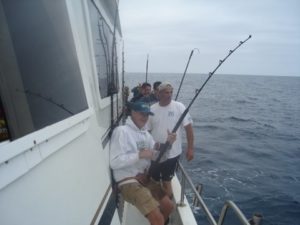
Life Prior to Surgery:
Chuck suffered from back pain for 35 years. When he finally decided to undergo surgery, he saw several different surgeons in the San Diego area. In the end, his recommended procedure was more complicated than most—he needed to have a total of 17 spinal levels fused through two different surgeries. The first portion ofthe surgery was a re-alignment procedure whereby spacers were placed between the lumbar vertebral bodies via both a traditional anterior approach and the minimally disruptive lateral approach (XLIF procedure). After this portion of the surgery, the bulk of the deformity had been corrected. The second stage of the surgery involved inserting screws and two long rods to further correct and stabilize Chuck’s deformed spine.
Situation Today:
Chuck underwent XLIF and ALIF procedures, along with the removal of a spinal cord stimulator, in October 2013. He spent a total of 13 days in the hospital. He was walking within hours of the first procedure. When he returned home, Chuck’s daughters took care of him. Then, 10 days post-op, he started out-patient rehabilitation. At 15 days post-op, Chuck was walking around and taking care of himself. Today, five months after surgery, Chuck is doing very well. He’s back in the gym and jogging—working out a total of three hours a day, if not more! He has regained his flexibility and has completed physical therapy. Chuck is only limited by his shoulder, for which he plans to have replacement surgery in July 2014. Other than that, he is able to enjoy all activities, pain-free!
“I’m basically 100 percent back to normal. I’m especially ecstatic about being able to jog again!” Chuck says. He is also back to making custom fishing rods, which he has always enjoyed doing. What’s more, he’s now able to take fishing trips down to Baja California, Mexico—something he couldn’t do before his surgery because the long drive was too painful.
Chuck says that having a great surgeon (or better yet, two great surgeons!) and having will power during recovery are very important. “You start at such a low point right after surgery, but if you have that will power, you can get back to the things you love to do!” he says.
Roy C.
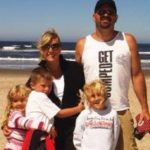
"My only regret is that I didn't have the procedure earlier."
View Story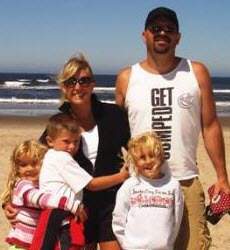
Life Prior to Surgery: While attempting to hook a trailer to the back of his truck, Roy severely injured three discs in his spine. He was immediately rushed to the hospital, and was admitted for two days. Roy suffered from severe back pain for over 18 years after that traumatic event. “I’m a pretty tough guy,” says Roy, “but eventually the pain just became too much for me to bear. All of the high impact activities that I used to enjoy became things of the past.” Roy researched his options over the years and underwent numerous exams, including discograms, x-rays, and multiple MRI’s. He tried many different treatment options as well, including facet blocks, generalized steroid injections, TENS Unit therapy, physical therapy, massage, acupuncture, muscle relaxants, and various painkillers. As time passed and Roy’s pain worsened, he began to fear that he wouldn’t be able to work. “Frankly, I was depressed,” recalls Roy. “I lost hope of ever enjoying life in any manner close to how I had in the past.” Then, a friend of Roy’s, who underwent the minimally disruptive XLIF (eXtreme Lateral Interbody Fusion) procedure two years earlier shared his experience with Roy and recommended the surgery. Roy scheduled a consultation with Dr. Andrew Kranenburg, who was confident that the XLIF procedure would help his condition. Situation Today: “My recovery was pretty remarkable,” says Roy. “I walked out of the hospital on the same day I was operated on. The next morning I made breakfast for my wife and took it upstairs to her.” He needed less than half of his prescribed pain medication and was back to working full-time exactly two weeks after his XLIF procedure. “It is amazing to me,” exclaims Roy. “For so many years I saw other people find solutions to their back issues and I was always the exception to the remedy it seemed. Now, I feel like I am one of the biggest success stories. I could not be more pleased.”
Ruth W.

"I have a future now whereas before surgery my future was in a bed."
View Story
Life Prior to Surgery: Ruth began experiencing back pain following a car accident in 1995. On February 12, 1998 she was involved in another car accident when she was hit by a drunk driver. Ruth was rushed to the hospital but, unfortunately, she didn’t have health insurance and was left with excruciating pain and heaping medical bills. Ruth had sustained several injuries from the accident and underwent eight different procedures, including hip surgery, hand and facial reconstructive surgery, and orthoscopic surgery over the subsequent years. “The injuries were horrendous,” she recalls. Her chronic back pain continued to escalate. Ruth went from living an active lifestyle and walking 3 miles a day, to becoming completely immobile. Ruth tried conservative treatment options such as exercise, chiropractic adjustments, heat pads, and stretching, but nothing provided long-term pain relief. Her pain worsened to the point where she spent 75% of her time lying in bed. As a result of her immobility, Ruth struggled with weight gain and developed Type II diabetes and depression. In 2010, she heard Dr. Guy Fogel speak about the minimally disruptive XLIF (eXtreme Lateral Interbody Fusion) procedure and, desperate for relief, she scheduled a consultation. After reviewing Ruth’s MRI, Dr. Fogel determined that she was a candidate for the XLIF procedure. Situation Today: Ruth felt immediate relief after undergoing the XLIF procedure. Though she experienced some postoperative incision pain, she walked the day after her surgery. Ruth also developed pneumonia due to side effects from the anesthesia, but she was treated and left the hospital after 4 days. She then spent 10 days in a rehabilitation center where she learned exercises and stretches that helped her regain muscle strength. After returning home, Ruth received in-home physical therapy for 4 weeks and was able to walk 2 miles per day. Today, Ruth has lost over 40 pounds and her legs no longer swell while walking. She experiences occasional soreness and stiffness, which she manages by stretching, exercising, and with aqua therapy. Ruth was able to drive from San Antonio, Texas to Georgia to visit her family for the summer and looks forward to rebuilding family relationships now that she is no longer inhibited by chronic back pain and resulting depression.
Sue C.

"This is one decision that I'm glad I made; it has truly changed my life."
View Story
Life Prior to Surgery: Sue began suffering from severe back pain in 2003 and gradually it became difficult for her to stand for long periods of time. Even daily chores, such as cooking and cleaning, became difficult and painful. In October of 2004, Sue felt something in her back “snap” while lifting her niece. After this incident, her back pain progressively worsened to the point where she was only able to sleep in 3-4 hour increments every night. Realizing the severity of her condition, Sue scheduled a consultation with an orthopaedic surgeon, who discovered a ruptured disc. She was immediately scheduled for surgery to remove part of the disc but, to her dismay, the surgery did not provide her with the relief she sought. Her pain returned and gradually worsened. Sue’s back became increasingly stiff and she reached the point where she could no longer bend over. During a consultation with an orthopaedic surgeon scheduled to examine her knees, Sue was referred to a pain management clinic. There, she was treated with cortisone injections, which only provided temporary relief. As Sue’s pain worsened, she had x-rays of her spine taken, which revealed severe disc degeneration. At that time, her pain management physician referred her to Dr. Guy Fogel, who recommended the minimally disruptive XLIF (eXtreme Lateral Interbody Fusion) procedure. Situation Today: Sue walked the day after her procedure with the assistance of a physical therapist and, to her surprise, returned home within three days. She did experience some postoperative pain in her right leg, but she managed the pain with oral pain medication and it gradually disappeared within two weeks. As a precaution, Sue wore a back brace for one month. She also began physical therapy through a home health service to rebuild her strength and was able to resume most of her daily activities and hobbies within six weeks. Sue was even able to travel to Paris with her husband just three months after surgery, where she was able to walk and stand for great lengths of time, enjoying the museums and sights of Paris.
Phyllis P.

"I feel great!"
View Story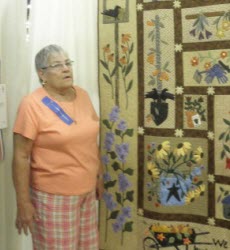
Life Prior to Surgery: Phyllis worked as a nurse for over thirty years, and eventually the heavy lifting she was required to do as a part of the job took a toll on her back. Her back pain escalated to the point that she was no longer able to enjoy activities such as aqua aerobics. Phyllis tried conservative treatments, such as epidural injections, but found no relief. In 1999 she was diagnosed with stenosis, a bulging disc, and sciatica, and underwent endoscopic surgery. To her dismay, her pain continued to progress, and Phyllis developed extensive nerve damage and neuropathy in her right foot. She tried a neurostimulator implant in an effort to relieve the pain, but it failed to provide long-term pain relief. Phyllis eventually reached the point where she could barely stand or sit for long periods of time. After an excruciating sciatic attack that sent Phyllis to the emergency room, she scheduled a consultation with Dr. Guy Fogel, who performed a myelogram and CAT scan. After examining the results and identifying a ruptured disc, Dr. Fogel performed an emergency procedure on Phyllis. Although the procedure provided temporary relief, Dr. Fogel recommended the minimally disruptive XLIF (eXtreme Lateral Interbody Fusion) procedure to help Phyllis’ degenerative instability. Situation Today: Within days of Phyllis’ XLIF surgery she was standing and walking. Afterwards, she decided to spend one month at a rehab facility, where she healed and learned exercises that assisted in her recovery. Today, Phyllis feels wonderful and has been able to resume the daily activities she loves. She enjoys quilting and is once again able to attend quilt shows.
Richard A.

"It is truly incredible how much you take for granted until you can't do something."
View Story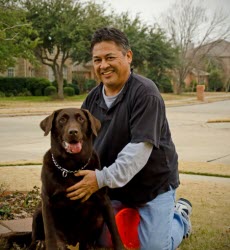
Life Prior to Surgery:
Richard Allen was no stranger to back pain. Since the early 1980’s, he had nine back surgeries. It wasn’t until after a car accident in May 2009, however, that Richard realized his back problems were at an all time low.
As a production manager at a custom shutter company, Richard often missed consecutive days of work due to his severe back pain. He couldn’t scale stairs, sit in a chair, or even tie his own shoes. He tried various conservative treatments and took prescription medication, but they failed to provide long-term relief pain. His back pain even inhibited his ability to play with his beloved dog.
Desperate to relieve his pain, Richard sought a consultation with Dr. Richard Wupperman, who recommended the XLIF (eXtreme Lateral Interbody Fusion) procedure. Richard was receptive to this surgery because of its minimally disruptive lateral approach and the hope of having a faster recovery.
Situation Today:
Five months after his initial appointment with Dr. Wupperman, Richard underwent surgery and walked the same day. Prior to his operation, he walked with a limp, which has since disappeared. He also noticed that his shoulders straightened and he even gained an inch in height. For a month following surgery, Richard used pain medication and participated in physical therapy exercises regularly. Within four months, Richard felt so good that he was able to walk laps around a local track with his dog and participate in a 12-mile bike ride.
Today, Richard is able to sleep peacefully through the night, without tossing and turning in pain. He is back to being active and doing the things he loves without any discomfort.
Olga T.

"My back is repaired and now I am free of my wheelchair."
View Story
Life Prior to Surgery: Olga struggled with back pain at a very young age as a result of scoliosis. At the time, she didn’t understand the source of her pain and tried to manage it with chiropractic adjustments and pain medications. Unfortunately, the pain gradually worsened over the years. At work, Olga would feel a constant, sharp pain in her back. Conservative treatments no longer provided her with relief. Eventually, the pain became so severe that Olga could no longer stand and she could barely walk. As a result, Olga required a wheelchair for mobility, and was forced into an early retirement. After undergoing shoulder surgery in 2009, Olga asked her primary care doctor about a surgical solution for her chronic back pain. He then referred her to an orthopaedic spine surgeon, Dr. Guy Fogel. After examining Olga’s condition, Dr. Fogel recommended that she undergo the minimally disruptive XLIF (eXtreme Lateral Interbody Fusion) procedure. Situation Today: Within hours of her XLIF procedure, Olga walked and felt immediate pain relief. She experienced occasional muscle soreness and stiffness down the front of her thighs, but felt that it was manageable. That soreness gradually dissipated over time. Because Olga had been dependent on pain medication for so long, she was relieved when she no longer needed to take it after her surgery. She was also thrilled to put aside her wheelchair and walk throughout her recovery. Today, Olga goes on outings with her friends and performs daily chores and activities pain-free. She is extremely pleased with the outcome of her surgery.
Russell K.

"This surgery was wonderful and gave me my life back. I don't know why I didn't do it earlier."
View Story
Life Prior to Surgery: Russell has a long history of back problems dating back to the 1970s after he strained his back while at work. After sustaining this injury, he was in the hospital for a few days, but did not think his back injury would eventually lead to chronic pain. Unfortunately, throughout the subsequent years, he struggled with sporadic episodes of pain. Then, a few years ago, Russell reinjured his back but did not realize the severity of his injury until he tried to walk and could not. Russell’s inability to walk persisted over the following days and, eventually, a friend convinced him that he needed to seek help. He underwent an MRI and his doctor recommended that he consult with a spine specialist. Shortly after, Russell scheduled an appointment with Dr. Leon Liem, who recommended the minimally disruptive XLIF (eXtreme Lateral Interbody Fusion) procedure. Situation Today: Russell was able to walk within hours of his XLIF surgery and was only required to remain in the hospital until the following day. He was surprised by how much his pain had decreased after his surgery. Russell walked consistently throughout his recovery and also participated in physical therapy to regain muscle strength. Three weeks after surgery, he was able to resume work. Today, Russell continues to lead an active lifestyle and enjoys daily and recreational activities pain free.
Margo H.

"I can now continue living the life I want to live."
View Story
Life Prior to Surgery: Margo struggled with chronic back pain for many years. She was unable to stand for longer than four minutes at a time without feeling excruciating pain radiate from her hips, all the way down to her feet. After exhausting all efforts to find relief using conservative treatments such as physical therapy, steroid injections, and medications, Margo underwent a laminectomy. To her dismay, she only experienced temporary relief from her pain. Afterwards, Margo scheduled a consultation with Dr. Yu-Po Lee, who recommended the minimally disruptive XLIF (eXtreme Lateral Interbody Fusion) procedure. Situation Today: Margo’s surgery was performed in two phases. Despite undergoing a two-phase surgery, she was able to begin rehabilitation three days after her procedure. Due to the fact that Margo struggled with postoperative weakness and soreness, she remained in the hospital for several days in order to regain her strength and speed-up her recovery. Today, Margo adheres to a physical therapy routine and walks one to two miles every morning. She is confident that she will continue to improve and is on her way to a pain-free life.
Marge L.

"I'm glad I did surgery even though it has been a long process."
View Story
Life Prior to Surgery: Marge had always led an active lifestyle and enjoyed activities such as aqua aerobics and walking, though she struggled with lower back pain her entire life. She first consulted with Dr. Steven Anagnost twelve years ago and began conservative treatment for her chronic back pain. Marge underwent multiple epidural injections and tried physical therapy, but to her dismay, these treatments only provided temporary relief. Her pain gradually increased and eventually prevented her from living an active lifestyle. In December 2010, Marge had a laminectomy, which provided temporary pain relief, but to her dismay the pain eventually returned. As her pain intensified, Marge struggled to perform simple daily activities, such as cooking and cleaning. When Dr. Anagnost recommended the minimally disruptive XLIF (eXtreme Lateral Interbody Fusion) procedure, Marge was initially fearful to undergo another surgery. Nonetheless, she was desperate for a long-term solution and, after extensive research, decided to schedule the procedure. Situation Today: Marge underwent XLIF surgery in June 2011. Although she struggled with some postoperative pain, it steadily diminished. Throughout her recovery, Marge did walking exercises and wore a back brace. Two months after surgery she began aqua aerobics and continued to improve. Today, Marge struggles with leg cramps and slight discomfort at night, but is able to sit and enjoy a meal with her family and friends without excruciating pain. She continues to wear a back brace while driving or performing strenuous activities, but is confident that her condition will improve.
Marcia G.

"I'm starting to live again; I have my life back."
View Story
Life Prior to Surgery: Marcia struggled with back pain for several years. She injured herself after she fell off of a horse, and then later when she fell during a skating competition. As Marcia’s chronic back pain worsened over the years, it limited her daily activities. She could not walk around the block without needing to sit down, and her legs would go numb and give out as a result of severe nerve damage. Marcia’s primary care physician prescribed large amounts of pain medication, which failed to relieve the pain and numbness in her legs. She also tried conservative treatments, such as epidural injections, but none of the six injections provided her with the relief she sought. Marcia eventually scheduled a consultation with Dr. Yu-Po Lee, who recommended the minimally disruptive XLIF (eXtreme Lateral Interbody Fusion) procedure. She was nervous about the idea of surgery at first, but felt confident once Dr. Lee fully explained the procedure. Situation Today: Marcia underwent XLIF surgery on January 18, 2011, followed by a second procedure on January 20, 2011. Once she was discharged from the hospital, Marcia was transferred to a rehabilitation facility for eight weeks to recover and rebuild her strength. She diligently followed a physical therapy regimen and walked daily throughout her recovery.
Lillie E.

'I'm so grateful to be able to do little things like walk and bend down."
View Story
Life Prior to Surgery: While helping her sister move furniture, Lillie sustained a back injury that altered her life. She immediately felt a sharp, shooting pain in her back, and in the subsequent years she struggled with sporadic episodes of debilitating pain. Even sneezing and coughing aggravated her pain. Lillie tried various conservative treatments, such as physical therapy, exercise, pain medication, and chiropractic adjustments, yet all of them failed to provide her with relief. Eventually, her pain worsened to the point where she could barely move. In the last year prior to surgery, Lillie was bedridden for the better part of the day. The debilitating pain kept her from enjoying her favorite activities, including painting, because she could not sit or stand for long periods of time. On several occasions Lillie was even rushed to the emergency room, but doctors could only recommend more pain medication. Eventually, Lillie’s primary care physician referred her to Dr. William Hunter, who immediately scheduled an MRI. Lillie’s MRI revealed a severe spine condition and Dr. Hunter recommended the minimally invasive XLIF (eXtreme Lateral Interbody Fusion) procedure. Situation Today: Lillie was able to return home the day after her XLIF procedure. She experienced some postoperative incision pain, but could immediately notice that her chronic back pain had disappeared. “The pain wasn’t the same type of pain as it was before,” explains Lillie. Recovery was slow, but each week Lillie felt that she was recovering and improving. She began physical therapy one month after surgery and found the exercises very helpful. Today, Lillie feels wonderful. She is able to walk and exercise on a treadmill. Lillie even went on a vacation with her husband four months post-op. She no longer requires pain medication, with the exception of a muscle relaxant, and is able to enjoy the activities she loves, such as attending church and going to the movies.
Lee B.

"I've seen lots of patients and knew it was my time to have surgery because my condition was mechanical."
View Story
Life Prior to Surgery: For years, Lee struggled with a “bad back,” which caused sporadic pain and limping. At the beginning of May 2011, Lee, a cardiovascular and neurosurgical nursing supervisor, fell down a flight of stairs on her way to work. A week later, she began to experience numbness in her left leg. Lee sought the advice of Dr. Gregory Smith, with whom she worked, and he suggested that she have an MRI, which revealed a herniated disc, stenosis, and a fractured vertebra. Lee was aware that her condition was mechanical and that conservative treatment, such as physical therapy and epidural injections, would fail to provide long-term pain relief. After limping around for another two weeks, Lee took Dr. Smith’s advice and decided to undergo the minimally disruptive XLIF (eXtreme Lateral Interbody Fusion) procedure. Situation Today: After Lee’s XLIF surgery, the numbness in her leg completely disappeared, though she did struggle with minor postoperative incision pain. She walked the day after surgery and was discharged from the hospital within three days. Three weeks later, Lee attended social outings with her friends and began traveling. She returned to work after six weeks, pain-free, and has resumed all of her daily activities. Lee looks forward to resuming yoga and golfing with her family in the near future.
Karen B.

"Prior to surgery, the pain took over everything. Now, I'm finally pain free again."
View Story
Life Prior to Surgery: Karen’s struggle with chronic back pain began four years ago when she awoke one morning and was unable to turn over in her bed. She enjoyed working out and hiking but as her back pain progressively worsened, these activities became increasingly difficult. Eventually, Karen reached the point where she could barely walk around her neighborhood block. She tried a variety of conservative methods, such as chiropractic treatments, epidural injections, and physical therapy, but they failed to provide long-term relief. When an MRI revealed degenerative disc disease, Karen realized that she needed to seek a surgical solution. After extensively researching traditional spine surgery, Karen was apprehensive to undergo one of these procedures and hoped that there was a better alternative. Her internist referred her to Dr. Howard Tung, who recommended the minimally disruptive XLIF (eXtreme Lateral Interbody Fusion) procedure. “Dr. Tung was very realistic and listened to my concerns and desires,” Karen recalls. “He was willing to work with me and agreed to try the least disruptive approach first.” Situation Today: Karen underwent XLIF surgery in March 2012. “I woke up without any back pain,” she recalls. Within five days of her surgery Karen was able to walk half a mile. She walked unassisted throughout her recovery, but wore a back brace for stability for about twelve weeks. Within three and a half weeks, Karen resumed working as a family therapist. She looks forward to starting physical therapy to rebuild her core muscle strength, and is confident that she will resume exercising, weight lifting, and hiking within a few months.
Jill W.

"This surgery has been a blessing and has given me my life back."
View Story
Life Prior to Surgery: Jill’s struggle with back and leg pain began when her leg “gave out” while she was walking. After this incident, her leg became extremely weak, making even basic tasks like driving exceedingly difficult. Jill received chiropractic adjustments, but they failed to provide long-term relief from the numbness and tingling sensation radiating down her legs. She also struggled with back pain at night, which made it difficult for her to sleep. Jill’s chronic pain greatly affected her personal and professional life. Eventually, her chiropractor referred her to Dr. Guy Fogel, who reviewed Jill’s condition and recommended that she undergo the minimally disruptive XLIF (eXtreme Lateral Interbody Fusion) procedure. Situation Today: After undergoing XLIF surgery, followed by a laminectomy, Jill was walking immediately. After being discharged from the hospital, she enrolled in a rehab facility, where she began rebuilding her strength with physical therapy. Within five weeks, Jill had resumed grocery shopping, household chores, and was able to return to work. Although she struggled with some postoperative leg pain, it eventually subsided and today Jill is scaling staircases.
Gretchen S.
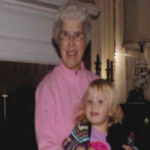
"I'm ready to live another 20 years and spend time with my great-grandchildren."
View Story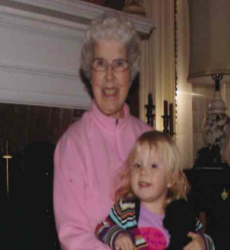
Life Prior to Surgery: Gretchen struggled with severe back pain for two-and-a-half years. She tried various conservative treatments such as epidural injections, physical therapy, pain patches, pain medications and a back brace, but none of these options provided her any long-term pain relief. Over time, Gretchen’s condition became so severe that she couldn’t even move without experiencing excruciating pain. She eventually got to a point where she dreaded moving and feared that she would be unable to play with her young grandchildren, unless she found a long-term treatment solution. Gretchen’s primary care physician referred her to Dr. William Sukovich, a well-known spine surgeon in her area. When Dr. Sukovich recommended the minimally disruptive XLIF (eXtreme Lateral Interbody Fusion) procedure, Gretchen was very frightened about the idea of having surgery. Nevertheless, she had such a strong desire to alleviate her pain that she was willing to try anything. She decided to go through with the surgery. Situation Today: Due to the complexity of Gretchen’s particular condition, her XLIF procedure lasted nine hours. Though the surgery greatly alleviated the back pain, her recovery was initially very painful due to post-op incision pain. Gretchen, however, was walking with the assistance of a walker by the end of the week. When Gretchen returned home, her family provided her with the support she needed throughout her recovery. She spent the next few months rebuilding her strength by walking and doing light activities. Although Gretchen wore a back brace for about seven months while her muscles regained strength, she feels fantastic. She is able to enjoy all of her favorite activities such as walking, gardening, cooking, and playing with her eleven great-grandchildren. Gretchen is extremely grateful to be living pain-free and feels like a new woman.
Geraldine S.

"You've got to stay happy through the process and trust your surgeon."
View Story
Life Prior to Surgery: Geraldine was about to have both of her knees replaced when she first felt pain in her back and legs. Her doctor believed the pain stemmed from the problems in her knees, yet Geraldine continued to suffer from the pain after her knee replacement surgery. Her back and leg pain gradually worsened and began limiting her capabilities. The chronic pain was so debilitating that Geraldine wasn’t able to go anywhere, which is a great impediment for someone living in the country. Mobility is a crucial part of her life. Geraldine tried injections to treat the pain but found no relief. Desperate for a solution, she scheduled a consultation with Dr. William Hunter. Geraldine appreciated the way Dr. Hunter sat down with her and took the time to explain her condition, as well as the minimally disruptive XLIF (eXtreme Lateral Interbody Fusion) procedure, which he highly recommended. Situation Today: Geraldine walked the day after her XLIF procedure, and was discharged from the hospital the following day. For six weeks, she underwent physical therapy in order to regain her strength and received assistance from a home health aide. Today, Geraldine is able to once again enjoy the activities she loves and is grateful for how her life has improved since her XLIF procedure.
Frank R.

"I don't have back pain anymore. Now, I'm back to playing golf."
View Story
Life Prior to Surgery: Frank had always enjoyed athletic activities such as exercising at the gym and golfing. When he developed debilitating back pain he sought conservative treatments such as pain medication, acupuncture, occupational therapy, and visits to a pain clinic. Unfortunately, none of these approaches relieved Frank’s pain. “I accepted the fact that I would always live in pain,” recalls Frank. When a friend at the gym recommended Dr. James Malcolm, Frank immediately scheduled a consultation. After examining Frank’s MRIs, Dr. Malcolm recommended that he undergo the minimally disruptive XLIF (eXtreme Lateral Interbody Fusion) procedure. Situation Today: Frank was out of the hospital and walking within two days of his XLIF procedure and ready to begin physical therapy. He was very surprised at how quickly his pain diminished. “I healed very fast,” says Frank. “I attribute this to all the working out and cardiovascular exercise I did prior to my procedure.” Now, Frank is elated that he has regained 1¼ inches in height and is back to playing golf and exercising in the gym. He is enjoying a pain-free life and is grateful to Dr. Malcolm and his incredible team.
Fran H.

"I was at the end of my rope before surgery. Now, nothing inhibits me."
View Story
Life Prior to Surgery: Fran’s struggle with chronic pain began several years ago. In 2003, she underwent a laminectomy and lumbar fusion. Although the procedures provided her with temporary relief, Fran’s discomfort and chronic lower back pain returned with a vengeance. In the subsequent years, she tried conservative treatments such as physical therapy, epidural injections, deep tissue massage, and Pilates. To her dismay, however, these treatments failed to provide her with long-term relief. Fran eventually reached the point where she couldn’t walk more than a quarter of a mile without experiencing excruciating pain. She became desperate for an alternate solution and was referred to Dr. Louis Jenis by her deep tissue massage therapist. Her therapist knew a friend who underwent a successful spine surgery performed by Dr. Jenis and encouraged Fran to schedule a consultation. Although Fran was hesitant to undergo spine surgery, Dr. Jenis referred her to The Better Way Back® program, where she was able to speak with multiple Patient Ambassadors who provided her with support, education, and hope. Fran felt reassured by these Patient Ambassadors and decided to go through with the minimally disruptive XLIF (eXtreme Lateral Interbody Fusion) procedure. “I was at the end of my rope,” recalls Fran. “The surgery has left me more pain-free than I have been in twelve years." Situation Today: Fran was walking the day after her XLIF surgery. Within two days she was already home and walking up and down her driveway. She continued to walk throughout her recovery and walked two miles per day, less than two months after surgery. Throughout her recovery, Fran continued to receive support from Patient Ambassadors. Today, Fran continues to lead an active lifestyle and hopes to resume Pilates to regain muscle strength. She is preparing for a trip to Bermuda with her husband and enjoys playing with her grandchildren, pain-free. She is extremely grateful and has become a Patient Ambassador herself, in hopes of encouraging and supporting others, the way she was by The Better Way Back.
Debbee M.

"I've always loved to dance. These days, it feels more joyful than ever."
View Story
Life Prior to Surgery: For three years, Debbee experienced only slight pain in her back. Eventually though, the pain became severely debilitating. Epidural injections helped her manage her pain for several months before she learned that two of her spinal discs were “breaking each other down” and compressing the sciatic nerve. Debbee wasn’t able to do anything without experiencing severe pain. “I couldn’t stand, sit, walk, or lie down without excruciating pain,” she recalls. “In other words, I couldn’t do anything.” A friend recommended that Debbee schedule a consultation with Dr. Eric Elowitz, who immediately recognized that she was in bad shape. He adjusted his schedule, and within five days, performed the minimally disruptive XLIF (eXtreme Lateral Interbody Fusion) procedure on Debbee. Situation Today: Debbee was up and walking within hours of her procedure and was discharged from the hospital the very next day. She experienced some post-op incision pain, but it quickly subsided. “Dr. Elowitz gave me my life back,” she says. “Without this surgery I don't know how long I could have gone on.” Within two weeks, Debbee was back at the gym. “Although I felt like doing them, I promised Dr. Elowitz––no back flips,” says Debbee. “I’m sure the term ‘miracle’ is overused by spine surgery patients, but that’s how I feel. The contrast between ‘before’ and ‘after’ is absolutely miraculous.”
Cheryl P.

"The morning after my surgery, I could tell it was a success."
View Story
Life Prior to Surgery: It was the Christmas present nobody wanted––back pain that began suddenly while Cheryl was wrapping gifts for her family. At first, she just tried to “tough it out.” When that proved futile, she opted for epidural injections, traction, chiropractic adjustments, and physical therapy. When Cheryl was no longer able to pick up her grandson or enjoy dancing, gardening, and social events, she knew it was time to take a more aggressive approach. A family friend referred Cheryl to Dr. Andrew Roeser, who recommended that she undergo the minimally disruptive XLIF (eXtreme Lateral Interbody Fusion) procedure. Situation Today: The fact that surgery was the right decision became clear to Cheryl quickly. Rolling over in bed the morning after surgery, she felt a huge difference. Cheryl experienced some numbness in her left leg, which gradually decreased as her energy and zest for life came roaring back. Now, she can do pretty much whatever she wants. “I’m so happy to be able to go to the beach and collect seashells again,” exclaims Cheryl. “After years of pain dominating my life, I can now focus on the positive things––and it’s shaping up to be one of my best years ever.”
Bonnie K.

"I'm so pleased with the outcome of my surgery and so grateful to be free of excruciating pain."
View Story
Life Prior to Surgery: Bonnie first started struggling with chronic back pain in 2010. As a part of her daily morning routine, she would walk to the kitchen and receive an ice pack from her husband in hopes of finding some relief. As Bonnie’s pain worsened she tried physical therapy, pain management, and chiropractic treatments but, to her dismay, nothing provided long-term pain relief. Her pain reached the point where she was forced to give up her favorite activities, such as square dancing, and she was unable to stand for long periods of time. After exhausting various types of conservative treatment, Bonnie sought consultations with spine surgeons, many of whom refused to operate on her spine. Fortunately, her primary care physician eventually referred her to Dr. Joseph Yazdi, who recommended the minimally disruptive XLIF (eXtreme Lateral Interbody Fusion) surgery. After researching the procedure, Bonnie felt comfortable to go forward with it. Situation Today: Bonnie was able to walk immediately after XLIF surgery. Within four days, she was released from the hospital and was astonished that her pain had disappeared. Bonnie walked extensively and participated in physical therapy throughout her recovery in order to build her strength. Although she still struggles with occasional soreness and stiffness when overly active, Bonnie feels fantastic. She is thrilled at the opportunity to once again complete household chores and resume her favorite activities. Bonnie is grateful for Dr. Yazdi and the incredible surgery that has changed her life for the better.
Carolyn K.

"Going for walks with my grandchildren has never felt better."
View Story
Life Prior to Surgery: Several years ago Carolyn began experiencing pain in both of her legs. “There was no specific cause that I can remember. One day, the pain was just there,” she recalls. The pain in her left leg was ongoing for a year without any known injury, and became so severe that Carolyn could not walk more than 30 feet without needing to stop and rest. It seemed she was always looking for a bench while she was out. Carolyn tried several conservative treatments, including three epidural injections and two medications for arthritis, but the pain grew worse, and the medication caused negative side effects. She then underwent traditional spine surgery, which did not relieve the pain or increase Carolyn’s ability to walk long distances. “I was having trouble walking and got really discouraged. I really dreaded telling my doctor that the surgery didn’t help.” At this time Carolyn scheduled a consultation with Dr. Shaad Bidiwala, who determined that Carolyn was an excellent candidate for the minimally disruptive XLIF (eXtreme Lateral Interbody Fusion) procedure. Situation Today: As a result of her XLIF procedure Carolyn no longer feels pain in her legs. Today, she can walk long distances and enjoys strolling through street fairs with her family––with a huge smile on her face. “I feel like this surgery was a gift back to health; and as with any gift, I want to take care of myself. My grandchildren are so happy that I can participate again in family outings,” says Carolyn. “You can only imagine how much it means to me.”
Judy D.
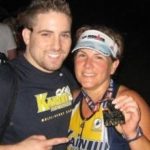
"I have been pain-free since the day after surgery."
View Story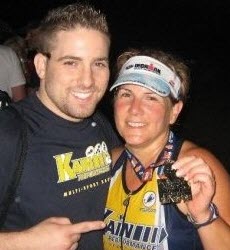
Life Prior to Surgery: Judy has always maintained a physically active lifestyle and has competed in triathlons for the past ten years. She began developing back pain in late 2003, but was able to continue her active lifestyle. In 2009, after completing an Ironman event, Judy’s back pain returned in a much more severe and excruciating form. She was initially advised to pursue non-surgical treatments, which only offered some initial symptomatic pain relief. Judy decided that it was time to consult a professional. She received three separate opinions from orthopaedic surgeons and neurosurgeons, who all independently recommended spine surgery. By the fall of 2010, Judy’s pain was escalating and having a negative effect on her physical activities, emotional well-being, and her social life. When she realized that surgery was her best option, she chose Dr. Christopher Summa. Judy found him to be comfortable and honest in their consult. He also shared her passion for sporting activities and understood how important it would be for her to be able to resume her physical routine, including triathlons. Judy relied on both Dr. Summa and her sports chiropractor to help improve her overall physical fitness, core strength, and stamina prior to surgery to help assure an optimal outcome. Situation Today: Judy’s successful minimally disruptive XLIF (eXtreme Lateral Interbody Fusion) surgery had such wonderful results that she was discharged from the hospital in thirty hours. She was committed to an ‘active recovery,’ which included a lot of walking to maintain her strength and conditioning. Judy followed Dr. Summa’s precautions and increased her walking mileage incrementally while avoiding heavy lifting, twisting, and driving during her initial recovery. She took six weeks off from work, decreased the dosage of her pain medicine gradually, wore a back brace for three months, and increased her walking to over five miles per week. At one month post-op, Judy began physical therapy as part of her rehab program. After three months, Dr. Summa cleared her to resume all of her normal activities “with prudence.” Six months after her surgery he advised Judy to “go for it,” and she did; participating in her full range of activities including running, swimming, biking, and more. Judy is now back to training for triathlons and feels stronger than ever. She is confident that her decision to have back surgery is one of the best she has ever made. Judy is grateful for the support she received from her friends, family, and healthcare professionals, who helped make her journey possible.
Don N.

"My recovery from XLIF surgery was easier than the recovery from my first back surgery."
View Story
Life Prior to Surgery: Don began experiencing back pain after an injury he suffered as a construction worker. As a result, he underwent spine surgery to correct a herniated disc. Unfortunately, Don continued to experience back pain. He decided to consult with another surgeon, and was told that he would simply have to live with his condition. When Don sought out yet another opinion, he was given a similar answer. For seven years Don underwent pain management and struggled to maintain a normal life. He tried a range of treatments, including a neuro-stimulator. Desperate for a long-term solution, Don sought a consultation with Dr. Todd Kuether, who was able to offer Don a surgical solution. Shortly after this meeting, he underwent a spine surgery procedure performed by Dr. Kuether. After reviewing a follow-up MRI, Dr. Kuether recommended that Don undergo a third surgery and suggested the minimally disruptive XLIF (eXtreme Lateral Interbody Fusion) procedure. Although he had already undergone two spine surgeries, Don was willing to try this innovative procedure to help ease his pain. Situation Today: Don was walking within hours of his XLIF procedure. He stayed in the hospital for two days and felt that the recovery after having XLIF surgery was easier than his recovery from the previous surgeries. He did not require any postoperative physical therapy, but he did wear a back brace for three months for extra stability. Don looks forward to his continued recovery and getting back to his favorite activities, such as hunting.
Bob B.

"I'm a stubborn person and refused to let the pain take me over and stop me from living."
View Story
Life Prior to Surgery: Bob struggled with chronic back pain for many years and underwent his first spine surgery 15 years ago. At that point, he had little strength in his legs and was struggling to walk and drive. Bob’s first spine surgery provided temporary pain relief, but to his dismay the pain gradually returned. Bob underwent three additional spine surgeries and tried various conservative treatments such as heating pads, cold packs, chiropractic treatments, pain management, and exercise. Unfortunately, his chronic back pain persisted and he began to suffer from numbness, which radiated down his left leg. The numbness intensified to the point where Bob could not walk for more than five minutes without having to sit down. Dr. Fogel diagnosed Bob with degenerative disc disease and recommended that he undergo the minimally disruptive XLIF (eXtreme Lateral Interbody Fusion) procedure. Situation Today: Within several hours of Bob’s XLIF procedure he was walking with the assistance of a walker. Although he had a negative reaction to one of his medications, he was able to recover quickly. Today, Bob struggles with some soreness in his right hip and thigh due to nerve damage, and walks with a limp due to residual arthritis. Nonetheless, he feels better and can walk around his house and neighborhood with the assistance of a cane. Bob follows an exercise regimen to regain muscle strength and is enjoying life with very minimal pain.
Ali M.

"I'm so grateful and feel confident that I will continue to recover and get stronger!"
View Story
Life Prior to Surgery: Ali suffered from scoliosis and hypolordosis, an abnormal curvature of the spine which greatly affected her posture. Nevertheless, she had always led an active lifestyle as a gymnast, swimmer, and athlete. In 1986, while tiling a kitchen floor, Ali first began to experience back pain. Her pain gradually increased and began to limit her activities. Conservative treatments, such as epidural injections, failed to provide Ali with long term relief. Pain medication alone helped her manage her pain, though the medications caused additional complications. In June 2008, Ali underwent cervical and lumbar surgical procedures. Subsequently, she was forced to take a medical leave from her job as a high school teacher in order to recuperate. To Ali’s dismay, the procedures failed to provide her with the relief she sought. In November 2012, she underwent yet another spine surgery, which yielded similar results. Desperate for relief, Ali underwent a fourth procedure before scheduling a consultation with Dr. Rayshad Oshtory. Ali was referred to Dr. Oshtory by her pain management physician. After examining her condition, Dr. Oshtory was confident that the minimally disruptive XLIF (eXtreme Lateral Interbody Fusion) procedure would provide Ali with the relief she sought. Although she was anxious to undergo another spine surgery, Ali no longer wanted her pain to inhibit her capabilities. She “needed to live a normal life.” Situation Today: Ali remained at the hospital for two weeks after her XLIF procedure in order to rebuild her strength. She struggled with post-op incision pain, but it eventually subsided. In fact, within six weeks of the procedure Ali no longer required any pain medication. In addition, she was able to stand up straight with great posture. Today, Ali continues to walk daily and hopes to join a swim program soon. She is optimistic about her recovery and looks forward to resuming her active lifestyle in the near future. Ali is very grateful to Dr. Oshtory for giving her her life back. For Ali, being pain-free has been the greatest gift imaginable.
Bob M.

"I'm thankful for my surgeon; without him I would still be struggling with chronic back pain."
View Story
Life Prior to Surgery: Bob had always led an active lifestyle and enjoyed jogging and playing golf, despite suffering from chronic back pain for over twenty years. His pain eventually compromised his ability to enjoy the activities he loved. Over time, Bob was only able to walk when hunched over. He underwent a decompression surgery in 1987 and tried various conservative treatment methods such as acupuncture, epidural injections, exercise, and chiropractic adjustments. To Bob’s dismay, none of these techniques were able to provide him with relief. He then sought the help of Dr. Leonel Hunt, who recommended that he undergo the minimally disruptive XLIF (eXtreme Lateral Interbody Fusion) procedure. Situation Today: Bob walked immediately after his XLIF surgery, although he experienced some post-op discomfort in his left leg due to residual sciatic damage. Within two weeks of his surgery he was able to return to work. Bob wore a back brace daily for two months to aid his recovery, performed physical therapy exercises, and walked extensively. Although he still struggles with occasional soreness and stiffness, he has been able to resume golfing and loves “being back out on the green.” Bob is happy to have his life back and no longer has to give up the things he enjoys because of chronic back pain.
Terri F.

"This surgery has given me another chance to be young again!”
View Story
Life Prior to Surgery: Terri struggled with chronic back pain for over 30 years. She always led an active lifestyle enjoying activities like horseback riding, cycling, swimming, and tennis throughout her childhood and adult life. Although she sustained injuries from her athletics, which may have contributed to her back problems, she would ignore the pain. Eventually, her pain started affecting her personal and professional life as an international trader in New York. It became difficult for Terri to travel and stand for long periods of time during trade shows. Additionally, Terri always maintained a busy social schedule, hosting and entertaining up to 60 friends, family members, and colleagues at once; to her dismay, the pain made these activities unbearable. As Terri’s pain worsened over the years, she tried chiropractic treatments, exercise (aerobics, yoga), and massage which all failed to provide her with long-term pain relief. When Terri consulted with a renowned surgeon in New York, he diagnosed her with extreme scoliosis but refused to operate due to Terri’s age. Finally, she was referred to Dr. Roy Vingan by a friend and sought a consultation. Dr. Vingan recommended that Terri undergo the XLIF procedure and did multiple tests prior to surgery to ensure that Terri was physically prepared for the procedure. Situation Today: Terri underwent XLIF surgery in September 2008 and remained in the hospital for one week. She was transferred to a rehabilitation center for 6 weeks where she did aqua therapy multiple times a day and learned how to walk again with the assistance of a walker. Although Terri wore a back brace for 4 months after surgery while she regained muscle strength, she experienced no back pain. Now, Terri feels “young again” and is active at her clubhouse and participates in social events, fundraisers for charities, and shopping. She goes to the gym at least three times per week and enjoys going on evening walks with her husband and spending time with her grandchildren, pain-free. She looks forward to traveling to exotic places like Bali or China and plans to join a cardio dance class soon!
Nancy B.

"Dr. Jon Graham is a fine doctor. He explains everything so you understand and is compassionate."
View Story
Life Prior to Surgery: Nancy started having back problems about 35 years ago and frequented a chiropractor for several years to treat her pain. In 1985, she sustained an on-the-job back injury and was sent to a sports medicine doctor. From that time on, Nancy struggled with frequent “flair-ups,” as the doctor put it. Her pain level intensified and, in 1998, her doctor felt an IDET (intradiscal electrotherapy) would be helpful. Unfortunately, this treatment wasn’t as helpful as Nancy hoped. Subsequently, she tried epidurals, physical therapy, aqua therapy, and acupuncture. In 2001, she had surgery for a ruptured disc and then a second surgery in 2002 for another ruptured disc. By 2009, Nancy’s pain level increased and walking and standing became increasingly difficult. The doctor felt she was developing spinal stenosis. He told her to make an appointment if she was not able to stand or walk for more than 10 minutes. Finally, in 2010, Nancy’s pain worsened to the point where it affected all aspects of her life. She had an MRI which revealed that she had spinal stenosis. Nancy was referred to Dr. Jon Graham who recommended that she undergo the minimally disruptive XLIF procedure. Situation Today: Nancy was up and walking four days after XLIF surgery. She was then sent to the rehabilitation wing at Queens Medical Center where she continued to walk and exercise to regain her strength. Although Nancy didn’t have any post-op complications, she wore a back brace for three months after surgery. Nancy did aqua therapy and physical therapy and resumed her “normal” life within about one month. Now, Nancy has completely recovered and is amazed at the relief from her intense pain. “For so long there were things I couldn’t do, but I’m now able to do them once again. I can walk up stairs and hope to resume volunteer work soon,” exclaims Nancy.
Melissa Y.

"My early experience with back surgery colored my perception. Things have changed dramatically with new technologies available."
View Story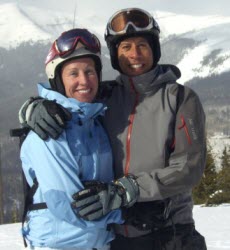
Life Prior to Surgery: When she was just 14, Melissa’s mother found a sizeable bump on her spine. A doctor told the family that Melissa had severe scoliosis. She was then forced to wear a brace for the next 13 months and underwent a traditional posterior spinal fusion. Recovery was slow, lonely, and very painful. When she reached her forties, Melissa’s back gave out again and the pain returned with a vengeance. Melissa learned that she had developed degenerative disc disease and became very depressed thinking about the prospect of another surgery. She tried an array of conservative treatment options, including massage, pain medications, and cortisone injections. Unfortunately, these only provided temporary pain relief. As daily activities became more difficult, Melissa realized that another surgery was likely her only option. Situation Today: Melissa is married to an orthopaedic spine surgeon, Dr. Jim Youssef. He took her case to Dr. Darrel Brodke, who performed the XLIF procedure. Melissa’s husband was there to nurse her back to health and they went on countless walks and participated in strength-training exercises. To everyone’s delight and surprise, the family took a vacation to Hawaii just three months later and Melissa participated in her favorite sport—surfing. Today, Melissa is an active Patient Ambassador in The Better Way Back and provides hope and support to patients who are considering spine surgery.
Joyce S.

"I'm now able to walk my dog and teach my students without pain."
View Story
Life Prior to Surgery: Joyce struggled with back pain starting in her 20s and 30s. Finally, when she was in her 40s, her pain intensified and an x-ray revealed that she had herniated discs. Joyce treated her pain with pain medications but, 10 years ago, a doctor recommended cortisone shots. Joyce first had 3 cortisone shots (1 per month) which provided pain relief for about 5 years. However, her subsequent rounds of shots failed to provide relief. As the years progressed, Joyce’s pain started radiating down the front of her legs and she struggled to stand up straight. Her pain affected her work as a school teacher and Joyce became increasingly discouraged and desperate for a long-term solution. Joyce was referred to a surgeon in Boston who felt that she had a pinched nerve, which was causing her leg pain. The surgeon recommended consecutive spinal procedures, including a fusion, which did not appeal to Joyce. Finally, Joyce’s anesthesiologist recommended Dr. Louis Jenis and Joyce sought a consultation. A series of tests and another MRI revealed that Joyce had degenerative disc disease which caused the nerve damage and her leg pain. Dr. Jenis recommended that she undergo the minimally disruptive XLIF procedure and, after extensive research, Joyce felt confident in her surgeon and the procedure. Situation Today: After the XLIF surgery, Joyce walked the next day and was able to scale stairs before being discharged from the hospital 4 days later. Although she had some post-op surgical incision pain and residual leg pain from nerve damage for about 2 weeks, she was able to drive only a couple weeks after surgery. Joyce didn’t do any physical therapy but walked throughout her recovery and returned to work after only 6 weeks. Now, Joyce continues to work on strengthening her core but is able to exercise and enjoy daily activities pain-free.
John K.

“I have no complaints of back or leg pain anymore and am back to all my favorite activities.”
View Story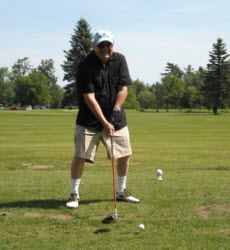
Life Prior to Surgery: John struggled with sporadic back and leg pain since 1995 but, to his dismay, his pain intensified about 2 years ago when he woke up one morning with severe hip pain. He immediately took pain medication and consulted with his primary care physician a few days later. In addition, John visited an orthopaedic surgeon who diagnosed him with a muscle sprain and recommended physical therapy. After 1 ½ months of physical therapy, John’s leg pain had progressively worsened and he struggled with burning and numbness that radiated from his hip to his ankle. John had always led an active lifestyle, but his pain was beginning to prevent him from participating in his favorite activities like tennis, bowling, and racquetball. Whenever he tried to do any physical activity, his leg would “give out.” Eventually, John had an MRI which revealed that he had spinal stenosis. Subsequently, John tried pain management and underwent 3 rounds of epidural injections – the first 2 didn’t work but the third did provide him with some pain relief. Nonetheless, John was still looking for a long-term solution to his pain. He was, however, reluctant to undergo a traditional spine procedure which was recommended by his local neurosurgeon. Instead, John sought a consultation with Dr. Roy Vingan who recommended that he undergo the minimally disruptive XLIF procedure to treat his stenosis and cracked vertebrae at L3-5. Situation Today: John underwent a two-level XLIF procedure with direct decompression in November 2010 and was walking within 24 hours. He returned home after just 2 days and, within a couple weeks, he was walking up and down his street. As the weeks passed, John began to wean himself off the pain medication prescribed after the procedure. In order to regain muscle strength in his back, John performed aqua therapy for one month and underwent physical therapy for 6 weeks. Now, John is pain free and is extremely pleased with the results of his surgery. He is playing golf 2 days a week, tennis 4 days a week, and looks forward to resuming bowling in the fall and, eventually, racquetball!
John G.

"I don't have any restrictions. I couldn't ask for better results."
View Story
Life Prior to Surgery: John struggled with ongoing sciatica for several years. He tried chiropractic treatments, massage, physical therapy, and various exercises. Unfortunately, they all failed to provide him with long-term pain relief. Additionally, he sought consultations with multiple surgeons who couldn’t provide an appealing treatment option. John’s pain made it difficult to participate in an active lifestyle and enjoy activities like hiking. Sporadic numbness also made it difficult for John to stand or walk for long periods of time. As a plumber, some of his professional activities, which included heavy lifting, took a toll on his back and resulted in soreness and discomfort. After a consultation, Dr. Erik Spayde recommended surgery. Initially, John held off from undergoing surgery because of the horror stories he had heard. Instead, he sought additional consultations with other surgeons. He tried epidurals which only masked his pain and provided temporary relief for a couple of months. Eventually, John became increasingly tired of dealing with constant discomfort and decided to undergo XLIF surgery. Situation Today: John underwent XLIF surgery in February 2011 and was walking the next day. He was able to return home after four days, and he wore a back brace daily for three months. Every day, John walked through his neighborhood and was able to return to the gym and ride a stationary bicycle after a couple of weeks. He was happy to resume full time work as a plumber after four months. Now, pain-free and with no discomfort John claims, “I couldn’t ask for better results!”
Jerrilynn I.
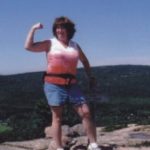
“If I could give any advice, it would be to not wait."
View Story
Life Prior to Surgery: Jerrilynn was diagnosed with arthritis as a child. As she got older, she developed herniated discs and chronic back pain that progressively worsened over the years. She had severe spinal stenosis, which caused instability and neurological symptoms, as well as spondylolisthesis. Jerrilynn tried numerous conservative treatments like prescription medications, hot packs, and physical therapy but, to her dismay, nothing provided her with long-term pain relief. Eventually, Jerrilynn’s pain became so severe that she could barely walk and was forced to move around in a wheelchair. When Jerrilynn’s pain began to inhibit her ability to work effectively as an office nurse, she sought a consultation with one of the surgeons in the office she worked in, Dr. Rudolph Buckley. When Dr. Buckley recommended the minimally disruptive XLIF procedure, Jerrilynn was willing to try anything for relief. Situation Today: Jerrilynn walked within a couple of hours after undergoing the XLIF procedure in November 2008. She was even able to get up and use the bathroom on her own. Unfortunately, one week later, she was doing some household chores and suffered a spinal compression fracture. Dr. Buckley was unsure if osteoporosis contributed to the fracture but she underwent a PLIF and decompression procedure on December 9, 2008 to correct the injury. Now, Jerri no longer struggles with lower back pain and has been able to resume activities like hiking and swimming.
Gina E.

“Because of this procedure and my wonderful surgeon, I was able to enjoy my Europe trip with my husband."
View Story
Life Prior to Surgery: Gina’s struggle with low back pain began years ago. She had always been overweight, which she believes contributed to her back problems. She was also diagnosed with osteopenia at L4-5 which exacerbated her problems. Eventually, Gina’s pain started radiating down her legs due to a pinched nerve. In 2008, Gina underwent back surgery, but unfortunately, it failed to provide her with any pain relief. Gina was eventually referred to Dr. Erik Spayde and he recommended epidural injections, which only provided her with temporary relief. At that point, Gina knew that she needed to seek a surgical solution for her chronic pain. Although Gina was hesitant to undergo another spine surgery due to her age, her pain had reached the point where she was willing to try anything. Additionally, she had a lot of faith in Dr. Spayde and felt comfortable with him. Situation Today: Gina underwent XLIF surgery in July 2010. Following the procedure, she wore a back brace daily for six weeks and sporadically for the next four months. Several months later she started physical training and took part in core strengthening exercises. Today, Gina swims five days per week and does aqua aerobics. She feels some numbness in her right leg due to residual sciatic nerve damage, but she uses the assistance of a cane for stability. She was able to travel to Europe one year post-op, and toured Italy with her husband, daughter, and granddaughter. Gina is an officer in two organizations and is able to enjoy social outings with her girlfriends, pain-free.
Elizabeth L.

"My back doesn't inhibit me anymore."
View Story
Life Prior to Surgery: Elizabeth’s back problems began as a teenager, and she continued to struggle with sporadic pain throughout her adult life. In the fall of 2004, an MRI revealed that she had a herniated disc at L3-4. Elizabeth went to the emergency room and underwent a microdiscectomy, though the relief was temporary. One year later, the disc re-herniated and she underwent another microdiscectomy. In 2009, Elizabeth’s back pain returned again and, after consulting with a family doctor, she sought an appointment with a neurosurgeon in Colorado Springs. Per the surgeon’s recommendation, Elizabeth began physical therapy and found temporary relief. To her dismay, in late 2010, her sciatic pain returned with a vengeance. Cortisone injections and prescription pain medications failed to provide long-term relief. She grew increasingly frustrated that the pain was impacting her social and professional life. Elizabeth runs a home business and was unable to sit at her desk for long periods of time. One morning, after volunteering at a local hospital, Elizabeth found herself in excruciating pain and couldn’t sit, stand, or lay down. She asked her husband to take her to the emergency room where she met Dr. Mark Santman who recommended that she undergo the XLIF procedure. Situation Today: Elizabeth underwent XLIF surgery in October 2010 and was walking the next day. She was discharged after four days and used a walker for several weeks. She transferred to a cane after about one month, using it only for stability purposes when needed. Now, Elizabeth enjoys physical activities like walking and gardening and is able to go on vacation, take long road trips with her family, and volunteer at her local hospital, pain-free.
Colin D.

"Don't be afraid, in the end, surgery is all worth it."
View Story
Life Prior to Surgery: One year ago, Colin bent over to make his bed when he felt a “pop” in his back. He scheduled a consultation with a doctor who told him that he had a pulled muscle. Although Colin could barely walk after this incident, he didn’t want to cancel his vacation to England. Colin struggled through his trip and, when he returned home to Maryland, he was forced to go to the emergency room due to the excruciating pain. Colin managed his pain for the next month and eventually underwent his first spine surgery in December 2010. There was a lengthy recovery process after the surgery and he couldn’t get out of bed for two weeks. Although his first surgery eased the pain, Colin still struggled with discomfort. He decided to try conservative treatments like pain medications and epidural injections but, these failed to provide long-term pain relief. The combination of back pain and heavy dosages of pain medications affected his diet and Colin lost over 30 pounds. In addition, the severe pain that developed in his right leg made it very difficult for him to walk or stand for long periods of time and he was forced to walk with a limp. Eventually, Colin was referred to Dr. Michael Dabbah and had his first consultation in May 2011. Dr. Dabbah recommended another spine surgery and, although Colin was anxious and fearful about another back procedure, he was desperate for long-term relief. Situation Today: Colin underwent the minimally disruptive XLIF procedure in June 2011 and stayed in the hospital for three days. Although he experienced some post-op incision pain, he started walking around the hospital immediately after the surgery with the assistance of the walker. Colin began in-home physical therapy twice per week and walked around his neighborhood with the physical therapist. He immediately noticed that pain in his right leg had disappeared but still struggles with numbness in his left thigh. Now, Colin continues to do physical therapy three times per week to strengthen his core muscles and is confident that he will continue to improve. He’s resumed his daily activities and enjoys physical activities like cycling without pain.
Rhonda P.

"The XLIF procedure did something that I had never experienced before; it actually worked!"
View Story
Life Prior to Surgery: Rhonda battled a myriad of back problems after a bad car accident in 1987. She broke her L5 vertebra in the crash and underwent traditional surgery in 1988. Later in the year, Rhonda underwent a cage fusion surgery, which left her in a full body cast for 6 months. After getting out of the cast, her pain was so severe that she could not stand for more than 5 minutes at a time, and her right leg would continually go numb. Rhonda’s mother, pained by her daughter’s seemingly endless struggle with chronic back pain and failed surgical procedures, recommended she see Dr. Matthew Wasserman. He empathized with all that Rhonda had been through and felt that she would benefit from the minimally disruptive XLIF procedure. Rhonda became very comfortable with Dr. Wasserman and agreed to go through yet another back surgery in the hope of regaining her quality of life. Situation Today: Rhonda was walking immediately after the XLIF procedure and was released from the hospital after four days. She did not need to wear a back brace during her recovery and was adamant about doing whatever Dr. Wasserman asked of her. Rhonda was able to return to work eight weeks after the surgery, and can now enjoy activities like biking and hiking again - things that she couldn’t do prior to undergoing the XLIF procedure. Rhonda credits her husband as a huge supporter throughout her entire back ordeal. Today, she wants to use her positive experience to encourage others.
Michael M.

"I just want to be able to get up every day and enjoy my life with my children."
View Story
Life Prior to Surgery: Mike struggled with back problems for several years. He underwent minor spine surgeries in the early 1990s but, by January 1996, his severe back and leg pain intensified due to a bone spur. Subsequently, he underwent a traditional spine fusion in 1996. The surgery provided pain relief for several years but, eventually, Mike’s pain returned. He struggled with continued disc degeneration in his lower back and pain that radiated through his legs, making it impossible to walk or stand for long periods of time. Mike consulted with Dr. Dalip Pelinkovic who recommended the minimally disruptive XLIF procedure. At that point, he was willing to try anything for pain relief and was desperate to return to a high quality of life. Situation Today: In November 2009, Mike underwent an XLIF procedure. Mike walked immediately after the procedure and extensively throughout his recovery. He claims, “I’ve never been better! I have no more lower back pain.” Mike is very grateful for Dr. Pelinkovic and his supportive staff for helping him along his journey to recovery. Mike remains positive and looks forward to being able to resume athletic activities like weight lifting and swimming at his gym in the near future.
Michael F.
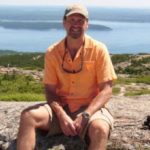
"Being able to manage my pain and live my life to its fullest is the best outcome of all."
View Story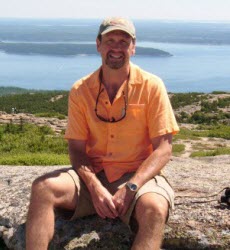
Life Prior to Surgery: In July of 2009, Michael’s right leg went numb and he began experiencing severe pain and a burning sensation. He suspected the symptoms were related to nerve compression. Therefore, he underwent multiple epidural injections at the recommendation of a pain management doctor. After five months of continuous pain, however, Michael was frustrated that the epidural injections were not providing the relief he needed. Michael feared that he may eventually suffer permanent nerve damage, so he scheduled a consultation with a local neurosurgeon. The surgeon performed a partial discectomy at L4-5 and hemi-laminectomy at L5-S1. The procedures seemed to go well, but about one month into his recovery, Michael began to experience bilateral radiculopathy. Even with physical therapy sessions and medications, Michael continued to experience pain and numbness in his legs. Three months into his recovery, Michael finally insisted on having an MRI. The MRI showed that Michael’s L4-5 disc had collapsed. Frustrated, he sought another opinion from Dr. Faheem Sandhu at Georgetown University Hospital, who has extensive experience performing less disruptive procedures, such as XLIF. In July of 2010, Michael underwent a single-level XLIF procedure. Situation Today: Michael woke up after his surgery and was able to feel his legs for the first time in weeks. The nerve compression pain was gone, although Michael did experience temporary post-op pain in the core of his body and around his incisions. He was released from the hospital two days after surgery. Initially, Michael was taking high doses of pain and anti-inflammatory medications, but he was able to reduce the dosages after six weeks. With repeated physical therapy sessions, pain management therapies, and provider-supported exercises, Michael was able to return to his active lifestyle again.
Julie L.

"Every day I feel better and better."
View Story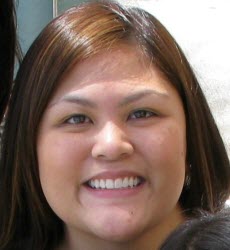
Life Prior to Surgery: Julie, an ICU nurse, sustained an injury to her back while lifting a patient. Due to the severity of this injury, she developed neuropathy to both legs, scoliosis, and lower back pain. Julie tried conservative treatment options for approximately eight months, including chiropractic therapy, physical therapy, pain medications, and epidurals, but nothing provided her with long-term relief. Then, Julie decided to research surgical options to relieve her pain. She scheduled a consultation with Dr. Jon Graham and Dr. Morris Mitsunaga. The XLIF procedure was determined to be her best option and Julie decided to proceed with surgery. Situation Today: The XLIF procedure Julie underwent in September 2010 proved to be successful. She spent three days in the hospital but was up and walking with the help of a physical therapist by the second day. Following her discharge, she needed minimal help and participated in rehabilitation, including physical and aqua therapy, within two weeks of her surgery. Today, Julie is walking taller and straighter and her legs no longer hurt. She is back at work as a full time nurse and feels stronger every day. She enjoys hiking, going for long walks and light jogs, and working out pain-free.
James M.

"Dr. Peterson is very skilled and I am pleased with the results of this new surgical technique."
View Story
Life Prior to Surgery: James started struggling with back pain in 1982. While trying to move a large radio by himself, he felt something “pop” in his back and it was followed by a very sharp pain in his lower back. The pain continued throughout the day and James scheduled an appointment to see a doctor. He was referred to Dr. Earl Peterson (Dr. Mark Peterson’s father) who encouraged James to try heating pads, bed rest, and oral pain medications for several months. After a few months of continued pain, Dr. Earl Peterson suggested fusion surgery. The procedure left James in a full body cast for 6 months. Despite being very bored during the entire time, James felt a relief in his pain. When he was released from the hospital, he returned to work and for several years he was able to perform his normal activities without any major back pain. After a few years of working as the lead technician for the electronic weather service in Oregon, James realized that his back was slowly getting “beaten up”. He went through rehabilitation programs involving exercise and education to try and toughen his back, which helped him return to work. His back, however, took a turn for the worse, and in 1987 James underwent his second spine fusion. The fusion held up very nicely, but over the years James began to experience problems with his adjacent lumbar levels. He dreaded further surgeries, but by then Dr. Earl Peterson’s son, Dr. Mark Peterson, was a practicing spine surgeon and he suggested a new minimally disruptive type of lumbar fusion called the XLIF procedure. James, being familiar with surgery, liked the idea of a reduced recovery period and trusted Dr. Peterson’s recommendation. Situation Today: James underwent the XLIF procedure performed by Dr. Mark Peterson. Being no stranger to spine surgery, James was extremely happy with the results of his procedure. He was surprised how quickly he was able to stand up and walk. Although he still experiences constant pain due to the damage to his nerves over the years, his level of pain has been greatly reduced. More importantly, his recovery was vastly different from his previous surgeries, which James noticed more than anything.
Francis G.

"I didn't have any fear going into the procedure because Dr. Mundis prepared me."
View Story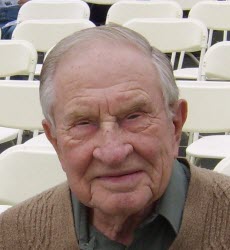
Life Prior to Surgery: Francis struggled with chronic leg and back pain for years. The shooting pain down his left leg prevented him from standing for more than 10 minutes or walking more than half a block without having to sit down. Francis’ inability to stand made it difficult to participate in daily activities. He first tried conservative treatments like physical therapy, pain medications, and epidural injections. To his dismay, these methods failed to provide long-term pain relief. Searching for another solution to manage the pain, Francis was referred to Dr. Gregory Mundis and underwent an MRI. Dr. Mundis recommended the XLIF procedure, which appealed to Francis because of the minimally disruptive approach. Not being able to live with the pain any longer, Francis decided to undergo the XLIF procedure. Situation Today: Francis underwent surgery in June 2010. He was able to walk the day after surgery using the assistance of a walker. He was discharged from the hospital after three days and spent 2 weeks in a rehabilitation facility where he began his recovery process. This included activities such as walking for various periods of time as well as physical therapy. Francis walked with the aid of a cane to help with his stability for about 6 weeks after surgery while he regained muscle strength. Today, Francis enjoys walking, spending time with family, and performing everyday activities at his independent living facility, pain-free.
Donna P.

"I love being able to garden and paint again."
View Story
Life Prior to Surgery: Donna struggled with back pain for years and it eventually worsened to the point where it inhibited all of her activities. She could no longer participate in the active lifestyle she had always known, or do the things she loved, such as walking, gardening, swimming, and painting. The pain in her back was so bad that Donna was forced to lead a sedentary lifestyle. She tried various conservative treatment methods to alleviate her back pain, including seeing a chiropractor, physical therapy, exercise, prescription medications, acupressure, epidural injections, yoga, and meditation. Unfortunately for Donna, none of these methods were able to provide her with any long-term pain relief. That is when she sought the help of Dr. James Bruffey. During the consultation, Dr. Bruffey recommended an XLIF procedure for Donna. Situation Today: Donna underwent a successful XLIF procedure on January 20, 2011 and got the New Year started off on the right foot, walking the day after surgery. She did not experience any postoperative complications and she walked often to help her recovery progress. Donna was able to resume activities she loved like gardening and painting after surgery and she even returned to work not long after undergoing the procedure.
Dave T.
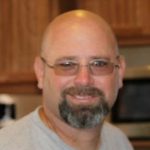
"For the most part, I'm back to all my daily activities that I couldn't do before."
View Story
Life Prior to Surgery: Dave grew up racing motocross and wrestling, and eventually his active lifestyle took a toll on his back. His chronic pain began when he was in high school and he sustained several injuries over the years which only perpetuated his pain. In the 1980’s, Dave’s pain increased after he broke his L5 vertebra. He first attempted to alleviate the pain through conservative treatments: Around the same time, he was forced to quit motorcycle racing because the pain was too much to bear. Dave had plans to attend flight school, but failed his physical when the doctor identified multiple compression fractures in his thoracic region. Although this was a setback, Dave decided to go to college and start a career in construction. Unfortunately his work took an additional toll on his back and Dave decided to try chiropractic treatments, which failed to provide relief and instead caused him even more pain. As his pain worsened, Dave’s world shrank, and he had to cut more and more daily activities out of his life. He couldn’t walk more than half a block without having to stop and his pain affected his social and recreational activities. Realizing that his life was becoming increasingly narrow, Dave was ready to try anything that could offer him long term relief. Relying on the firsthand knowledge of patients who had positive experiences with Dr. Blankenship, he decided to seek a consultation. Dr. Blankenship recommended spine surgery, and Dave decided to go forward. Situation Today: Dave underwent an XLIF corpectomy procedure on January 28, 2011. He underwent a five level fusion and was up and walking within hours of his surgery. Dave did develop a cramp in his left hip during surgery which caused some post-op pain, but it gradually subsided. Dave returned home after five days of recovery in the hospital. The pain in his back and in his torso area was immediately gone. After six weeks, Dave was back to driving and working and felt better than he had in years. He still struggles with some muscle cramps but is taking some medications to relieve this pain and plans to participate in physical therapy. He has resumed some of his favorite activities, including fly fishing again, pain-free.
Dan F.

"I appreciate everything more now and feel like I have a second chance at life."
View Story
Life Prior to Surgery: Dan started experiencing back pain in 2007. He worked in construction, and his job required the moving of heavy equipment. He injured his back while at work and felt something “pop.” Although he struggled through the rest of the day, Dan “blew off” the incident and didn’t think he sustained a serious injury. Over the years, his back pain worsened. In early 2011, Dan decided to have his back examined. He underwent an MRI which revealed severe spine damage and his doctor recommended that Dan stop working in construction. Over the next six months, Dan reached the point where he could barely stand straight and developed a severe limp. He sought a consultation with Dr. Brian Grossman, who initially recommended conservative care. Dan tried epidurals which provided temporary relief but his pain always returned. He tried anti-inflammatories, physical therapy, and pain medications, all of which failed to provide long-term relief. Soon, the pain started affecting his moods. “Until you have back pain, you don’t realize how devastating it is,” explains Dan. Dr. Grossman recommended surgery and, although Dan was fearful, he wasn’t willing to risk his pain controlling his personal and professional life. “The idea of surgery was scary and it was a lot of mental anguish,” he recalls. Through workers’ compensation, Dan was able to get coverage for his surgery, but it took months. He was in such extreme pain, he was forced to take two weeks off from work prior to his surgery. Situation Today: Dan underwent an XLIF procedure followed by a TLIF surgery on July 22, 2011. Although he was in extreme discomfort immediately after surgery, Dan’s medication helped alleviate the pain. Two days after surgery, Dan was walking around the hospital halls and returned home after five days. Although Dan struggled with some post-op incision pain and soreness, it gradually subsided. Over the subsequent weeks, Dan walked consistently and went on short bike rides. “After the first 3 weeks, I progressed a lot faster than I thought I would,” says Dan. Soon, he was able to enjoy walks on the beach with his family. After 3 months, Dan was off all pain medications and continued with light stretching exercises. Today, Dan is mostly pain-free and is confident that he will continue to get better. He looks forward to being active with his young children and activities like dirt biking, camping, and hiking.
Carol M.

"I'm able to function and not be bedridden due to the spasms."
View Story
Life Prior to Surgery: Carol’s back pain started in 1988 when she was building a patio and overexerted herself. She also struggled with osteoporosis, and this only intensified her pain. She tried a variety of conservative treatments including being treated by a chiropractor, as well as physical therapy and acupuncture. None of these provided her with the long-term relief she needed. Desperate to find a solution for her pain, Carol underwent three lumbar laminectomies, traveling to California and back to Oregon to find a solution. The laminectomies, unfortunately failed to provide relief and she continued to struggle with debilitating muscle spasms. The pain drastically affected her professional life as an elementary school teacher and she had to take early retirement in 1994 when she was in her 50’s. Her muscle spasms forced her to be bedridden for a week at a time on multiple occasions. Finally, Carol consulted with Dr. Mark Peterson who recommended the XLIF procedure. Carol was fearful of a fusion, but she reached the point where she was willing to try. “I was desperate for help and so scared about the fusion surgery,” explains Carol. “I wish I had had someone to speak with prior to surgery who had that procedure.” Situation Today: Carol underwent XLIF surgery in November 2004 and recuperated in the hospital for several days. A few weeks after returning home, she began hydro therapy and physical therapy, both of which were very helpful. Her lower back spasms disappeared, and although she still has some pain in her lower back if she walks for long periods of time or does extensive activities, she is able to participate in the daily activities she missed out on for so long. Although she takes some pain medications, she is so grateful that she can function again. Carol’s health is still fragile, and she is having some upper back problems which emerged last year. She continues to manage her health with Dr. Peterson and is able to enjoy activities like gardening, household chores, and traveling.
Bob M.

"I'm living my life now like I couldn't live it 30 years ago."
View Story
Life Prior to Surgery: Bob’s struggle with chronic pain began in 1985 after he damaged a disc after falling through a roof hatch. After this incident, Bob underwent a multi-level laminectomy and discectomy. His pain was temporarily relieved, but recurrent disc herniation led to two additional laminectomies in the subsequent years. Bob’s chronic pain worsened to the point where it severely affected his personal and professional life, and he was unable to walk for any length of time without having to stop and rest. After living with this chronic pain for years, Bob was finally able to get a referral to Dr. Bruce Van Dam through state-funded worker’s compensation. After a consultation and careful discussion, Dr. Van Dam recommended XLIF surgery preceded by an ALIF procedure. Bob felt confident with Dr. Van Dam and had no hesitation about the surgery. He believed in the mechanics of the procedures and was willing to go forward with a long-term solution to his chronic pain. Situation Today: Bob underwent an ALIF procedure followed by XLIF surgery. He walked the day after surgery with the assistance of a walker and back brace. Bob struggled with some post-op incision pain and discomfort from constipation but his back pain had disappeared. After about 2 weeks, he was able to resume most of his daily activities. After 2 months, he resumed full-time work in sales – much sooner than he expected. As part of his recuperation, Bob wore a back brace daily for 6 months. Now, Bob enjoys spending time with his long-term girlfriend and taking long walks on the beaches of southern California, pain-free.
Barbara B.

"I wanted to get my life back."
View Story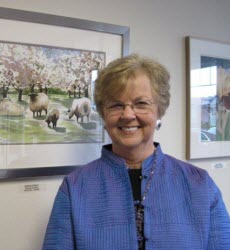
Life Prior to Surgery: Barbara’s back pain became increasingly severe a few years ago. She had previously visited Southern Oregon Orthopedics, so she decided to return and schedule a consultation with Dr. Mark Peterson. She experienced constant pain and could not even get out of a chair without severe discomfort. Living an increasingly sedentary life, Barbara was unable to do many of the hobbies she loved, including gardening, and she was passing up activities with friends because she was in pain. Dr. Peterson ran some tests and found that Barbara had two main problems causing her back pain. They decided together to proceed with spine surgery first and attend to a pinched nerve at a later time. Barbara was ready to undergo surgery because she was not able to live her life the way she wanted. She had tried treating her pain with medication and shots, but these were ineffective. She knew surgery was her next option. The decision to undergo spine surgery was not an easy one, but Barbara felt that it was the right time for her. Situation Today: Barbara underwent XLIF surgery on June 6, 2010 and she was walking the night after surgery. The next day she returned home. She felt so good that she had to remind herself that she was still recovering and needed to take it easy. Barbara was surprised by how little pain she experienced after surgery. For her, walking became the most important aspect of her recovery. She continues to increase the distance she walks every day and now feels better than she has in years.
Scottie L.

"I could not have asked for a better outcome. I am very grateful."
View Story
Life Prior to Surgery: Scottie started struggling with back problems in 8th grade after a girl pulled a chair out from under her. After this incident, Scottie could not walk for two weeks. Over the years, she managed her pain with conservative treatments but her pain worsened after she had a baby. She was eventually referred to Dr. Duc Nguyen who noticed the severity of Scottie’s spine condition. Scottie underwent six spine surgeries with Dr. Nguyen over the following years due to continued disc degeneration. Between these procedures, she tried to alleviate her pain with conservative methods like physical therapy, chiropractic treatments, exercise, acupuncture, and epidurals. To her dismay, the surgical and conservative treatments failed to provide the long term relief that Scottie desperately sought. She couldn’t play with her two young grandchildren. Each surgery was terrifying for Scottie but she had confidence in Dr. Nguyen “The pain affected everything and it took over,” recalls Scottie. “I found myself waiting for something to crack or break.” Situation Today: Scottie underwent XLIF surgery in May 2008. She was walking right after surgery and went home within a couple of days. “I was up and going immediately,” says Scottie. She walked throughout her recovery and was able to do most of the therapy exercises herself. Compared to some of her previous spine surgeries, she thought the recovery after XLIF “was a breeze”. Now, Scottie is able to enjoy activites like cooking, going on long walks with her husband, and cycling again. Most importantly, she can play with her grandchildren pain-free. Although she can’t bowl anymore, she is living a high-quality life.
Ruie S.

"I don't have any leg pain; I don't have any back pain!"
View Story
Life Prior to Surgery: For Ruie, a social worker from Corpus Christi, Texas, sitting was a luxury that she wouldn’t have dreamed of just months before. She suffered from chronic leg pain that had increased over three years. By the summer of 2010, sitting was unbearable. Lying down seemed to be the only way she could find relief. When Ruie could no longer sit in the passenger seat of the car, she knew something had to change. “The pain was so bad, it felt like there was a knife in my left leg and somebody was turning it,” recalls Ruie. She was forced to take high doses of medications every eight hours to quell the pain and required a wheelchair to get around. To her dismay, insurance carriers weren’t approving her coverage. Even so, one doctor recommended she try epidural injections, which proved ineffective. Ruie sought advice from Dr. Mathew Alexander, her surgeon from a previous back surgery. When she told him about the quantities of pain medication she was on, he was appalled. Dr. Alexander knew that the leg pain Ruie was experiencing stemmed from her spine, and diagnosed her with a severe spinal deformity. If untreated, this condition could permanently leave Ruie in a bent over position and unable to walk. He recommended that she undergo the minimally disruptive XLIF procedure. “I trusted Dr. Alexander, and I knew that I would do whatever he told me to do,” she says. For Ruie, this was the only option, and the only way out of excruciating pain. Situation Today: Dr. Alexander immediately scheduled the XLIF procedure for September 28, 2010. This innovative approach for complex spinal deformity cases is routinely done at South Texas Brain and Spine Center. Ruie was up and walking the morning after the procedure. “The only pain I had was from the incision,” she told the nurses. Ruie started physical therapy three days later. Today, Ruie is steadily gaining back her strength and endurance. Dr. Alexander told her to give herself time to work back up to being “Superwoman.” She follows this advice and is careful not to twist, bend down, or reach up too high. She doesn’t mind taking time getting back to full capacity. “I don’t care how long it’s going to take, because I don’t hurt,” she says. Now, Ruie is able to pursue her favorite activities again. She can shop with her great-granddaughters, who, like Ruie, are Rainbow Girls - an organization founded upon faith, hope, and charity. “I have been a member of Rainbow my entire life,” explains Ruie. “But I had to stop going when the pain was so bad, I couldn’t sit through a meeting.” Ruie was thrilled to attend a recent ceremony where her youngest great-granddaughter, Aubry, was initiated into Rainbow. Ruie’s Rainbow journey can now continue with all of her great-granddaughters.
Randy Z.
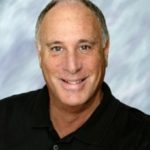
'Thanks to Dr. Smith and XLIF. Truly, they saved my life."
View Story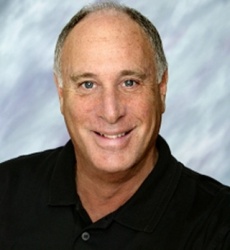
Life Prior to Surgery: When Randy was 19-years-old, he was in a terrible auto accident. After being ejected, he was hit by his own car which caused a number of bodily injuries, most notably a broken pelvis. Over the years he developed degenerative disc disease and scoliosis and his spine literally “fell apart.” In 2003, Randy went on a roller coaster and, afterward he was never the same. The next day he could not move his legs and experienced pain spasms so severe that he could not pull himself out of bed. The next morning, he underwent his first of many epidural injections. The first one went very well and temporarily relieved his pain. But as the epidural wore off, his back pain returned. Randy met with the head of the orthopedics department at his HMO where he had been a member for 20 years. To his dismay, no surgical procedure or treatment plan was offered, except pain medications. He consulted with several surgeons outside his HMO who concluded he was indeed a candidate for the XLIF procedure, but the HMO would not accept this diagnosis. For the next 7 years, Randy used pain medications and a surgically implanted neural stimulator which temporarily provided some relief. Ultimately, it stopped working and it was removed. Randy also underwent an L4-5 decompression and microdiscectomy outside of his HMO, which provided some relief. Then an unfortunate fall at his home re-injured the area and the pain returned with a vengeance. There were some very dark moments where Randy thought his life was over. He finally met HMO surgeons in Los Angeles who recommended a traditional fusion. At that point, he was so desperate, he agreed to undergo surgery. Right when he was scheduled for the procedure, the HMO surgeon had an injury of his own and was not able to perform surgery- another crushing blow for Randy. While on a business trip to Las Vegas, Randy fell and injured his fragile back again. He went to the ER at the hospital where he knew Dr. William Smith was on call. Dr. Smith diagnosed Randy’s condition as emergent with acute changes in his condition including drop foot. Dr. Smith determined that he required an immediate spinal fusion. The next day Dr. Smith and his team performed an XLIF and a TLIF procedure. Situation Today: With the support of the hospital staff, Randy quickly began to recover. Now, his pain is very manageable and his drug use has been reduced by 70%. In only 6 months, Randy has his life back. He walks with minimal pain, has regained nearly 2 inches of height, and soon he hopes to return to his life-long passion of surfing. The difference in his life since the procedure can only be described by Randy as “miraculous.” He believes that he will soon be back in the water surfing in front of his Cardiff, CA home.
Rebecca Y.

"I can't say enough good things about Dr. Volcan and his staff."
View Story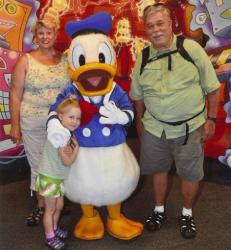
Life Prior to Surgery: When Rebecca began experiencing back pain, she thought it was a result of an injury she sustained while carrying her granddaughter. For about three weeks after this incident, Rebecca struggled with severe back pain. Eventually, her lower back pain subsided, but she continued to experience a burning sensation in her legs. The pain prevented Rebecca from participating in activities with her family. She tried hot and cold packs and pain medications, but these conservative treatments failed to provide long-term relief. She consulted with her primary care physician who took x-rays and referred her to Dr. Ildemaro Volcan. Dr. Volcan diagnosed Rebecca with spodylolisthesis and recommended that she undergo XLIF surgery to help relieve her chronic pain. Rebecca felt comfortable with the idea of surgery because Dr. Volcan was very thorough with his explanation of the procedure. Rebecca had reached the point where she was in excruciating pain and desperate for a long-term solution. Situation Today: Rebecca underwent XLIF surgery in February 2008. She spent one night in the hospital and walked the day after surgery. She was very determined to start moving immediately after her operation and her positive attitude helped keep her motivated throughout her recovery. Rebecca was also lucky to have the support of her family throughout her recovery. Though she still had some residual hip and leg pain in the mornings after surgery, it would be alleviated when she started walking and stretching. After ten days, she went in for her first post-op checkup with Dr. Volcan and felt wonderful. She was even able to bend down and touch her toes. “You’ve got to move around after surgery to prevent stiffness,” says Rebecca. Now, Rebecca can do anything she wants and enjoys activities like hiking with her grandchildren again, pain-free.
Melba P.
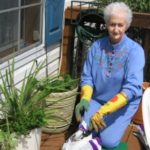
"What a blessing to be moving around again without pain."
View Story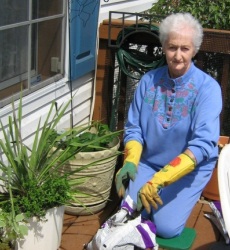
Life Prior to Surgery: For over 25 years, Melba has been the primary caretaker for her son, who is physically disabled. In addition, Melba worked as a licensed practical nurse. The demands of Melba’s profession and the passage of time took a toll on her back. She gradually developed scoliosis with a severe tilt to the right. Melba’s pain caused her to lean forward and, eventually, her back and leg pain worsened to the point where she was unable to stand for more than a few minutes. She tried many conservative treatments including physical therapy, epidural injections, medications, and alternative therapies. Unfortunately, Melba’s pain persisted and these treatments only provided her with temporary relief. Due to the continued care needed for her son, Melba was reluctant to have spine surgery because she was concerned about a long recovery period. Traditional spine surgery may require several weeks in the hospital, and up to a year for recovery. Situation Today: After a consultation with Dr. Dhruv Pateder and learning that her severe scoliosis could be corrected with the minimally disruptive XLIF procedure, Melba underwent surgery on October 20 and October 23, 2009. She walked the day after the operation and, five months later, she was able to walk 30-40 minutes without pain. Today, she enjoys studying her family’s genealogy and recently discovered that several family members also had curvatures of the spine. Thanks to Dr. Pateder and the XLIF procedure, Melba hopes to rewrite her family history of back problems.
Marlene M.
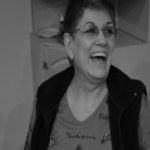
"I feel like a walking miracle, and Dr. Skubic is the miracle worker."
View Story
Life Prior to Surgery: Marlene was diagnosed with scoliosis during a student screening in the 1970s in which her youngest son was a participant. Her back problems intensified after a rear-end accident in 1981 and then a head-on car collision as a passenger in 2003. Marlene struggled with pain particularly during activities such as household chores, gardening, and exercising. As these activities became increasingly difficult, Marlene was referred to Dr. John Skubic by her primary care physician. Under Dr. Skubic’s direction, x-rays were taken that indicated Marlene had pressure on her spinal cord. In 2008, Marlene underwent a cervical procedure which provided her with some pain relief in her neck and upper back. This was followed by a series of epidurals in 2009 to provide relief from the pain in her lumbar area. Marlene knew the epidurals were a “band-aid” treatment, but they afforded her the time to physically and mentally prepare for the impending surgical experience. Her pain worsened in the spring of 2011 and radiated from her low back through her legs. Medication did nothing to provide relief and epidurals offered her only a couple of days of relief, after which the pain returned in full fury. The only relief Marlene found was during her daily 1-1.5 hour swims in her community swimming pool. But, as the pain increased, Marlene became somewhat reclusive. “I just didn’t want to let others see me like this,” she recalls. Despite her pain, Marlene was strong in her faith and felt great support from her family and friends. Situation Today: Marlene underwent XLIF surgery in October 2011 and, when she woke up, immediately noticed that her chronic pain had disappeared. She believes her recovery went so smoothly because she listened to Dr. Skubic and was careful not to overexert herself. Now, Marlene is very careful with her diet and continues to walk as she recovers. She has resumed driving but is cautious to keep this activity to a minimum. Marlene now looks forward to being active with her children and grandchildren. She anticipates getting back into the swimming pool, is busy with her handicrafts, and is resuming her social activities.
Dedra D.

"I swear by the XLIF procedure. It really worked and now I feel great and am pain-free."
View Story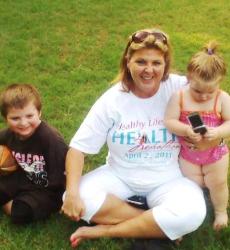
Life Prior to Surgery: Dedra first injured her back when she was performing housework. The injury continued to worsen over time. For the next ten years, she suffered from chronic back pain and, despite trying conservative treatments like epidural injections, pain management, and physical therapy, Dedra failed to receive long term pain relief. In her search for a solution to her ongoing pain, Dedra’s physical therapist referred her to Dr. Christopher Heck. After performing an MRI and a discogram, Dr. Heck concluded that Dedra had severe degenerative disc disease and recommended that she undergo the minimally disruptive XLIF procedure. Situation Today: Dedra walked within 24 hours of undergoing the XLIF procedure. She struggled with a few minor post-operative complications, including muscle stiffness and numbness in her left leg. Those complications were alleviated by physical therapy treatments. Dedra is now pain-free and a huge advocate of Dr. Heck and the XLIF procedure. She is also very grateful to her physical therapist who helped her extensively throughout her journey to recovery. She looks forward to participating in activities she loves like biking and horseback riding.
Carroll H.
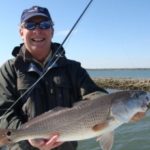
"I am back to fishing and hunting and am no where close to the pain I was in."
View Story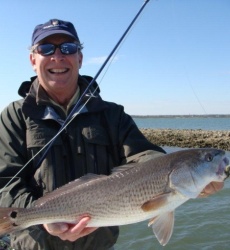
Life Prior to Surgery: Carroll started struggling with back problems when he was in his 40s. The pain then became chronic as he entered into his 50s. In addition to trying conservative treatment methods like epidurals, physical therapy, and pain medications to control his pain, Carroll also underwent two laminectomies. Unfortunately the conservative treatments and the surgical procedures failed to provide Carroll with long-term pain relief. When his pain began to radiate down both legs, he decided to schedule a consultation with Dr. Steven Poletti. Upon meeting with Dr. Poletti and discussing Carroll’s situation, Dr. Poletti recommended the minimally disruptive XLIF procedure. Situation Today: Carroll was up and walking the day after surgery and he walked extensively throughout his recovery. He was able to walk two-to-three miles every day only two months post-op. Now, he is back to his favorite activities, hunting and fly fishing. Carroll is very thankful to have had such a prompt and successful recovery. He is also very grateful to Dr. Poletti and would love to share his amazing story of recovery with others.
Bobby B.

"The XLIF surgery helped me, and it's sure going to help other people."
View Story
Life Prior to Surgery: Bobby retired at the age of 59 and enjoyed playing ping pong and golf as well as taking long bike rides. Unfortunately, the golfing caused discomfort in his back. Coupled with the stress associated with the sudden loss of his first wife, Roberta, in 2001, Bobby’s back pain seemed to progressively worsen. In December 2008, his back “gave out for good” and he was unable to stand up on his own. Paramedics rushed Bobby to the hospital, where he met Dr. Ronjon Paul, who diagnosed him with a herniated disc at the L4 vertebra. Bobby was a candidate for the minimally invasive XLIF procedure which was performed on January 26, 2009. Situation Today: Bobby performed rehabilitation exercises after his XLIF surgery with a physical therapist who came to his home. “You have to be willing to do the leg lifts―to make the effort,” he said. “After two-and-half months, I was back to playing ping pong, golf, and riding my bike. I haven’t had any back pain since then. I’ll be 80-years-old soon, and what I’ve learned is that it’s never too late to undergo the XLIF procedure.” Bobby continues to enjoy life pain free and is very grateful to Dr. Ronjon Paul and for what he did for him.
Billie H.
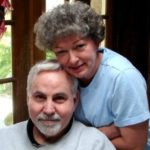
"Dr. Smith is an angel and has truly given me back my life."
View Story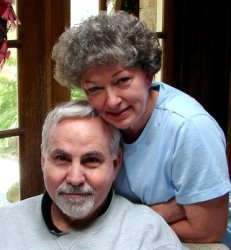
Life Prior to Surgery: Billie experienced chronic pain in her lower back and down her legs. Billie did her own research and discovered that she had peripheral neuropathy in 1999. She joined a peripheral neuropathy support group and was no stranger to the horror stories about back surgery. However, a nurse in the group mentioned that Billie should seek multiple consultations with physicians to properly diagnose her condition and treatment options. Billie scheduled a consultation with a neurologist who told her that she would have to “live with the pain.” Although her doctors were unable to give her a diagnosis, Billie was convinced that something was very wrong with her spine. As a high school teacher, standing for long periods of time became extremely painful. She experienced numbness in both of her legs and feet. Eventually, her pain became so unbearable that she was forced into early retirement from her teaching career. A second neurologist referred her to Dr. Smith who told her that he could help. First, Billie underwent a traditional spine surgery in 2001 and the recovery process was lengthy. She wore a back brace for 4-6 months. The surgery did provide her with pain relief and she felt like a new person. However, she began to experience neck pain so she underwent a cervical procedure with another neurosurgeon. To Billie’s dismay, her overall condition worsened again and Dr. Smith diagnosed her with degenerative disc disease. Billie was fearful of being confined to a wheelchair and was hoping for a long term solution. Dr. Smith explained the minimally invasive XLIF procedure and, after realizing that she could not manage the pain any longer, Billie decided to undergo surgery. Situation Today: Billie underwent the XLIF procedure in August 2011 and walked the day after the surgery. She was able to return home after just 2 days in the hospital and started a dedicated walking regimen. Although she did experience post-op surgical incision pain, her previous back pain had disappeared. She took pain medications for only 2 weeks. Billie is grateful that she was able to resume her daily activities like shopping and gardening. She realizes that she needs to take the recovery one step at a time and does not want to overexert herself while her back is healing but her condition continues to improve.
Kaitlin F.

"I am grateful to one of the best surgeons for helping me get back to the life I was living."
View Story
Life Prior to Surgery: Kaitlin is an avid horseback rider and an active young adult. In 2011, she was thrown from a horse and experienced an incredible amount of pain in her back. It was later discovered that the impact of her fall was so great that it caused a burst fracture in her spine. She was able to walk a little, but an x-ray revealed the broken bone and an ambulance was called. Dr. Uribe was called in to consult and, if needed, perform the surgery necessary to repair the injuries. After reviewing the film and discussing options with Kaitlin, they both agreed that surgery was necessary. Dr. Uribe decided he would remove a rib for a bone graft and perform the minimally disruptive XLIF corpectomy procedure. Situation Today: Kaitlin underwent XLIF surgery on August 15, 2011. Three days later, she was able to return home, and was prescribed muscle relaxers to take for the next three weeks. During her recovery, she only experienced minor pain, and continued to recover more and more each day. She is currently working on strengthening her back so that she can get back to horesback riding in the next few months. Given the circumstances, she is very grateful that Dr. Uribe was the surgeon on-call the day of her accident, and that he was able to treat her so quickly.
Deborah W.

"I want to motivate others and tell them they can have a pain-free life after surgery."
View Story
Life Prior to Surgery: Deborah led an active lifestyle as a tap, jazz, and pom-pom dancer. She was also a swimmer. She struggled for years, however, with minor muscle stiffness in her back which was exacerbated after injuring herself while walking her dog. After this incident, Deborah went to the emergency room and was told she had a herniated disc. Deborah’s doctor in Colorado mentioned that she may need surgery in the future but, despite her chronic pain, Deborah continued to dance. She tried conservative treatments including aqua therapy and pain medication, but her pain only worsened. When Deborah eventually relocated from Colorado to Florida, she was hunched over and could barely walk. She was admitted to the hospital and immediately referred to Dr. Juan Uribe. He recommended various surgical options to treat Deborah’s condition, and she ultimately underwent an XLIF procedure followed by an ALIF and a discectomy. Situation Today: After undergoing a successful surgery, Deborah walked the next morning. She wore a back brace for three months, and a bone growth stimulator for a total of six months. She walked and swam throughout her recovery. Now, Deborah is swimming one-and-a-half miles at least two times per week. Although she struggles with some residual numbness and muscle stiffness in her right leg, she is confident that she will continue to improve and looks forward to dancing again.
Ellen H.

“I wasn’t going to risk being bedridden for the rest of my life.”
View Story
Life Prior to Surgery Ellen has dealt with back and neck issues for as long as she can remember. Her left hip is higher than her right one which is a genetic and hereditary problem. As a result, she has been seeing a chiropractor since she was a teenager. About six years ago, she noticed that her spine was curving, causing even more imbalance. Ellen’s pain continued to worsen over the years. She was unable to stand up straight and constantly suffered from excruciating pain. Simple activities became increasingly difficult for her. For example, a simple task such as mopping the floor would take Ellen four hours. Eventually, Ellen decided to seek different types of conservative treatments such as epidural injections. Unfortunately, they failed to provide her with long-term pain relief. Ellen soon reached the point where she couldn’t put any weight on her right leg and she was forced to use a walker to get around her house. She feared losing permanent sensation in her lower right leg and was certain that within five years she would be bedridden. Ellen is a veteran and a member of the VA system, and through that organization she received a list of recommended spine surgeons. She chose three surgeons in the University Neurosurgery Clinic and, eventually, decided to schedule a consultation with Dr. Juan Uribe. Although she feared spine surgery, Ellen had reached the point where her pain was so severe she had no other choice. Situation Today Ellen underwent XLIF surgery in September 2011. She walked two days after her operation and stayed in the hospital for six days. After the surgery, Ellen wore a back brace and walked with the assistance of a walker while she regained stability. She did sessions of physical therapy to help regain muscle strength. Ellen was able to resume daily activities like cooking almost immediately but was careful not to overexert herself. She is grateful that she had a strong support system to help her through her journey to recovery. At the end of week five, Ellen was off all pain medications and was pain-free. “It’s unbelievable how I feel now,” exclaims Ellen. “Dr. Uribe gave me my future back.” While she does struggle with some arthritis, she looks forward to doing aqua therapy. Now, because she is pain-free, Ellen also looks forward to resuming full-time work as a hospice nurse in the near future along with other recreational activities like traveling and going to concerts.
12-NuVa-345
Kenneth H.

"I'm back to golfing."
View Story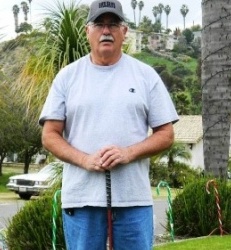
Life Prior to Surgery: In January 2010, Kenneth was at a work site in Mexico and bent over to tie his shoes. All of the sudden, he realized he could not straighten back up. He was experiencing severe back and leg pain. A few days later, he returned to the U.S. and went to his physician who determined that Kenneth most likely had a pinched nerve. Kenneth then scheduled a consultation with a neurosurgeon who, after a MRI, thought that he might have a tumor in his spinal cord. In March 2010, Kenneth underwent a traditional spine surgery that lasted 7 hours. During the procedure, a bone chip was removed but the surgeon failed to discover indications of tumor. During his recovery process, Kenneth felt horrible. He began hallucinating and found out that spinal fluid leaked into his brain. After six weeks post-op, he started physical therapy and tried to regain his strength. The numbness and burning in his leg had resided, but the back pain was now progressively getting worse. Kenneth then sought a consultation with Dr. Howard Tung, who examined the MRI. He also took X-rays that revealed that the disc space had collapsed from Kenneth’s previous surgery. Dr. Tung recommended that Kenneth undergo the minimally disruptive XLIF procedure. Situation Today: Kenneth underwent the XLIF procedure in December 2010, and immediately experienced pain relief. Within 24 hours of the surgery, he was able to walk unassisted and returned home from the hospital. Kenneth still had some numbness in his right leg which subsided after three weeks. He did not need physical therapy and was able to resume work after the first week. Just one month post-op, Kenneth felt like a new man. Today, he feels great aside from some stiffness and soreness when he drives for long periods of time. He walks and stretches daily to keep his back strong and is now able to enjoy activities like golfing, pain-free!
Margaret S.
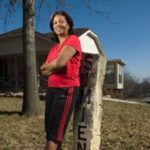
"I'm pain-free for the first time in 20 years and loving it!"
View Story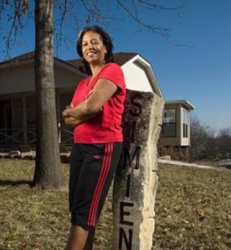
Life Prior to Surgery: Sports were always important in the Simien family. Margaret coached in a women’s volleyball league for 11 years, and her son and daughter played basketball and volleyball, respectively. In fact, Wayne Simien, Jr., played in the NBA and was a member of the Miami Heat’s 2006 NBA championship team. For Margaret, 20 years of chronic back pain came to a head when she turned 60. The constant, grinding pain made sitting in the stands and watching her talented son play basketball in the NBA a very painful experience. Situation Today: Word spread around Leavenworth after Margaret’s successful XLIF procedure, and friends wanted to hear about her experience. Today, she shares how she stopped taking pain pills one week after the surgery and started a walking regimen to build up her strength. At three months post-op, she began swimming, gardening, and doing more chores around the house. Due to her increased activity, she shed 20 pounds and could touch her toes for the first time in years. She even gained an inch back in height. Today, Margaret can not only comfortably watch her grandchildren play basketball from the bleachers, but she can even play a little hoops in the backyard as well.
Stephanie B.

"I don't live with that pain anymore. Nothing stops me now."
View Story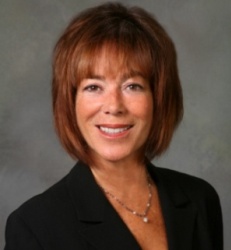
Life Prior to Surgery: Stephanie had difficulty standing or walking as she struggled for months with chronic back pain. She tried conservative treatments such as physical therapy and epidurals, which failed to provide long-term relief. Biking was painful and she could barely walk a block before she’d have to lean against something. Stephanie’s back was steadily getting worse and the pain interfered with her job and her quality of life. Stephanie became accustomed to a life of chronic pain and pressed on with her career, however, she was highly stressed and the pain took a toll on her emotions and health. The debilitating and depressing pain motivated her to seek a surgical solution. Situation Today: Two days after undergoing the procedure, Stephanie walked out of the hospital. She was in good shape, which she feels contributed to a good surgical outcome and a quick recovery process. After a week, Stephanie was behind the wheel of her car driving and, several weeks after surgery, she was walking on a treadmill four days per week. She followed her physician’s recommendations, and by six weeks she was able to resume a normal exercise routine. She experienced some numbness and tingling in her left leg after surgery, but nothing compared to her previous pain. Slowly all the tingling diminished and she is now pain-free and enjoying life more than ever.
Sharon W.

"If I could've had the surgery earlier I would have because it has truly changed my life!"
View Story
Life Prior to Surgery: Sharon struggled with back problems most of her life. At the age of 40, she had a breast reduction but continued to struggle with chronic back pain. She tried to relieve her pain with conservative treatments like physical therapy, pain management, and epidural injections, but the degeneration of her back continued. After a bone density exam at age 60, Sharon was told that she had scoliosis in her lower back and had lost about 2½ inches in height. Her family physician told her that she would most likely be confined to a wheelchair if she did not undergo spine surgery. After meeting with Dr. Anh Le, Sharon felt confident about moving forward with minimally disruptive spine surgery. Situation Today: Sharon underwent the XLIF procedure with posterior fixation on consecutive days, totaling approximately 14 hours in the O.R. She remained in the hospital for six days and then transferred to a rehabilitation hospital, where she learned how to walk again. Sharon was walking eight days after surgery and, although she needed a walker for support, she was able to walk a little farther each day. In addition, Sharon regained her 2½ inches of height after her surgery! Sharon used over-the-counter, rather than prescription, medications to assist in her recovery and had no major postoperative complications. Today, Sharon wakes up each morning and walks almost one mile in the beautiful foothills surrounding her home. She also enjoys spending time with her seven grandchildren, biking, and cooking.
Sandra L.

"What I most enjoy today is-LIVING! So grateful!"
View Story
Life Prior to Surgery: Prior to XLIF surgery, Sandra was in misery and cried getting out of bed every morning because of her unbearable back pain. She couldn’t walk, stand, or sit for long periods of time. After several years of treatment, Sandra’s chiropractor told her there was nothing a doctor could do to alleviate her pain; she just needed to come for adjustments 3-5 times per week. She continued seeing her chiropractor, but the treatments never provided her with long-term pain relief. She also underwent cortisone injections which failed to eliminate the pain. As her pain grew progressively worse, Sandra found herself constantly miserable and unable to do anything—she felt her life was over. When a close friend had a microdiscectomy and recovered well from the surgery, Sandra decided to consult with an orthopaedic surgeon about surgical treatment options. Dr. Burdi diagnosed her with bulging discs and told her that she was a candidate for the XLIF procedure. Despite her own fears and friends urging her not to undergo surgery, Sandra was willing to try anything to relieve the pain. Situation Today: When she woke up after surgery, Sandra could immediately feel that the pain was better. Five hours after surgery, Sandra was walking. Today, she feels great and is grateful for the XLIF procedure and Dr. Burdi. Her one regret is that she waited so long to have her back fixed. Every day, Sandra wakes up pain-free and is able to walk, jog, exercise in the gym, and play sports, including softball.
Ron W.
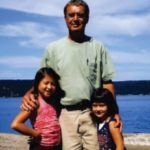
"My life is so much better now. I'm my old self again and so much happier."
View Story
Life Prior to Surgery: For 39 years, Ron worked at a hardware store and lumber outlet, where he helped customers with their remodeling and home repair projects. He lifted his share of lumber and bags of cement over the years, putting tremendous strain on his back. In May 2008, while helping to lift a fishing boat onto a trailer, his back gave out. Anti-inflammatory medications and spinal injections offered only temporary relief. Friends told Ron to avoid back surgery at all costs. Situation Today: Ron was released from the hospital the day after his successful XLIF procedure. Five days later, his wife, Linda, drove him six hours to Portland to celebrate Christmas with their family. “No presents were needed for me,” he said. “I had already received my gift in the form of a new back.” Ron did physical therapy on his own and by the Spring he was back in the lumber yard, bending over, lifting bags of cement, and carrying 2x4s to people’s cars. Best of all, he could resume his favorite pastime: fishing on the deep blue calm water of Diamond Lake in south central Oregon.
Randy N.
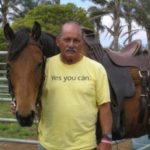
"I'm back to working on the ranch."
View Story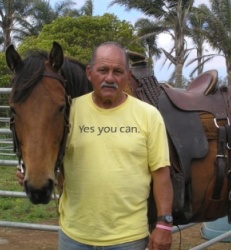
Life Prior to Surgery: Randy was born a rancher, a real cowboy who did everything on the ranch that needed to get done. Decades of intense physical labor took a toll on Randy’s back. One day, while working on a fence line, severe pain radiated from his waist down to his toes. He tried numerous conservative treatments like physical therapy, prescription medications and exercise to relieve the pain, but nothing seemed to work long enough for him to get back to doing what he loved – working on his ranch. His pain worsened to the point where he couldn’t even step over something only six inches tall. Randy decided to consult Dr. Jon Graham and Dr. Morris Mitsunaga, who recommended that he undergo the minimally disruptive XLIF procedure. Situation Today: After a successful surgery, Randy was up and walking after only 6 hours. The sciatic nerve pain in the back of his legs had disappeared and Randy was able to take a shower the same day as surgery. He was released from the hospital in three days and began physical therapy immediately. The rehabilitative treatments became an important part of Randy’s daily routine. His motivation stemmed from a strong desire to return to the daily activities he had enjoyed so much prior to his struggle with chronic pain. Slowly, Randy resumed doing chores around the ranch with no pain in his back. Today, Randy is able to do all of the activities on his ranch, including training his horses.
Penn R.

"If I can ease somebody's fears of surgery, I would be glad to share my story."
View Story
Life Prior to Surgery: Penn struggled with pain for most of his adult life which worsened as the years progressed. After 20 years of consistently taking pain medications for temporary relief, he asked his primary care physician for a referral to an orthopaedic spine surgeon. He sought a consultation with Dr. Rakesh Chokshi nine years ago who diagnosed Penn with degenerative disc disease and recommended that he undergo spine surgery. Penn underwent a multi-level traditional fusion in 2002 which yielded a lengthy recovery period. Although Penn received temporary relief, his back pain returned and prevented Penn from participating in his daily activities and enjoying one of his favorite hobbies, woodworking. Dr. Chokshi then recommended that Penn consider undergoing the minimally disruptive XLIF procedure. Penn felt confident in Dr. Chokshi’s surgical expertise and decided to undergo the surgical procedure. Situation Today: Penn underwent XLIF surgery in July 2011 and walked the same day with assistance. He returned home from the hospital the next day and shortly after began taking daily walks in his neighborhood. Although Penn still struggles with some post-op incision pain, he has resumed most of his daily activities. He looks forward to resuming other physical activities, like woodworking, in the near future!
Mike S.
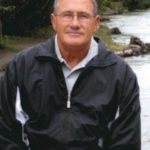
"I was totally debilitated and unable to move or walk; the XLIF procedure gave me my life back."
View Story
Life Prior to Surgery: Mike’s profession as an Activity Supervisor for kids in grades 8-12 at the M.S.S. Doss Youth Center required him to be in top shape. Due to severe degenerative disc disease and stenosis, Mike could barely walk and the intense, chronic pain drained him of energy. Rather than fishing or golfing—activities he enjoyed with his four sons—Mike was often restricted to lying in bed for days because of the pain. In 2004, Mike underwent a traditional spine fusion at L4-5. Although he exercised and took medications and prescription pain pills, at certain points he could hardly breathe because of the agonizing pain. Mike feared that he wouldn’t find any long-term relief until a close friend referred him to Dr. Baldwin. Situation Today: Mike underwent a successful XLIF procedure in April 2010. Within hours, he was walking and returned home the day after surgery. Mike had a complete turnaround. He began walking daily and resumed his passion for playing golf about four weeks after the procedure. He now enjoys working in the yard, running, and interacting with the kids at his Youth Center with ease and comfort. Mike can also finally take his sons on golfing and fishing vacations – something he sorely missed. Today, Mike’s energy is strong, and he is pain free.
Mary P.

"I live an active, independant life; I can go out for lunch and dinner, shop, and travel."
View Story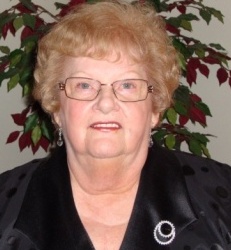
Life Prior to Surgery: Mary suffered from chronic pain due to two fractures in her spine and multiple herniated discs. She underwent spine surgery in 1998, but degenerative disc disease continued to compromise her life and decrease her ability to participate in daily activities. She couldn’t cook, clean, or care for her grandchildren. Mary was in constant pain all day and pain medications and physical therapy failed to provide her with long-term relief. In 2004, Mary underwent triple bypass surgery and heard about Dr. Ronjon Paul and the XLIF procedure. Dr. Paul determined it was too soon after her bypass to undergo spine surgery. Five years later, in 2009, having been told by physicians at the Chicago Neurological Center that the only thing they could do was manage her pain, she returned to Dr. Paul. Situation Today: After undergoing a successful XLIF surgery in March 2009, Mary was walking two days later. On April 1, she went home with a walker and was able to walk without pain by June. Unfortunately, on the day of surgery, Mary’s husband of 45 years was diagnosed with terminal cancer. Because of her successful recovery, she was able to be his caregiver. She had the strength to be with him in the hospital, drive him to doctor’s appointments, and be by his side as he passed. Today, Mary can pick up her grandchildren from school and supervise–and even actively participate in–their activities!
Kathy H.

"Before my surgery, I had no quality of life and now, I am pain free!"
View Story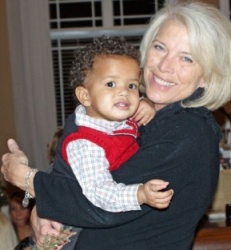
Life Prior to Surgery: Kathy, a tax accountant, endured chronic back pain for years. While working at her desk, Kathy had to get up every hour or she couldn’t stand without agonizing pain shooting from her waist to her feet. She wasn’t able to do seemingly simple activities such as reach up to get a glass from the kitchen cabinet or bend down to do laundry. Kathy had always been active—playing golf, tennis, and exercise-walking several times a week—but for ten years chronic back pain stopped her from participating in these activities. The pain was constant. She couldn’t sleep, finding rest only when sitting in a kitchen chair leaning forward with her head down on the kitchen counter. Kathy couldn’t lift, or even hold, her new grandson unless her daughter put him in her arms. She felt hopeless and depressed until her doctor did an MRI and referred her to Dr. John Cummings. Situation Today: Following XLIF surgery on February 9, 2010, Kathy has been pain-free. Today, she can pick up her grandson and get down on the floor and play with him. She can go to her other grandchildren’s games and birthday parties, and do all the daily activities she used to enjoy. At work, Kathy can sit pain-free. She walks briskly again and completed a diabetes 5K and the Susan G. Komen 5K walk. Kathy believes that she wouldn’t be doing all of these activities if she hadn’t undergone surgery. At 62, Kathy feels that if she can do it, anyone can.
Joseph R.
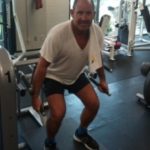
"I am very pleased with the outcome and continue to get stronger through my recovery."
View Story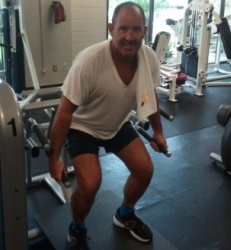
Life Prior to Surgery: Joseph’s pain began in the mid 90’s. He had always been extremely active and loved to run and ride his bike. He had the occasional knee and back problems but it was not until 1996 that he had his first back surgery (laminectomy) from a herniated disc. Joseph managed the pain until 2008, when his back could no longer take the pounding from running. In addition to the lower back pain, Joseph began experiencing a shooting pain in his leg. Joseph’s leg pain was constant whether he was sitting, sleeping and especially driving. Joseph only took over the counter pain medication to try and manage the pain but they provided no relief. He also tried physical therapy which also provided no relief. Joseph’s family physician took an X-ray and saw that he was experiencing pain due to degenerative disc disease. In 2011, Joseph was then referred to Dr. James Bruffey who determined that the L4-L5 the disc was severely damaged and bone spurs had developed, affecting the nerves in my right leg. Dr. Bruffey then recommended an epidural injection. Unfortunately, the injection did not provide Joseph with long-term relief. Dr. Bruffey then recommended a minimally disruptive surgical procedure called XLIF. Joseph did a large amount of research on his own and was even paired with a Patient Ambassador from The Better Way Back program. After speaking with the Patient Ambassador and learning about the procedure, Joseph decided to undergo the XLIF procedure. Situation Today: The morning after the surgery, Joseph noticed that his constant leg pain was completely gone. He was walking the same day and was able to return home just 3 days after his surgery. Joseph did experience some post-op incision pain but the chronic pain in his leg had disappeared. He was able to manage the post-op incision pain with oral pain medications for a couple of weeks. Joseph walked frequently after the surgery to rebuild his strength. Today, Joseph occasionally experiences some back pain which may be due to his arthritis. He enjoys going to the gym and swimming to build is core and physical strength. He is “taking it easy” until the fusion is completely set and knows that in order to make a full recovery, he is going to have to work towards rebuilding his strength.
Anne H.

"My life has been given back to me as I wanted."
View Story
Barbara H.

"I'm back to beading and gardening."
View Story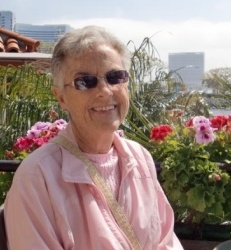
Life Prior to Surgery: Barbara struggled with chronic back pain for over twenty years, which she treated with a variety of non-prescription pain meds and anti-inflammatories. Unfortunately, they provided only temporary relief. The pain eventually prevented her from participating fully in a variety of activities she enjoyed, such as gardening. When her pain worsened, she spoke with her primary care physician who referred her to a back pain specialist. Barbara underwent three epidural injections, but they again failed to provide long-term relief. Barbara was then referred to Dr. James Bruffey, an orthopaedic surgeon, who diagnosed Barbara with severe degenerative disc disease, scoliosis, and stenosis. Dr. Bruffey was confident that he could offer a long-term solution for her pain, and recommended that Barbara consider the minimally disruptive XLIF procedure. Barbara thought about surgery for a couple months and eventually decided to undergo the procedure. Situation Today: In February 2010 Barbara underwent the XLIF procedure, performed by Dr. Bruffey. Her back pain was immediately relieved and she soon recovered from the surgical incision pain. She was up and walking the day after surgery and after about one week post-op was able to walk down the block without the assistance of a walker. Barbara was determined to walk on her own. She started slowly by walking with her husband and increasing the distance each day. By one month post-op, Barbara was back at the gym, walking on the treadmill and using the exercise bicycle. Now, she is able to sit pain-free and enjoy gardening again. Though she experiences some back soreness due to arthritis, she no longer experiences the debilitating back pain that led her to surgery.
Landon L.

"Don’t accept someone saying that you have to live with pain and limitations because you don’t.”
View Story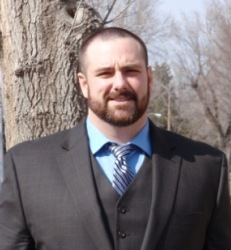
Thomas T.

“I am back to living my life pain-free!”
View Story
Life Prior to Surgery: Thomas was diagnosed with rheumatoid arthritis 20 years ago. Though he did the best he could to ignore the chronic pain, treating it with anti-inflammatory medications, daily activities became increasingly difficult and then nearly impossible. Thomas eventually had an MRI and learned that he had a severe case of scoliosis and stenosis. He tried various conservative treatments, including physical therapy and pain medications, but they ultimately failed to provide long-term pain relief. When Thomas was referred to Dr. J. Scott Price in 2008, he was given two options: a lumbar laminectomy or the XLIF procedure. Thomas, a devoted cyclist, feared a fusion and opted instead for a laminectomy. Unfortunately, Thomas’ pain returned within a year. Eventually he was forced to quit his job because of his excruciating back pain. Thomas decided to undergo the XLIF procedure. Situation Today: Thomas underwent the XLIF procedure followed by a TLIF 3 days later. He walked with the assistance of a walker 2 days after the second operation, and was able to scale stairs near the end of his 12-day hospitalization. When Thomas returned home, a nurse and physical therapist provided home-care and visited him twice a week. Within the first month, he began a walking program and, after 3-4 months, he had walked a total of 90-100 miles. He began riding on his stationary bike in order to rebuild his strength and he is now able to ride 200 miles outdoors each week! Thomas looks forward to resuming all physical activities, especially fly fishing with his son—all pain-free
Adrianne P.

“Dr. Jenis and this surgery saved my life."
View Story
Life Prior to Surgery: Adrianne’s struggle with chronic back pain began two years ago. She always led a very active lifestyle doing activities like yoga, pilates, and walking outdoors. After a health evaluation at her gym revealed that she may have a spine condition, Adrienne met with a chiropractor. After several chiropractic treatments, however, Adrianne began experiencing severe back pain which made even daily activities increasingly difficult. Initially, Adrianne was unable to schedule a consultation with her primary care physician, so she saw a back specialist who recommended physical therapy. To Adrianne’s dismay, physical therapy failed to provide pain relief. Adrianne reached the point where she could barely walk, experiencing both urinary and bladder complications. Finally, after consulting with Dr. Louis Jenis she decided to seek a surgical solution. Situation Today: Adrianne underwent the XLIF procedure in June 2010 and was walking the next day without back pain. She experienced some postoperative incision pain but, after only 2 months, she returned to work full-time. Now, Adrianne feels “100%” and enjoys physical activities, going to the beach with family and friends, and playing with her granddaughter pain-free.
Brad B.

"Having the XLIF procedure was life-changing.”
View Story
Life Prior to Surgery: A congenital degenerative spine condition, aggravated by participating in high school and college sports, set Brad Bennett down a long road of severe back pain. Heat, stretching, anti-inflammatory pain medications, and steroid injections did not relieve the pain. Decompression surgeries in 1995 and 2000 helped for only three or four years. A busy lawyer and family man, Brad could barely stand and walk and was reduced to regularly using a portable chair and scooter for mobility. Situation Today: Following a successful XLIF procedure in 2008, Brad’s recovery started immediately. Committed to rehabilitation, Brad participated in an aggressive formal physical therapy routine three days a week for six weeks and a daily home therapy program thereafter. Approximately seven months after surgery, he was taking short hikes and was about 75 percent recovered. At his one-year post-op anniversary, Brad completed a demanding six-mile hike in the mountains of southern Utah. Today, he’s mostly free of pain, participating in 5K walks, playing catch with his grandchildren, and exercising his body through different physical activities.
Lyn L.

"This surgery has been an absolute miracle."
View Story
Life Prior to Surgery: Over ten years ago, Lyn began experiencing intermittent back pain. Years of overexertion due to heavy lifting and physical activities had taken a toll on her back and, as the back pain progressively worsened, she started looking for various pain relief options. Lyn tried yoga, physical therapy, and stretching, but she couldn’t find relief and would often wake up in the middle of the night with severe pain. Since lying still only exacerbated her pain, Lyn felt like she had to continually move. Eventually, her pain started affecting her moods and relationships with family and friends. She started taking pain medications and tried nerve-block treatments at a pain clinic but, to her dismay, her pain was constant and aggressive. Lyn was hesitant to undergo a surgical treatment because of the numerous horror stories she had heard about spine surgery. Nonetheless, her pain was inhibiting her active lifestyle and she decided she was determined to try anything for long term relief. Lyn spoke with her daughter who works as an anesthesiologist for a spine surgeon to see if she had any recommendations for treatment. Her daughter suggested that Lyn make an appointment for a consultation with the surgeon for whom she works, Dr. Kade Huntsman. During the consultation, Dr. Huntsman told Lyn that he could probably help relieve about 40% of her pain if she underwent spine surgery. Situation Today: Lyn underwent XLIF surgery in March 2009 and walked the same day as her procedure. She started exercising on an elliptical within a couple months of surgery and attended her first yoga class after four months. Lyn attributes her quick recovery to her active lifestyle and now feels like she has “90% less pain”. She has resumed traveling and all her daily activities but is careful not to lift anything heavy. According to Lyn, “I want to shout from the rooftops how wonderful I feel!”
Paul G.

"I feel like the luckiest guy in the world!”
View Story
Life Prior to Surgery Paul, a successful Florida businessman, developed back issues in his twenties as a result of physical labor. For the next decade he endured chronic pain until, at age 39, this active man was forced to use a wheelchair for mobility. Paul was diagnosed with degenerative disc disease, stenosis, and disc herniation; he submitted to a discectomy which failed to relieve his pain. one day, after hearing a TV announcer talk about UFC® Fighter Nate Quarry’s professional comeback following the XLIF procedure, Paul sought out Dr. Juan Uribe for a consultation. Although he was a candidate for XLIF, Paul was hesitant to undergo another surgery. But once Paul realized that his life had become completely compromised by pain, he decided to go forward with the procedure. Situation Today Paul was up and walking two days after surgery, and felt almost immediate relief from pain. He stopped all pain medications after three weeks and, just four months after surgery, Paul was walking five miles per day. Today, still amazed at his transformation, Paul feels better than he did 30 years ago. He is running 5-6 miles per day and working out in the gym. He ran a 10K in Atlanta on the 4th of July in the “Peachtree Roadrace.” With any luck, he hopes to run the New York Marathon in the future!
Helen R.

"I feel like this surgery is a miracle."
View Story
Life Prior to Surgery: Helen’s back problems began 35 years ago when she was washing the ceiling on her back porch and fell off a ladder onto her back. She immediately sought treatment and underwent spinal traction sessions for one week. Unfortunately, they failed to provide Helen with long-term relief. Over the years, Helen’s back pain remained a problem, but became intermittent. There were even times when she would go three to six months without an episode of severe pain. Activities such as housework and gardening, however, became increasingly difficult. When Helen did have an episode, she was unable to walk and was forced to crawl around her house. In an effort to find relief, Helen continued trying nonsurgical, or conservative, treatments including chiropractic care, pain medications, and physical therapy. While these treatments helped alleviate her pain in the short-run, Helen decided that she needed to find a long-term solution. In 2008, Helen scheduled a consultation with a spine surgeon who recommended that she undergo a traditional (open) surgical procedure. She had heard numerous horror stories about patients who underwent traditional surgery and she refused to go that route. Helen therefore continued to pursue conservative treatment, and had a series of epidural injections. They alleviated her pain for about 1 ½ years, but it eventually returned. At the suggestion of a friend, Helen sought a consultation with Dr. Pateder. He informed her that she was a candidate for a minimally disruptive surgical procedure called XLIF (eXtreme Lateral Interbody Fusion). Unlike traditional procedures where the surgeon enters the body from the front or the back, the XLIF procedure entails approaching the spine from the side of the body. This unique approach allows a surgeon to access the anterior spine without the dissection or retraction of the sensitive back muscles, bones, or ligaments. Situation Today: Helen underwent XLIF surgery in May 2011 and walked out of the hospital the next morning without the assistance of a walker or cane. She did not experience any post-operative complications and even played bridge with friends just one week post-op. Three weeks after surgery, she was able to drive her car. Today, Helen is pain-free and off all pain medications. She does regular physical therapy sessions to regain her muscle strength and has resumed all of her daily activities.
Eliza D.

“All I want to do is help people move forward.”
View Story
Life Prior to Surgery: In October 2010, Eliza was driving when a speeding vehicle veered into her lane and collided with her car at 100mph. The only survivor of the accident, Eliza was rushed to the hospital where she was sedated for five days to combat the severe brain damage and spinal trauma. She then underwent an 8-hour XLIF corpectomy procedure performed by Dr. Melissa Macias. For Eliza, surgery was necessary to prevent permanent paralysis. Situation Today: The day after surgery, Eliza was able to walk with the assistance of the hospital staff and a walker. She stayed at the hospital for 2 ½ weeks and then transferred to a rehabilitation center, where she started occupational, physical, and speech therapy. Due to severe brain and spine trauma, Eliza had to relearn how to walk and speak again. Extensive nerve damage from the accident left Eliza with minimal strength in her left quad. Nonetheless, just 2 months post-op, Eliza began an exercise regimen, before starting physical therapy in Corpus Christi. When Eliza’s insurance stopped paying for physical therapy treatments at the beginning of June, she began exercising with a physical therapist/personal crossfit trainer. Now, Eliza works with the trainer 3 times per week and is regaining muscle strength in her leg. Eliza began running again and recently completed a 5k run only 10 months after surgery! She hopes to eventually compete in a marathon.
Rusty T.

"I’m able to walk again"
View Story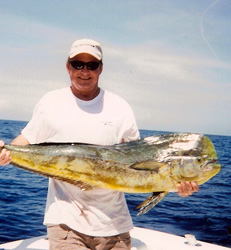
Life Prior to Surgery While his wife, Adriana, was driving Rusty to pick up their daughter from swim practice, Rusty suffered a violent seizure that shattered his L1 vertebra. He was fortunate his spinal cord was not severed, but his motor function was severely compromised. Doctors feared he would never walk again. Situation Today After undergoing a successful XLIF procedure, Rusty’s rehabilitation efforts focused on bending his knees, lifting his feet, and learning how to walk again. Dr. Uribe gave Rusty a list of “don’ts”: don’t lift anything heavier than a glass of milk, don’t try to bend or twist, don’t drive, and don’t overdo it. Rusty listened, and with hard work in rehab for six months after surgery, he had his energy back and greater mobility. Today, Rusty has overcome his devastating injury and can actively participate in his favorite pastime: offshore fishing for sailfish, marlin, and kingfish in the Gulf of Mexico.
Alan H.

"There is light at the end of the tunnel!"
View Story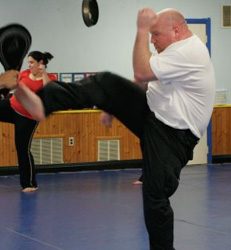
Life Prior to Surgery:
Alan struggled with chronic back pain for over five years before a chiropractor finally discovered his herniated disc. He tried various conservative treatments including physical therapy, epidural injections, and muscle relaxants to alleviate his pain. Alan has always been active in sports and trains police officers in defensive tactics and Mixed Martial Arts (MMA), but his pain eventually intensified to the point where such normal activities for him were compromised. Alan found himself lying on the floor for multiple days at a time, unable to move, and felt his life spiraling downward. After watching Nate “Rock” Quarry’s comeback MMA fight and hearing him speak about his journey to recovery from chronic back pain after the XLIF procedure, Alan began to research minimally disruptive spine surgeries.
Situation Today:
Following successful XLIF surgery, Alan was walking the same day as the procedure and was able to scale a flight of stairs the next day. Two weeks after surgery, Alan was walking five miles on his treadmill. Now, he has full mobility and only minimal sciatic nerve pain from previous damage. Alan is able to enjoy activities such as exercising, MMA, hunting and spending time with his children. He is even training to run a 5K in the near future.
Candice B.

"I’m back to biking and hiking without pain."
View Story
Life Prior to Surgery Candice has been a runner and hiker her entire life, but her active lifestyle was threatened two years ago when she began experiencing numbness in her left knee. Eventually, she developed chronic pain in her quad and hip area which radiated to her lower back. As her pain worsened, Candice had to give up her favorite athletic activities and limit her mobility at work. Though Candice did physical therapy and made regular visits to a chiropractor, this conservative treatment only provided temporary pain relief. Candice grew increasingly discouraged and sought a consultation with Dr. Michael Burdi, who recommended the minimally disruptive XLIF procedure. At the time, Candice feared having fixation hardware in her spine and instead underwent a laminectomy on December 28, 2009. Although this procedure provided pain relief for a couple months, Candice’s pain soon returned. Hesitant but desperate to find a long-term solution for her pain, Candice decided to undergo surgery. Situation Today Candice was walking the next day and experienced no post-operative complications after undergoing the XLIF procedure. Today, four months post-op, she feels like she is “100%” better. Candice has resumed her active lifestyle, and is now cycling, running, hiking, and weightlifting. She is now able to travel with her husband pain-free and leads a highly active life!
Heidi B.

"I'm smiling once again and I'm so grateful for this procedure. Pain no longer inhibits me."
View Story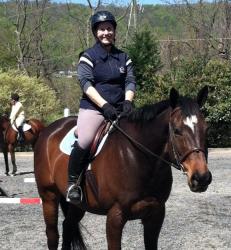
Life Prior to Surgery: Heidi struggled with back problems for several years but, about 3½ years ago, the pain became chronic. She had always led an active lifestyle but reached the point where she couldn’t run or enjoy exercise classes anymore. “I realized something was seriously wrong when I could no longer jump rope,” recalls Heidi. As it became harder for her to exercise, Heidi noticed that her back muscles became weaker. She tried chiropractic treatments, physical therapy, and pain medications but, to her dismay, these methods failed to provide long-term pain relief. Heidi also tried multiple epidural injections and pain management for an entire year. Only one epidural provided relief but, unfortunately, her pain returned with a vengeance about three months later. Eventually, Heidi’s pain progressed to the point that she could not even move her right foot. Heidi was referred by a friend to Dr. Thomas Mazahery. “When I first met Dr. Mazahery, I fell in love with him,” says Heidi. “He treated me with respect and wasn’t condescending like other doctors I’ve consulted with. Dr. Mazahery understood my situation and was sympathetic.” Heidi felt comfortable with Dr. Mazahery who understood her desire to resume an active lifestyle. When Dr. Mazahery diagnosed Heidi with spondylolisthesis and recommended the XLIF procedure, Heidi decided to pursue the surgical treatment. Situation Today: Heidi underwent the minimally disruptive XLIF procedure in February 2011 and immediately noticed that she could feel and move her right foot again. Heidi walked extensively throughout her recovery. “The more walking I did, the better I felt and I was careful to follow Dr. Mazahery’s recommendations very carefully,” explains Heidi. After 10 days, Heidi resumed her work as an accountant and, to her delight, she was able to horseback ride 2½ months post-op, with the blessing of Dr. Mazahery. Today, Heidi rides constantly and is pain-free.
Anita C.
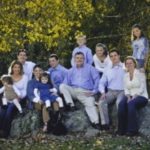
"I'm just delighted about how this surgery has changed my life!"
View Story
Life Prior to Surgery: Anita’s struggle with chronic back and leg pain began over two years ago. She tried various conservative treatments like physical therapy and epidural injections, but nothing provided her with long-term pain relief. Her pain worsened to the point where it radiated from her lower back, down through both her legs. Anita was forced to wear braces on her legs, use orthopaedic shoes, and walk with the assistance of a cane due to extreme pain and instability. Additionally, Anita couldn’t enjoy recreational activities like yoga or exercising. Anita feared that her pain would inhibit her ability to play with her young grandchildren and grew increasingly desperate to find a long-term solution. She sought a consultation with Dr. Corey Wallach who recommended the XLIF procedure. Although Anita was anxious about the prospect of surgery, she felt comfortable with Dr. Wallach and the idea of a minimally disruptive procedure. Situation Today: After surgery in December 2010, Anita was walking immediately and went home after a few days. Although she struggled with some post-operative surgical incision pain, she immediately noticed that her chronic back pain had disappeared. Anita did not have to take pain medications after leaving the hospital but she did wear a back brace daily for about two weeks as a precautionary measure. She has seven grandchildren and a large family who supported her throughout her recovery. Just one week after surgery, Anita was able to enjoy the Christmas holidays with her family pain free! After two months, she was able to dance again and is now able to care for her mother who lives with her family in Virginia. Anita is grateful that she can enjoy an active lifestyle and play with her grandchildren.
Coye T.
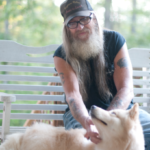
"I feel better now than I have in 8 years."
View Story
Life Prior to Surgery: Coye’s back pain began about ten years ago and gradually worsened. He originally tried to manage the pain with traditional treatments like epidurals, physical therapy, and pain medications. Unfortunately, these conservative treatments failed to provide Coye with long-term relief. Coye sought a surgical treatment and underwent two lumbar spine procedures. To his disappointment, the surgeries yielded a lengthy recovery process and failed to provide him with long-term pain relief. Coye’s pain in his lower back and neck persisted and inhibited his ability to participate in daily activities and enjoy hobbies like working in his shop and riding his motorcycle. In October 2010, Coye underwent a cervical procedure performed by Dr. William Hunter. Coye found relief from the cervical procedure, but Dr. Hunter recommended that Coye undergo the XLIF procedure to treat his lower back pain. At the end of 2010, Coye had to change health insurance companies, and the XLIF surgery that Coye planned for February 2011 was denied. After a lengthy and frustrating appeal process, Coye was finally able to obtain coverage for his medically indicated lumbar fusion surgery. Situation Today: On September 8, 2011 Coye underwent his long-awaited XLIF surgery with Dr. Hunter. Within a couple hours after having the procedure, he was walking. Coye returned home the next day and, over the next few months, walked multiple times per day and enjoyed treadmill exercises. Coye looks forward to being able to work in his shop again, where he enjoys fixing motorcycles and cars. He is also very excited to get back on his motorcycle. “I feel better now than I have in 8 years”, says Coye. “I look forward to enjoying everyday life. I had no life through this whole process and I was in constant pain. Even at just one week post-op, I’m confident that I will be able to get my life back!” Coye works as a Pastor and stayed positive and faithful throughout his entire journey to recovery. He thanks “God and modern medicine” for his recovery.
Betty B.

"I feel almost 100% better and I have my life back."
View Story
Life Prior to Surgery: Betty’s back problems began in 1999 after injuring herself while working as a deli manager. She heard a “pop” in her back while bending down to lift some food. Although she felt immediate back pain and consistently struggled with soreness after this incident, she continued to work. Betty tried numerous conservative treatments like acupuncture, physical therapy, and pain medications in an effort to relieve her pain. She sought a consultation with an orthopaedic surgeon and underwent a posterolateral fusion in July 2000. To Betty’s dismay, the surgery failed to provide relief and her pain worsened, forcing her to retire and go on permanent disability. She then underwent numerous epidural injections which provided temporary relief, but her pain eventually reached the point where Betty could barely walk, sit, or stand for long periods of time. Betty’s pain inhibited activities like going to her grandson’s baseball games and watching movies. Finally, Betty’s pain management doctor referred her to Dr. Clement Jones who diagnosed Betty with severe degenerative disc disease and recommended that she undergo the XLIF procedure. At that point, Betty was willing to try anything for long term relief. Situation Today: Betty underwent XLIF surgery followed by a posterior spinal fusion in March 2011. She walked the day after surgery and, although she struggled with some post-operative incision pain, it eventually subsided. Betty spent a total of 6 days in the hospital after her second procedure and, to her delight, she was able to walk daily and was able to go a little farther every day. Within a couple days, she was able to walk up and down her block. Today, Betty is walking 2 miles/day and can now enjoy activities like going to the movies with her grandchildren, walking, and long road trips. She looks forward to going on camping trips again with her family!
Carole P.

"I feel so good since surgery with Dr. Eastlack!"
View Story
Life Prior to Surgery: Carole’s struggle with back pain began on January 9, 2011, when she heard a "pop" in her back while gardening. She immediately felt excruciating pain that radiated down her back and right leg. Carole first sought treatment with a chiropractor, and took pain medications and muscle relaxers. To her dismay, the pain intensified to the point where Carole could barely walk, sleep, or sit without severe discomfort. When epidural injections failed to provide long-term relief, Carole scheduled a consultation with Dr. Robert Eastlack who recommended the XLIF procedure. Situation Today: After surgery, Carole was up and walking within a few hours. She experienced some discomfort in her left leg immediately following the surgery but felt no pain in her right. One month later, Carole was walking one mile per day and driving. She attributes her recovery to her daily routine of walking and light weight lifting. Just two months after surgery, Carole was able to return to work full-time as a corporate assistant. Now, Carole walks about four miles per day and hopes to resume swimming in the near future!
Claire U.

"My surgery with Dr. Tohmeh has allowed me to live the life that I want to live, pain free!"
View Story
Michael P.

"I look forward to watching my grandson play baseball once I am fully recovered."
View Story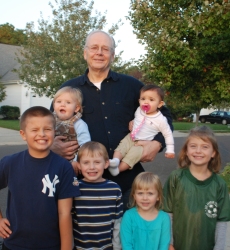
Life Prior to Surgery: Michael struggled with chronic back pain for most of his life, and it worsened when he turned 60 years old. At that point, he sought a consultation with Dr. Roy Vingan who recommended that he undergo a laminectomy. After this procedure, Michael’s pain was temporarily relieved but, to his dismay, the pain returned. He tried conservative treatments, like physical therapy, for several months. He also tried epidural injections and pain medications like hydrocodone pills and oxycotin. He hated taking pain medications every couple hours and felt they inhibited his ability to work and only masked his pain. Michael eventually reached the point where he was hunched over and struggled with nerve pain that radiated down both of his legs. He was unable to walk more than 100 feet without being forced to stop and rest. When Dr. Vingan recommended the XLIF procedure, Michael was willing to try anything for pain relief and felt comfortable that this procedure used a minimally disruptive technique. Situation Today: In February 2011, Michael underwent an XLIF procedure performed by Dr. Roy Vingan and Dr. Criscitiello. He walked within a couple days and left the hospital after 5 days. Michael was transferred to a nursing and rehabilitation center for 11 days where he continued to walk and started physical therapy exercises in order to rebuild his strength. Michael immediately knew that his chronic pain had been significantly reduced. Although Michael still struggles with some muscle soreness in his hips, the extensive nerve pain has disappeared. Michael stopped taking pain medications at the end of March, just under 2 months after his operation. He now feels great and continues with physical therapy to maintain his strength. Today, Michael enjoys visiting and playing with his 6 grandchildren without severe pain and is very thankful for Dr. Vingan.
Kathleen M.

"I'm back to giving thanks."
View Story
Ingrid B.

"I can now play with my kids without being in pain."
View Story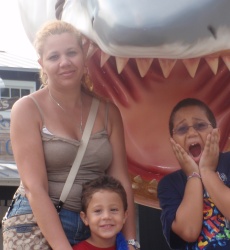
Life Prior to Surgery: Ingrid’s struggle with back pain began after she was rear-ended during a car accident. She tried both chiropractic treatments and physical therapy, but her pain eventually worsened to the point where it radiated down her lower back, through her buttocks and down her left leg. She went from leading an active lifestyle with her 2 small children (ages 5 and 10) to a sedentary lifestyle. To her dismay, Ingrid was unable to play with her children, sleep (due to discomfort), and walk long distances without severe pain. She felt helpless and became increasingly depressed as her pain affected her personal and professional life as a paralegal. Ingrid sought consultations with multiple doctors who all diagnosed her with sciatica. She found epidural injections painful and ineffective. In April 2011, she underwent a discectomy but still struggled with pain after surgery. When Ingrid was referred to Dr. Daveed Frazier, he recommended the minimally disruptive XLIF procedure. Although Ingrid was wary to undergo another spine procedure, the alternative to XLIF would have been an open front-back fusion likely requiring a lengthy hospital stay and recovery process. And, unlike most other spine surgeons, Dr. Frazier was able to perform the XLIF surgery as an outpatient procedure in a surgery center. Situation Today: Ingrid underwent outpatient XLIF surgery in July 2011 and went home three and a half hours after the procedure. She had some post-op incision pain but she immediately noticed her back and leg pain had disappeared. Ingrid no longer limps and can sleep comfortably. She returned to full-time work after one month, and hopes to start dancing merengue, salsa, and Zumba again in the near future!
Jim O.

"With the correct patient receiving the correct procedure by a skilled surgeon, there can be a successful outcome."
View Story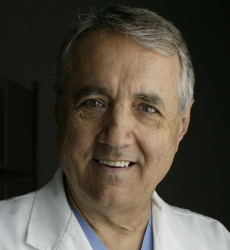
Life Prior to Surgery: As an orthopaedic spine surgeon, Dr. Jim Ogilvie has seen many individuals suffering from chronic back and leg pain. He also understands the benefits that surgery may provide for patients. Unfortunately, Jim learned firsthand what his patients face when his chronic pain resulted in a lumbar discectomy eleven years ago. The operation provided temporary relief but, eventually, work and his active lifestyle were compromised. The pain interfered with Jim’s sleep patterns and other basic activities like sitting in a chair and driving. Jim tried physical therapy and took non-prescription medications, but found little relief. Ultimately, he recognized the seriousness of his condition and sought a consultation with Dr. Kade Huntsman, who recommended the XLIF procedure. The complication rate, recovery, and fusion success rates of the XLIF procedure, coupled with the expertise and experience of Dr. Huntsman, confirmed Jim’s decision to go ahead with the operation. Situation Today: The morning after his surgery, Jim was walking and returned home. He experienced groin pain on the side of the surgical approach, but that eventually disappeared. After four weeks, Jim began his regular exercise routine with the exception of bending and lifting. At six weeks, his postoperative pain was significantly minimized. Today, he is confident in his recovery and has resumed activities like biking, hiking, and lifting weights.
